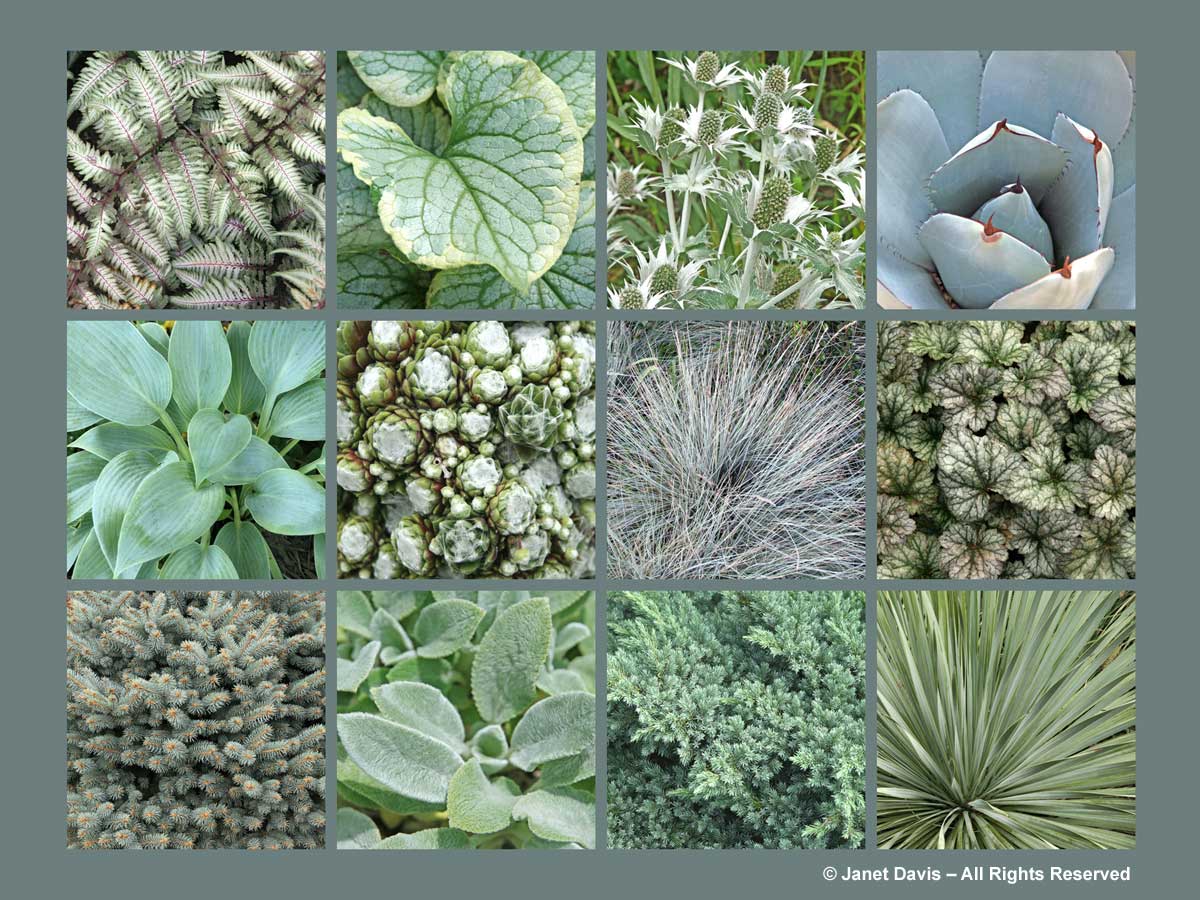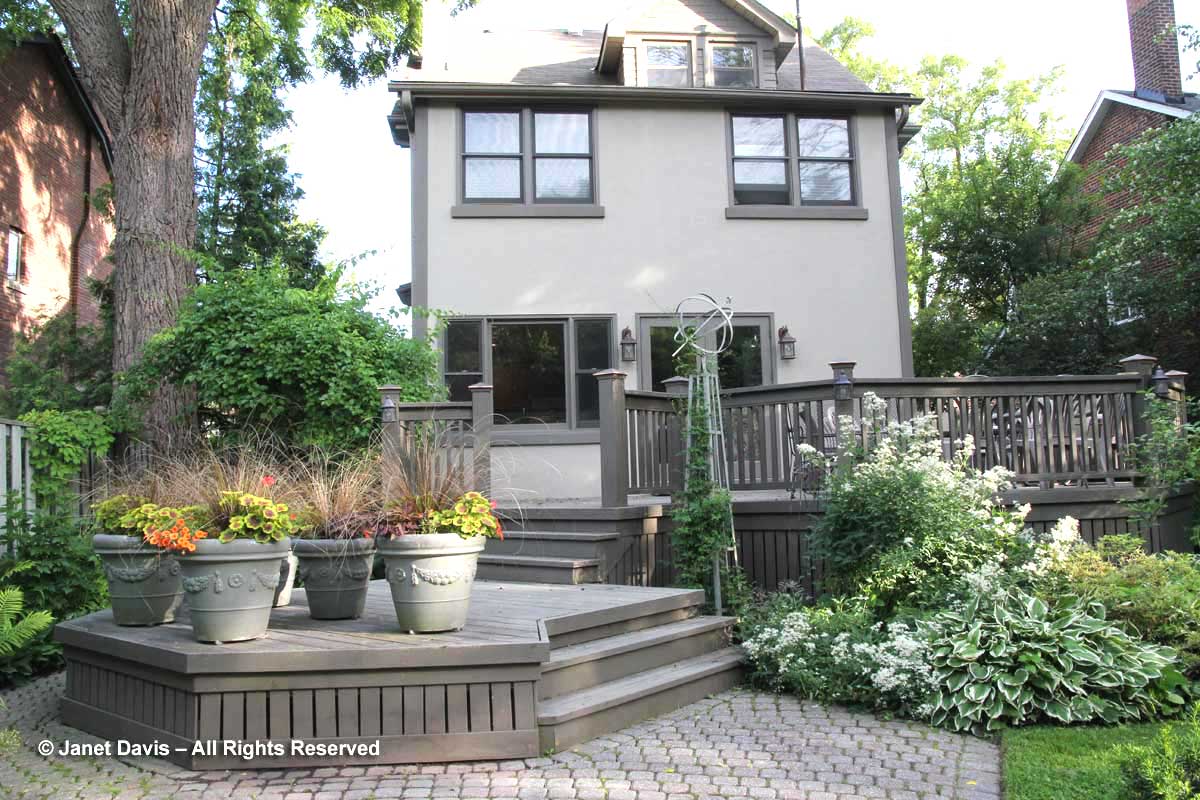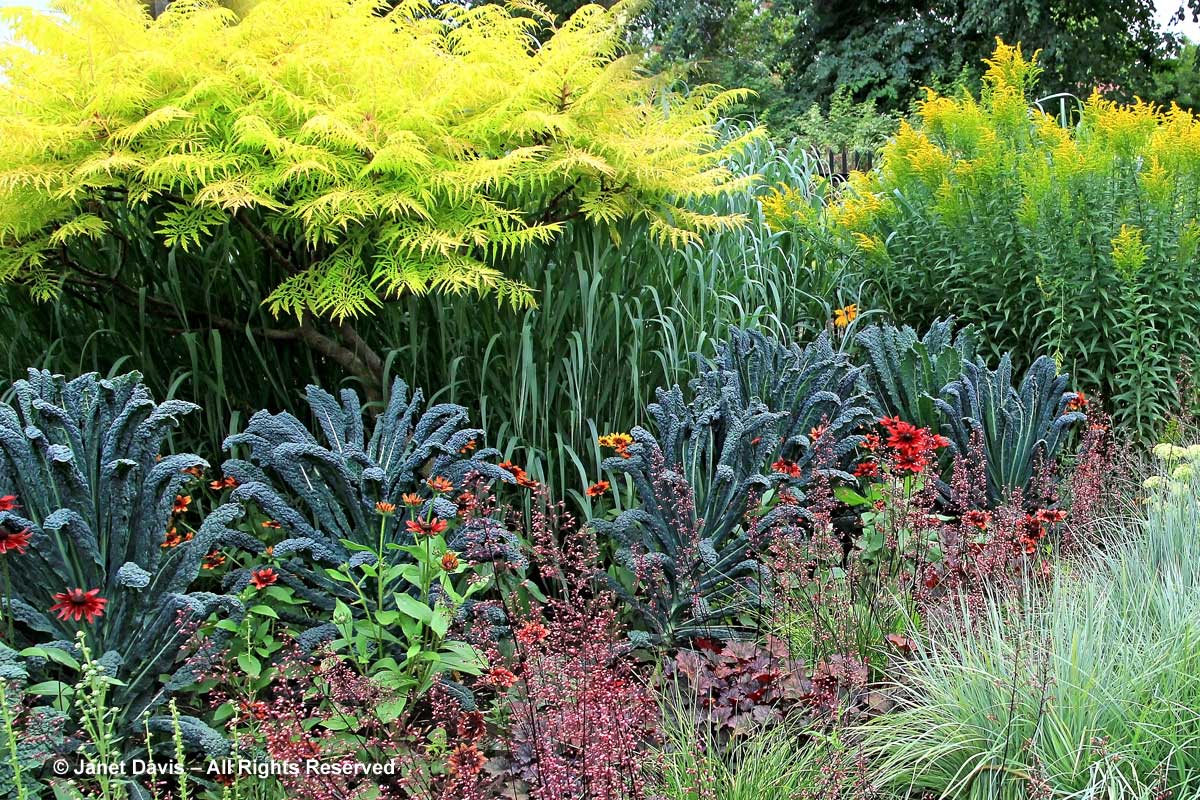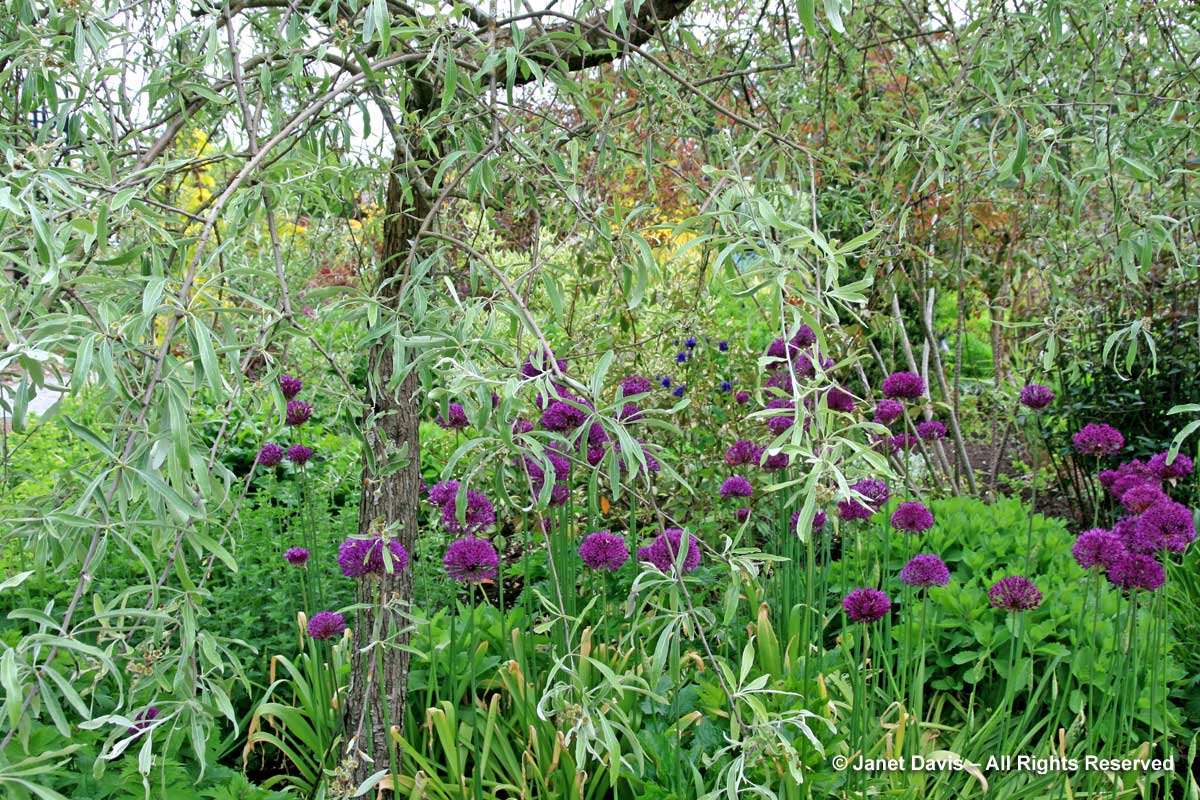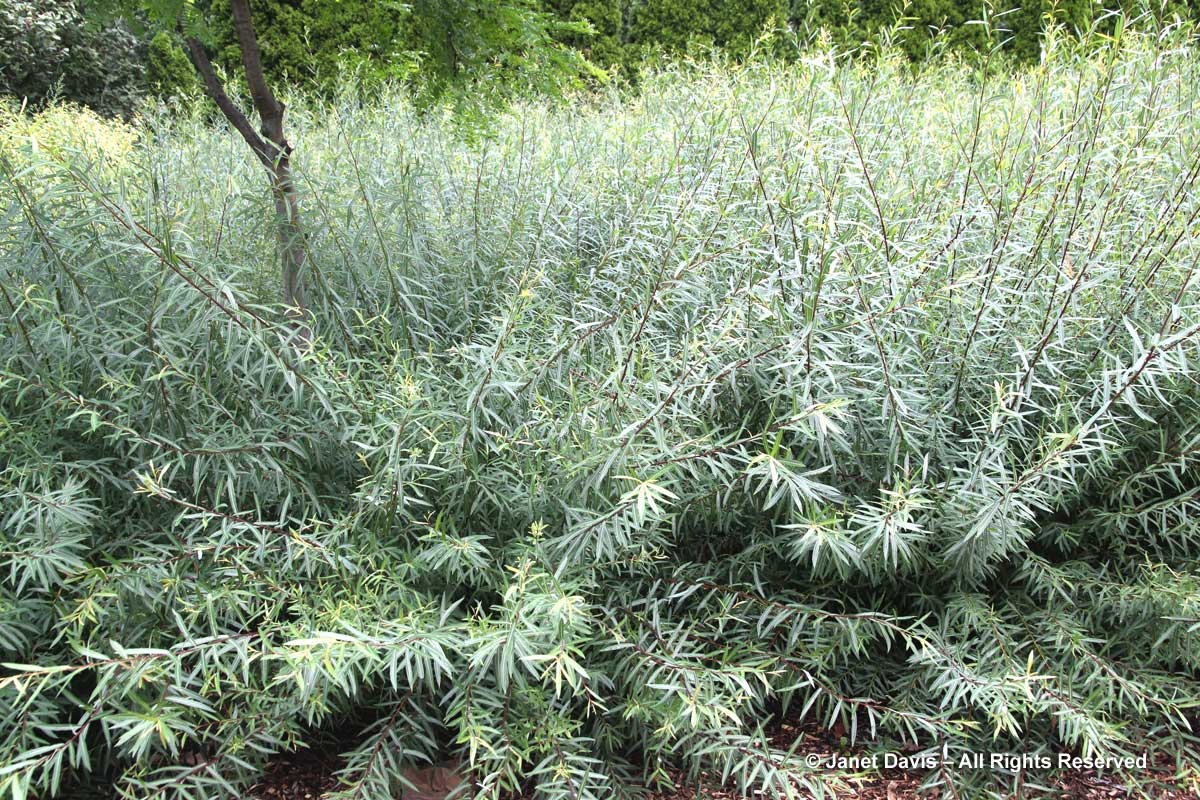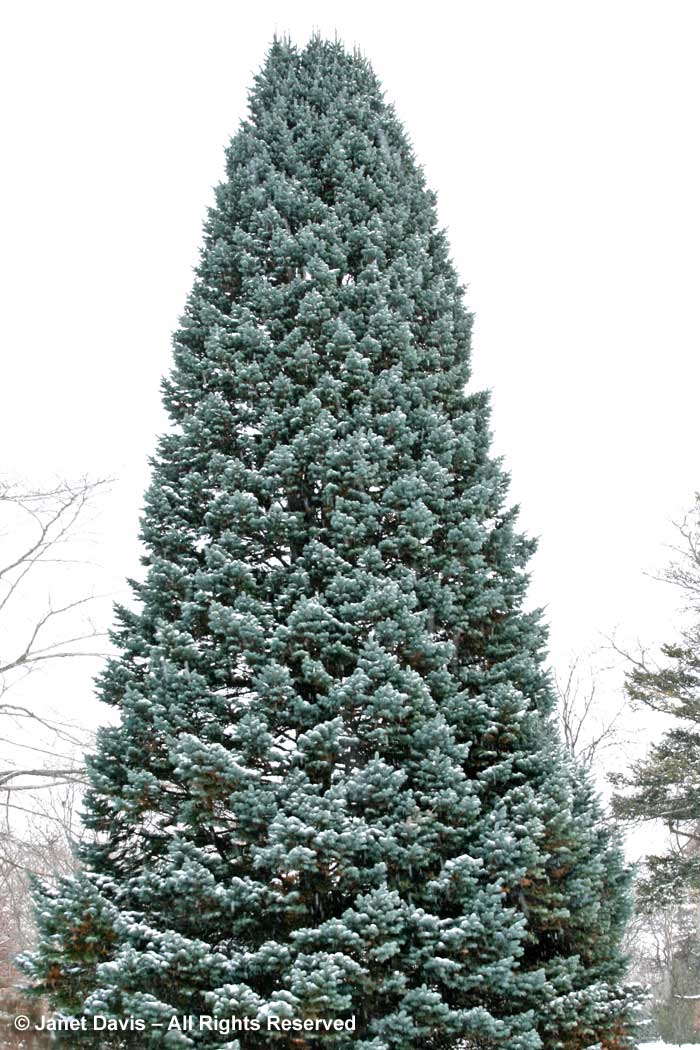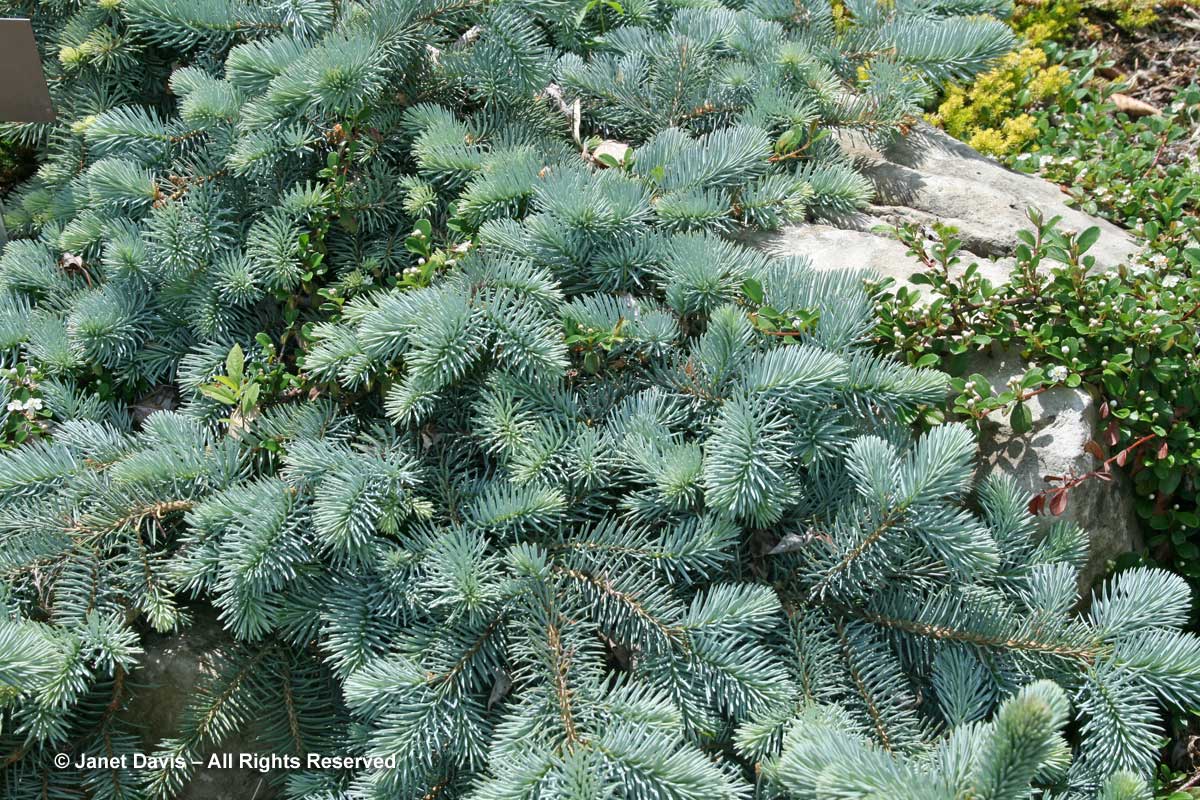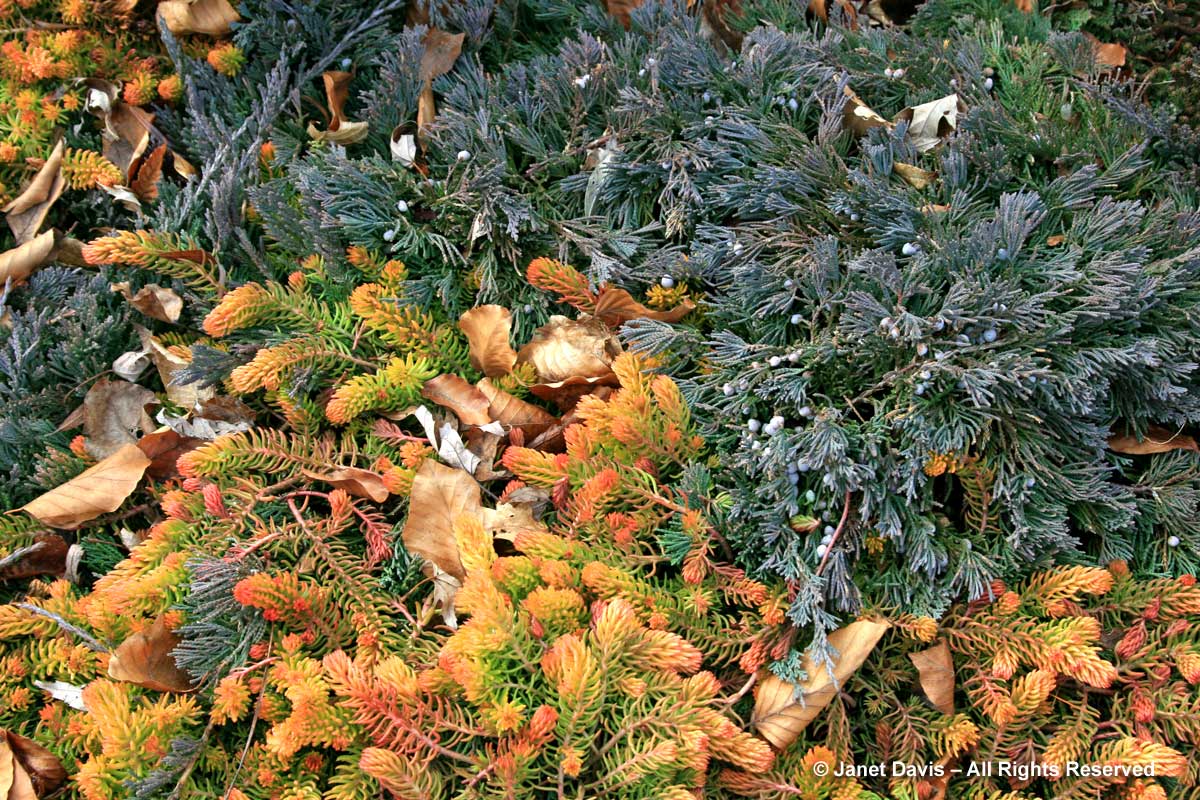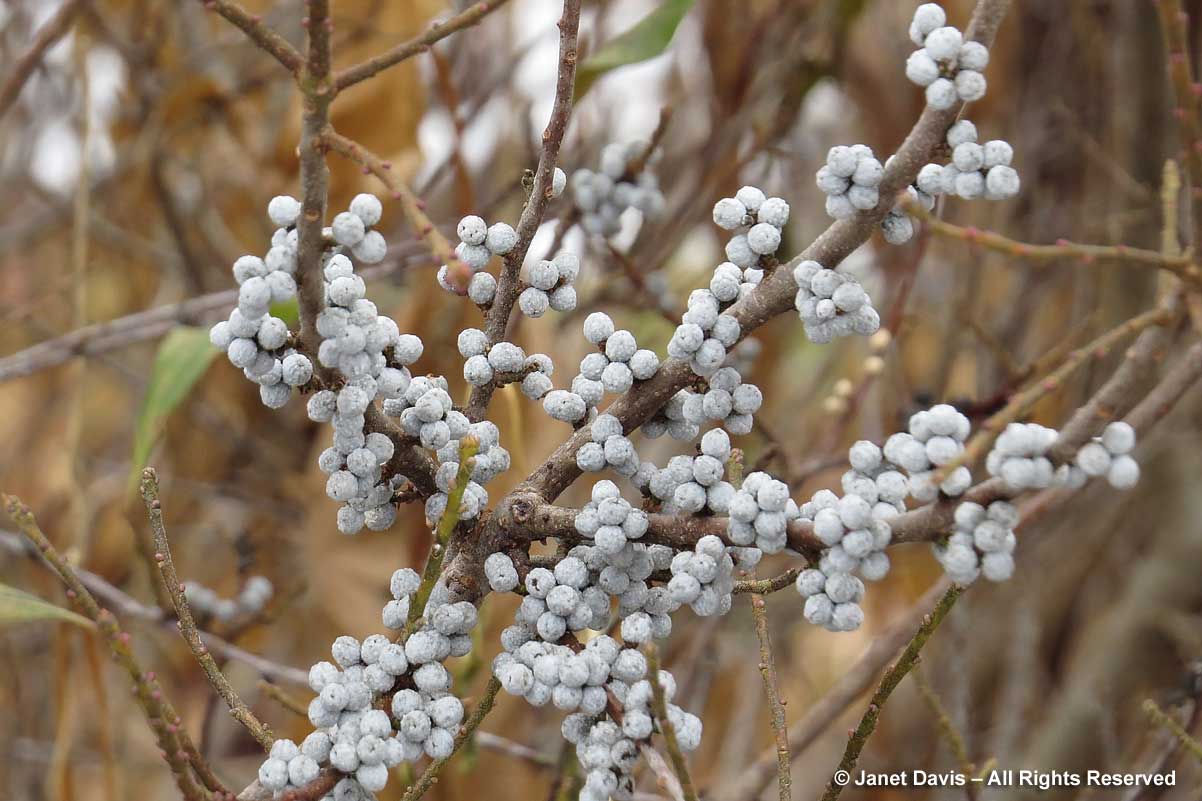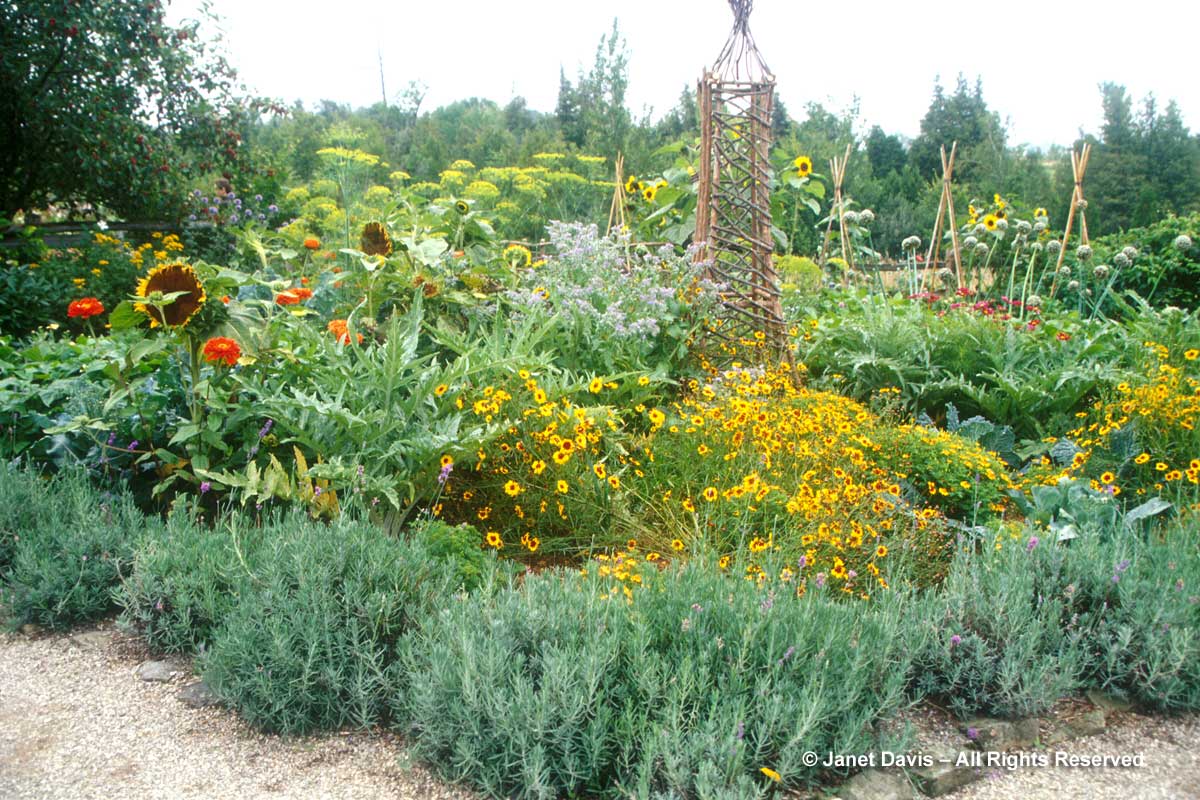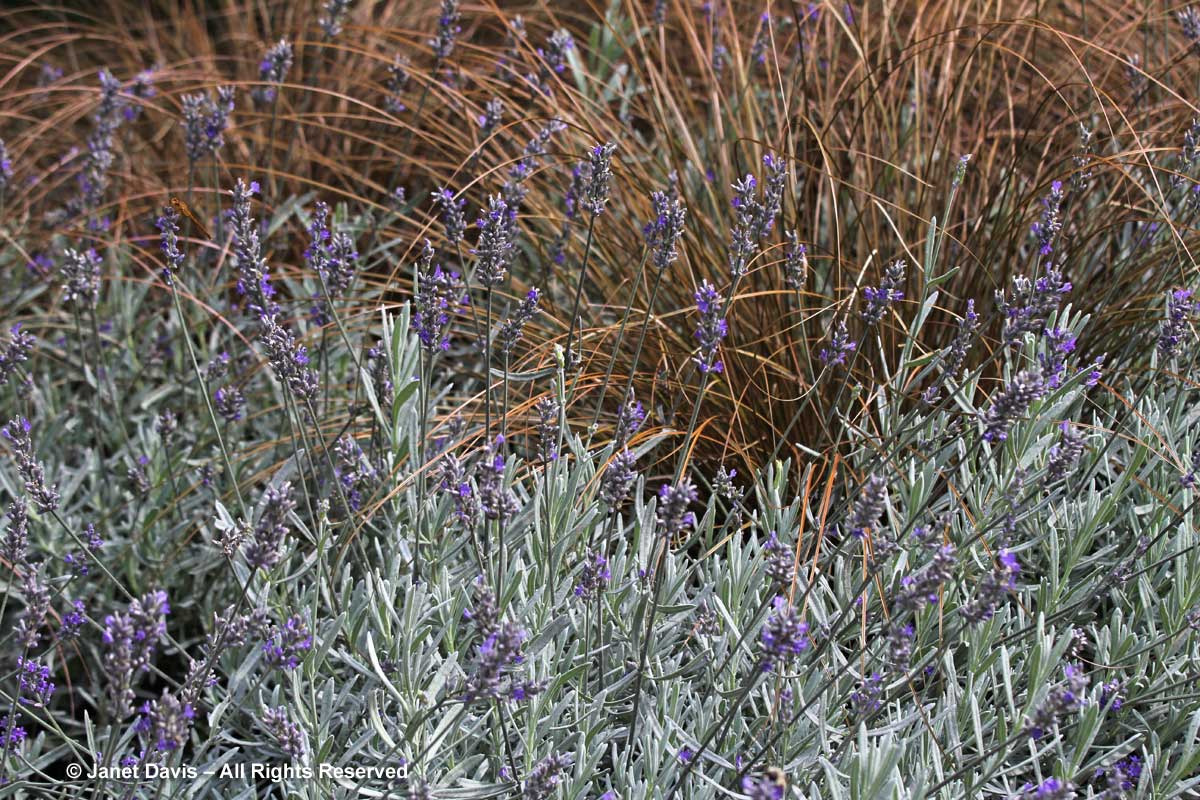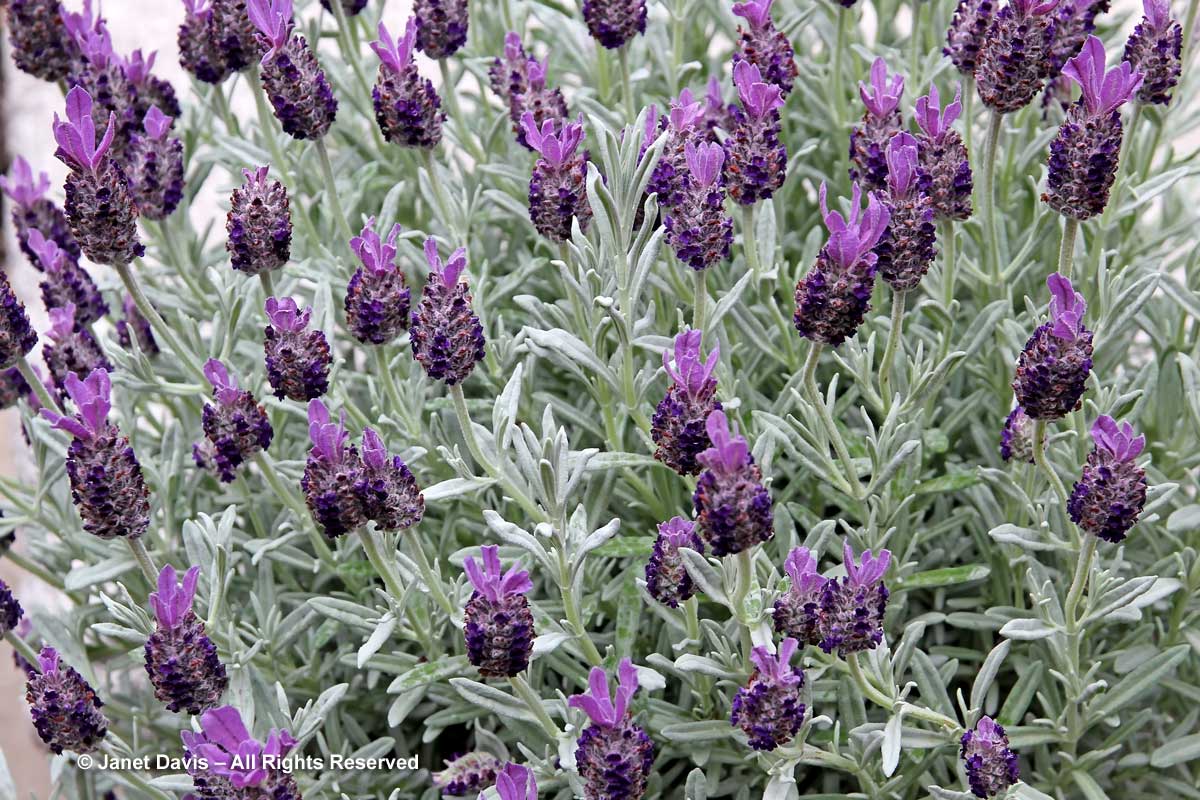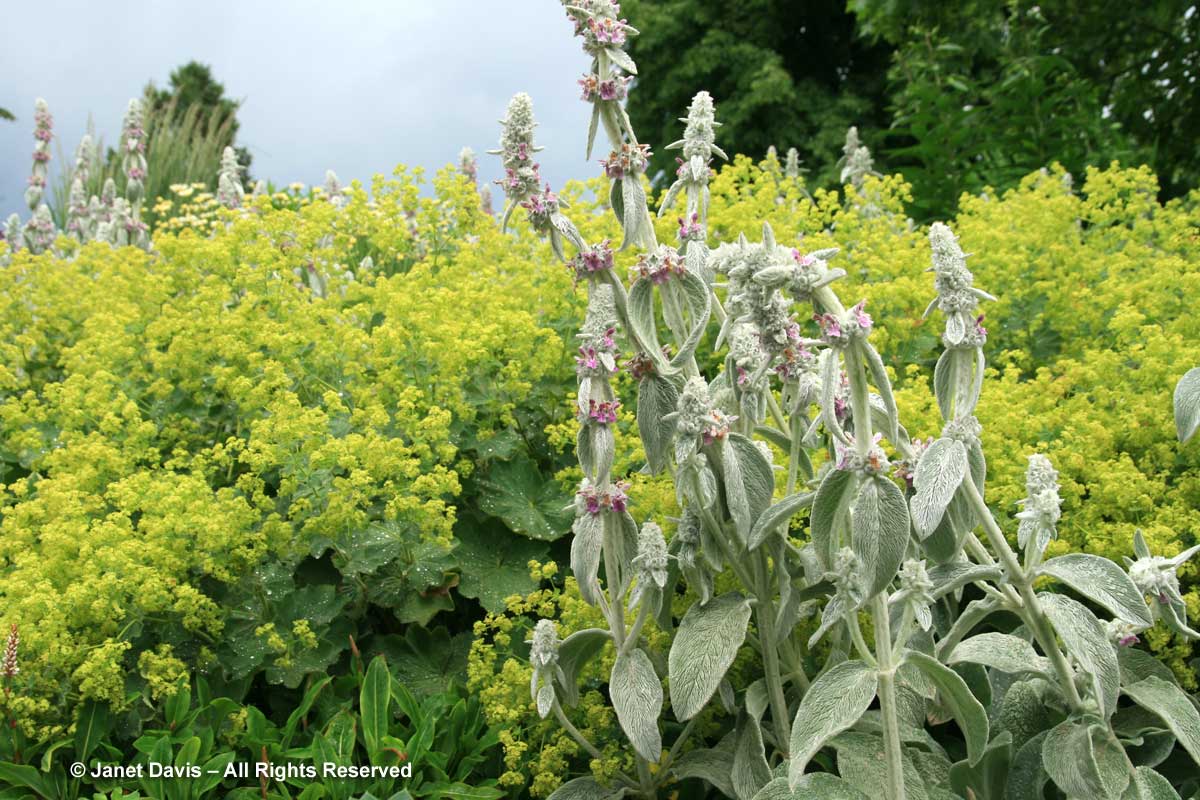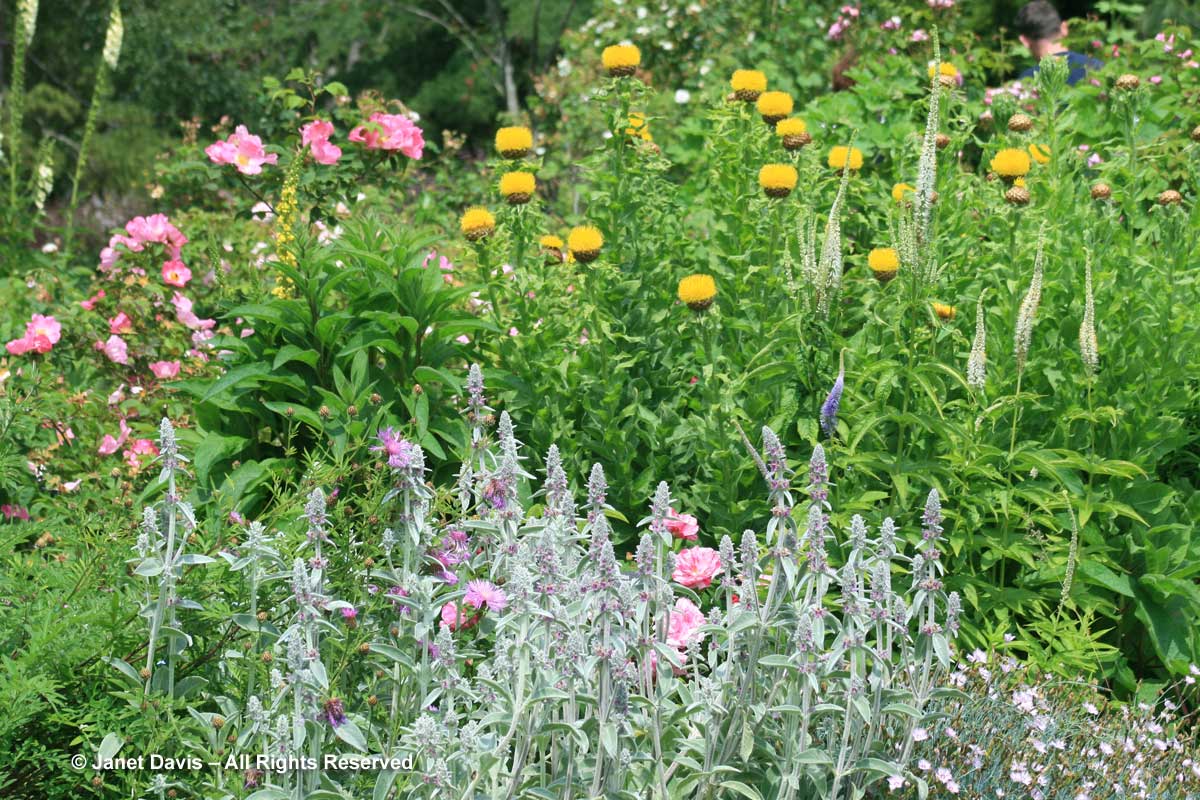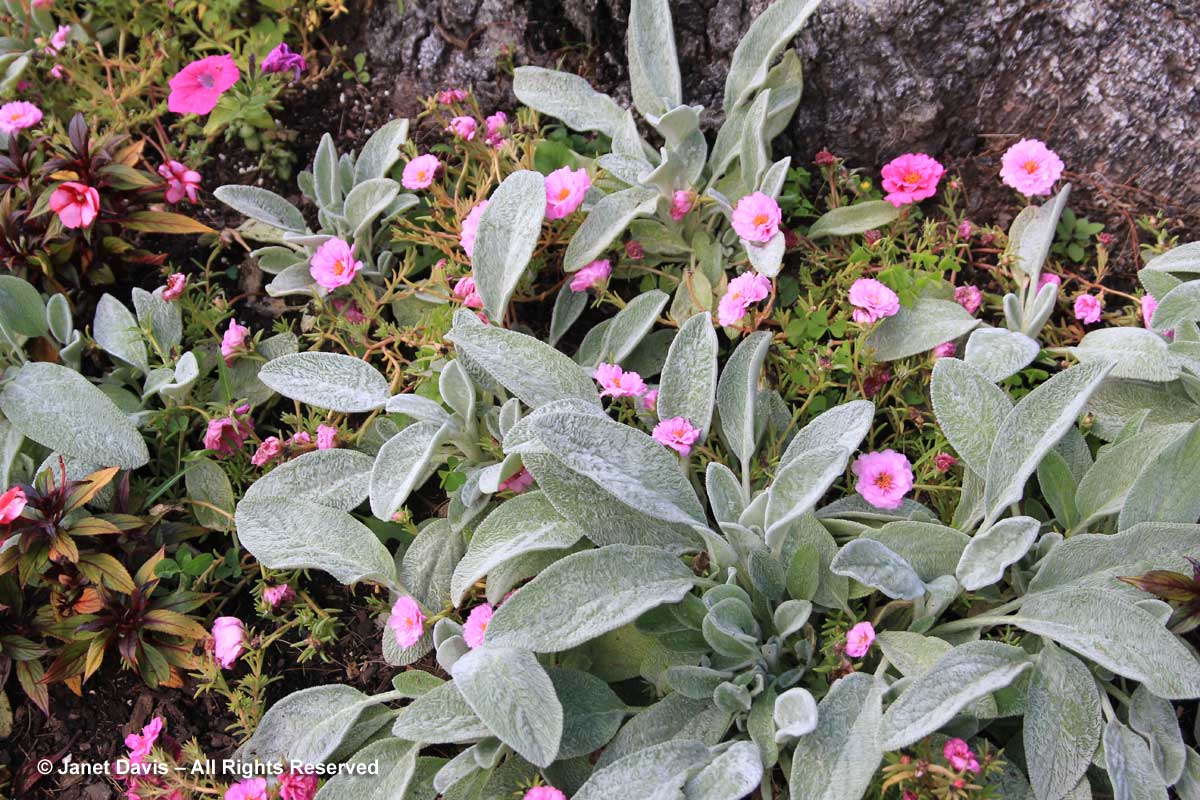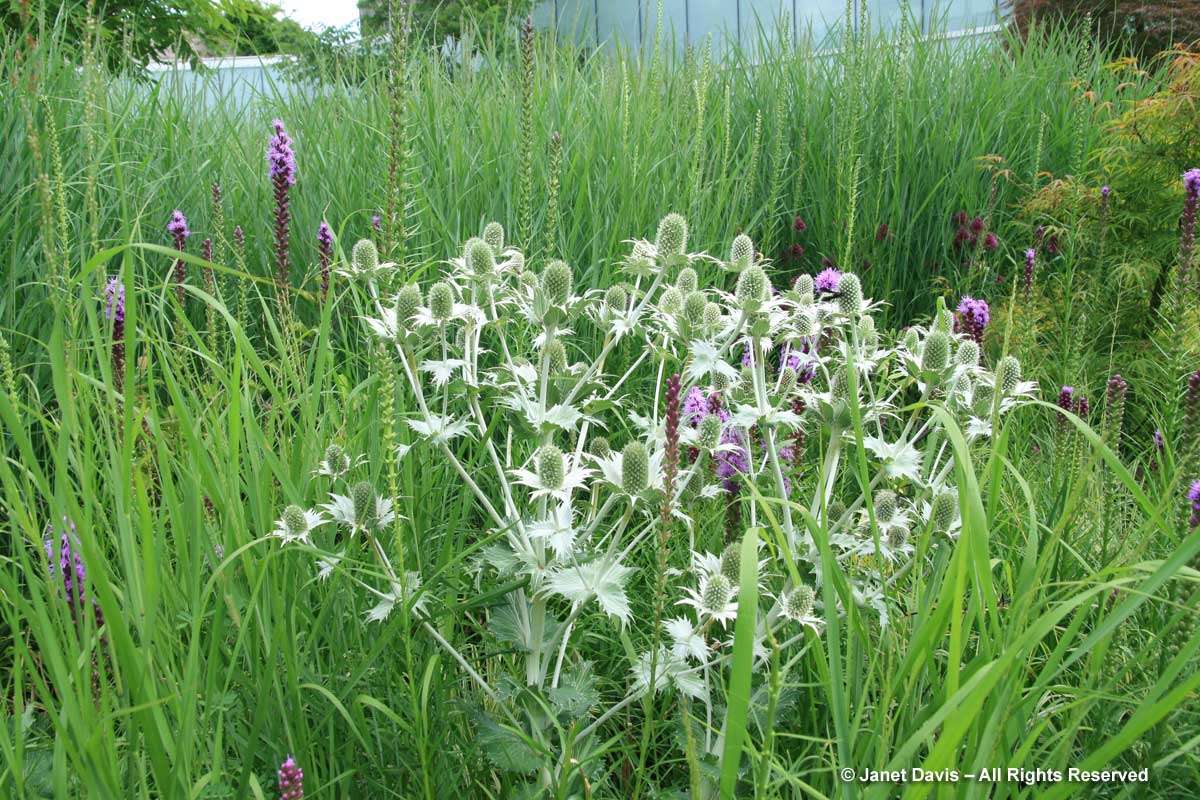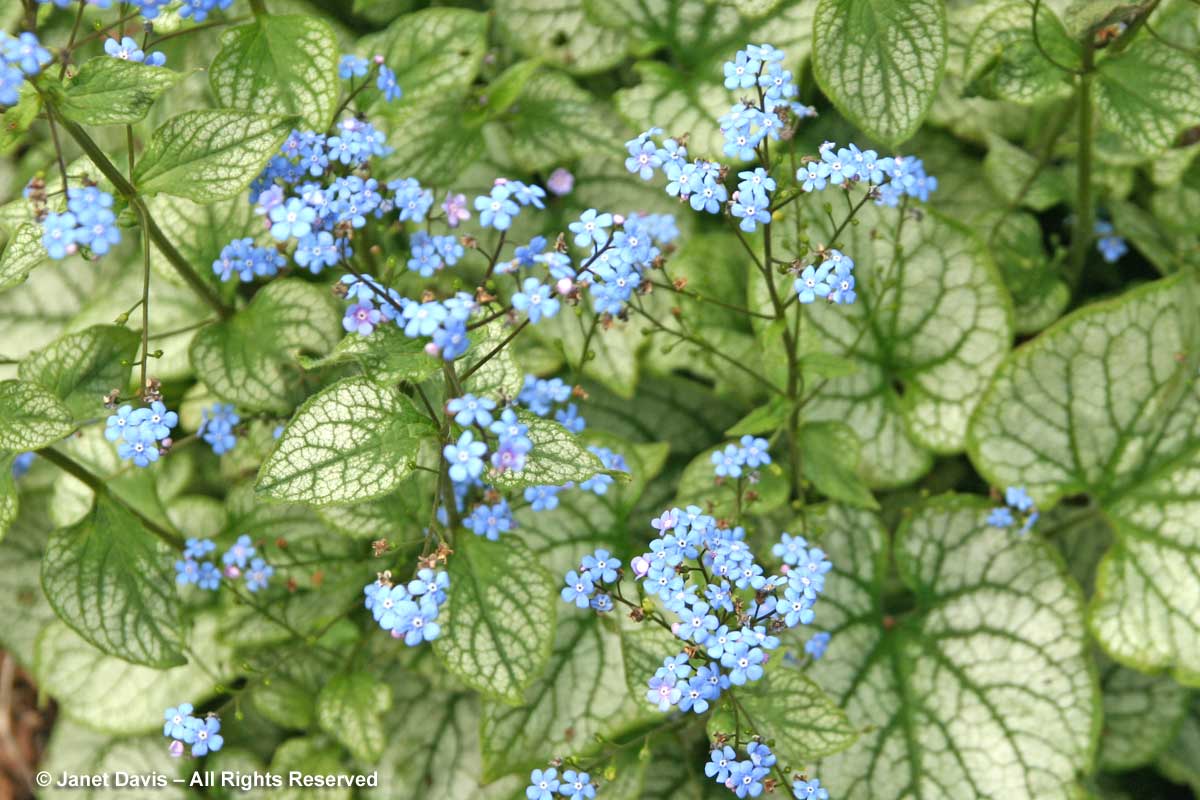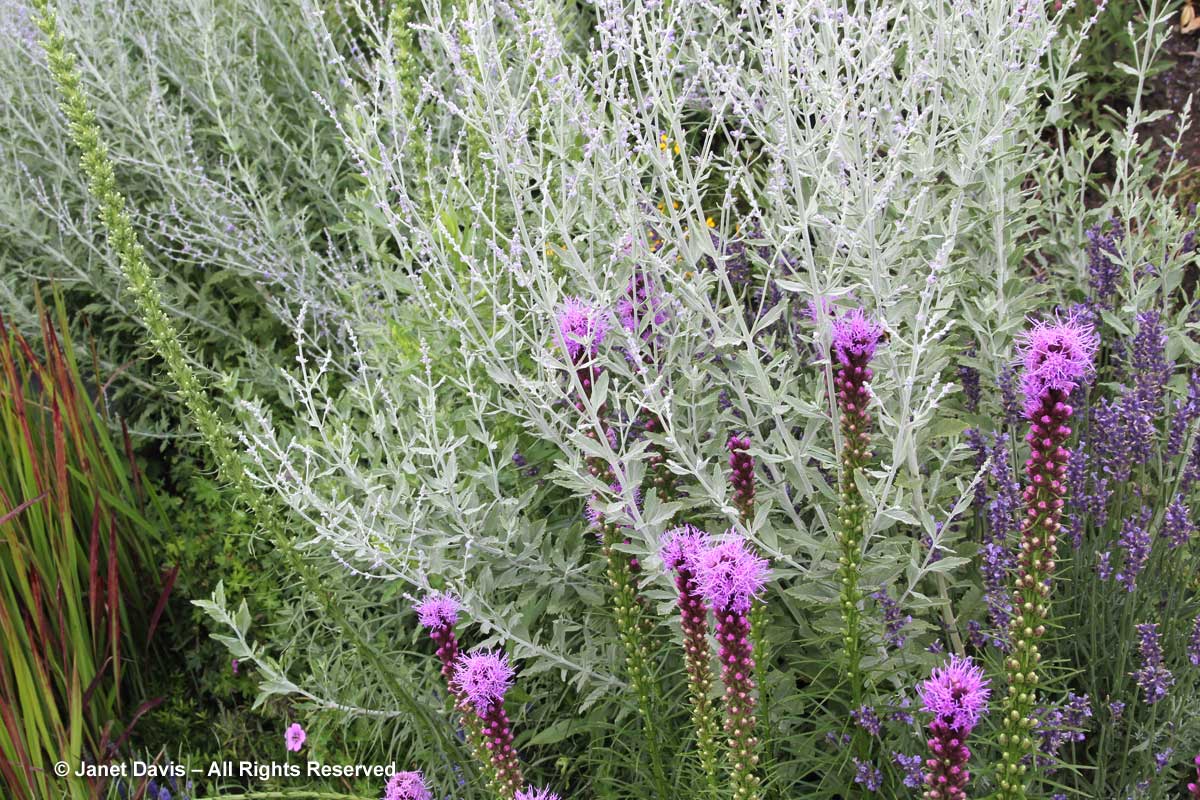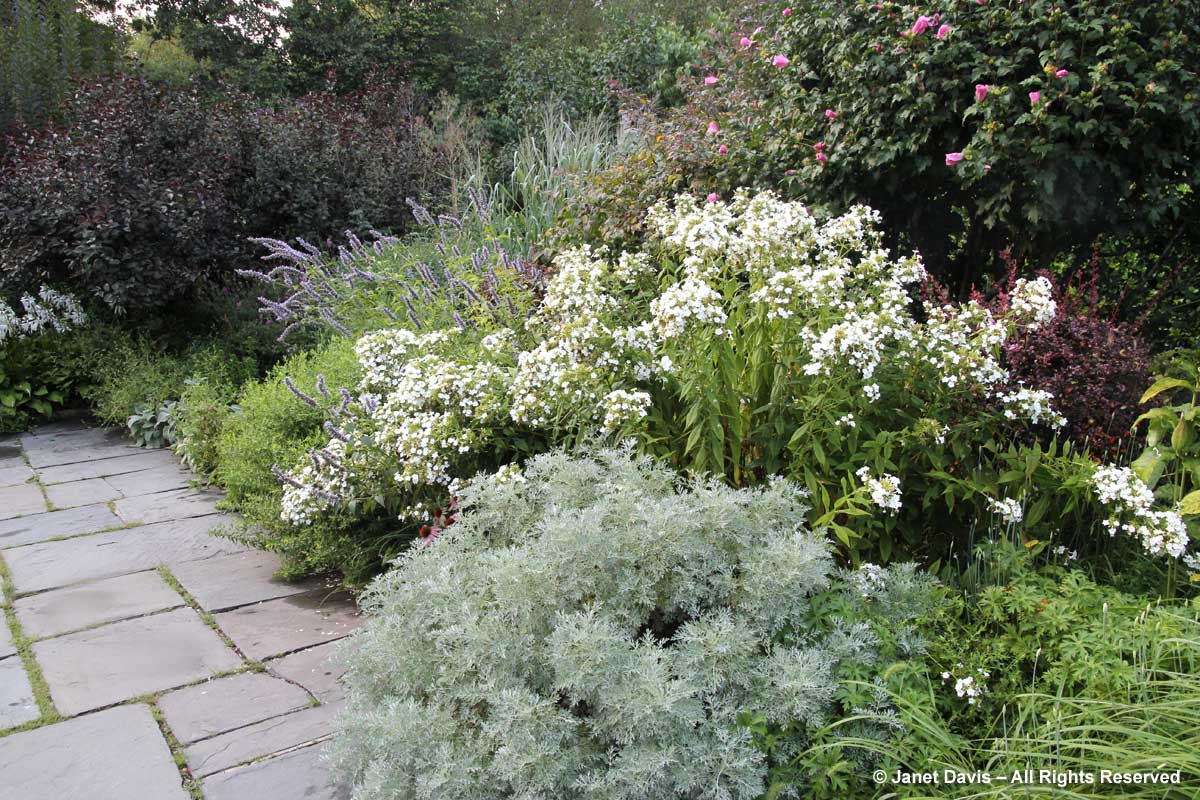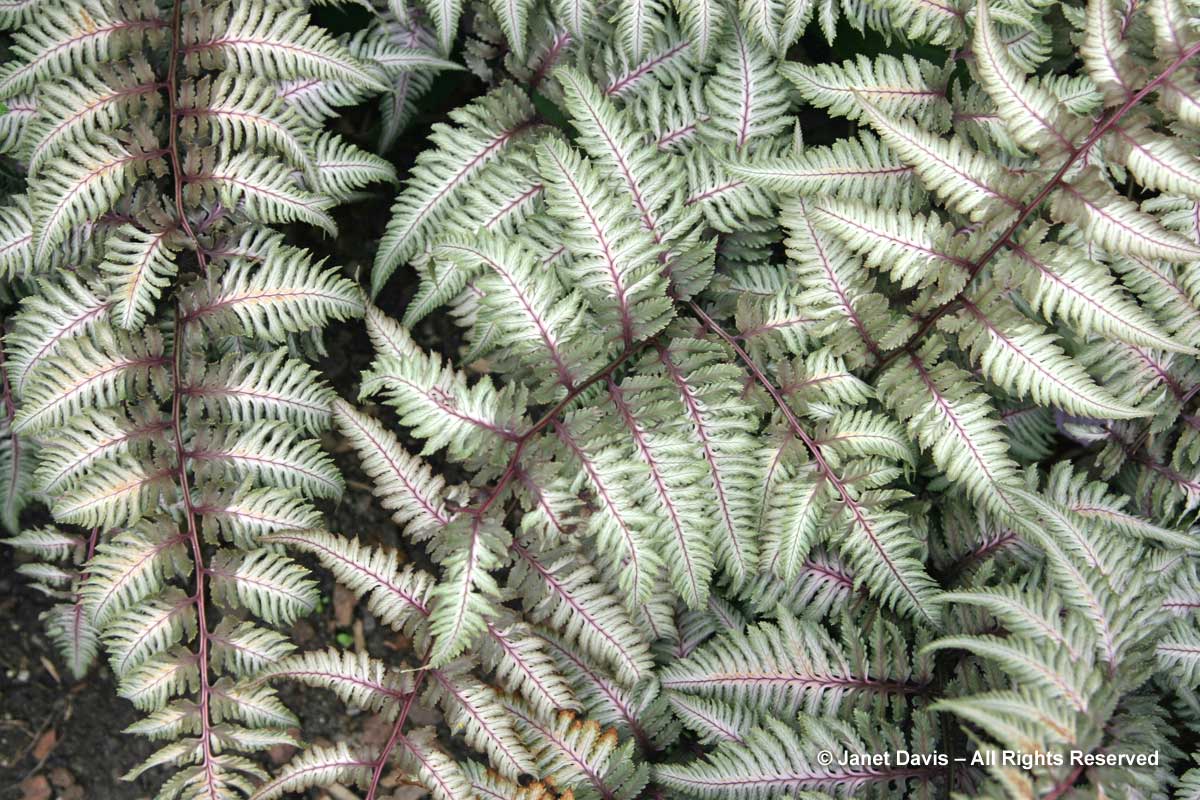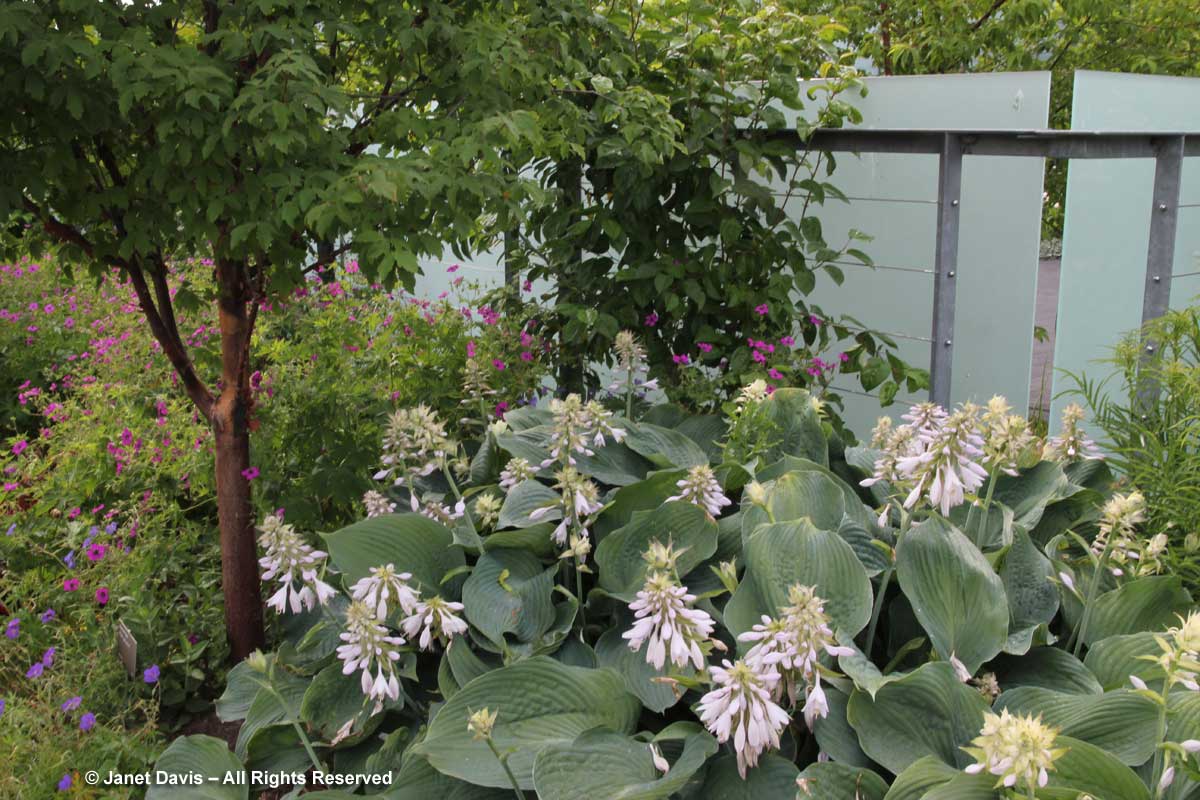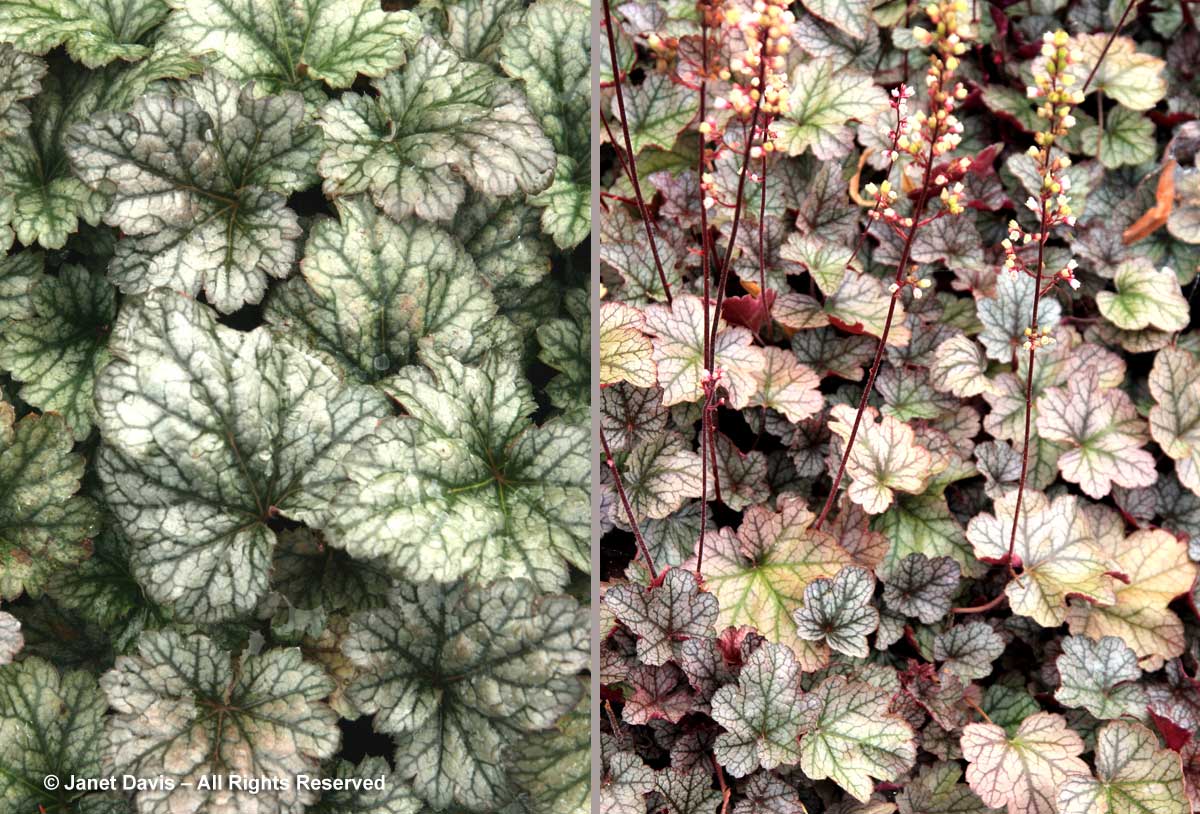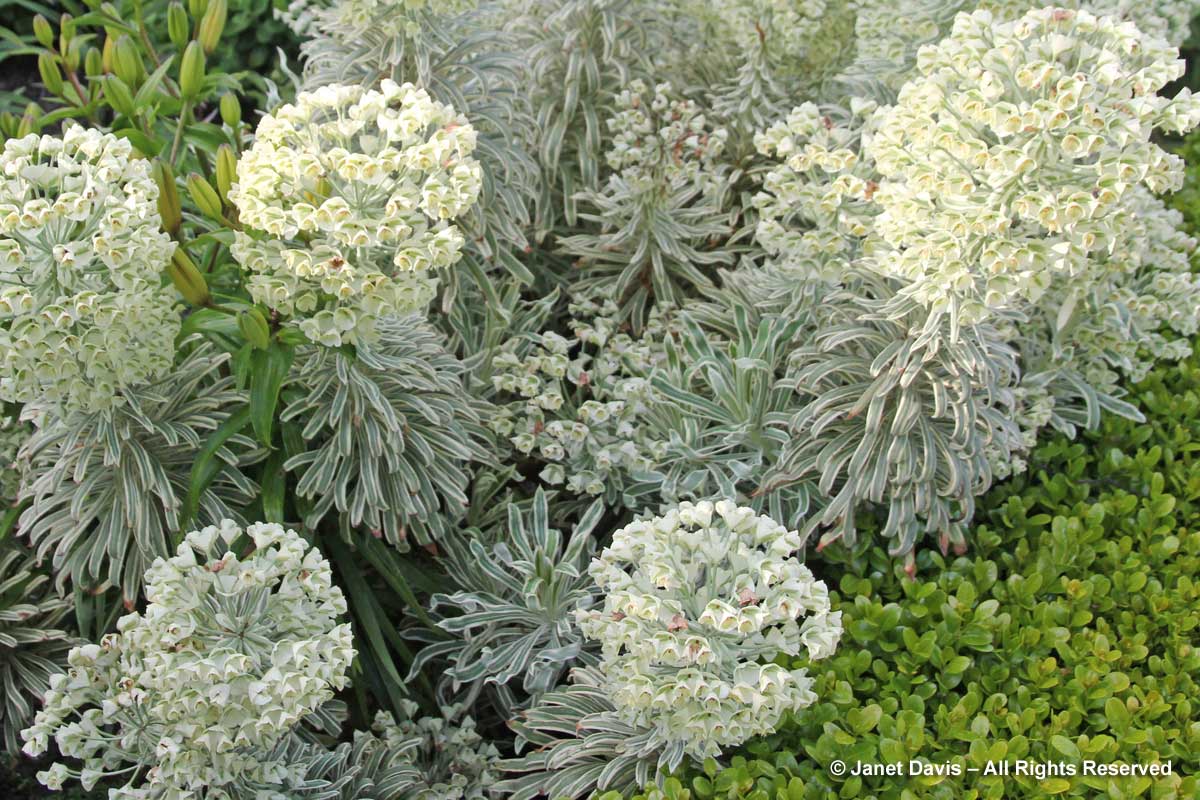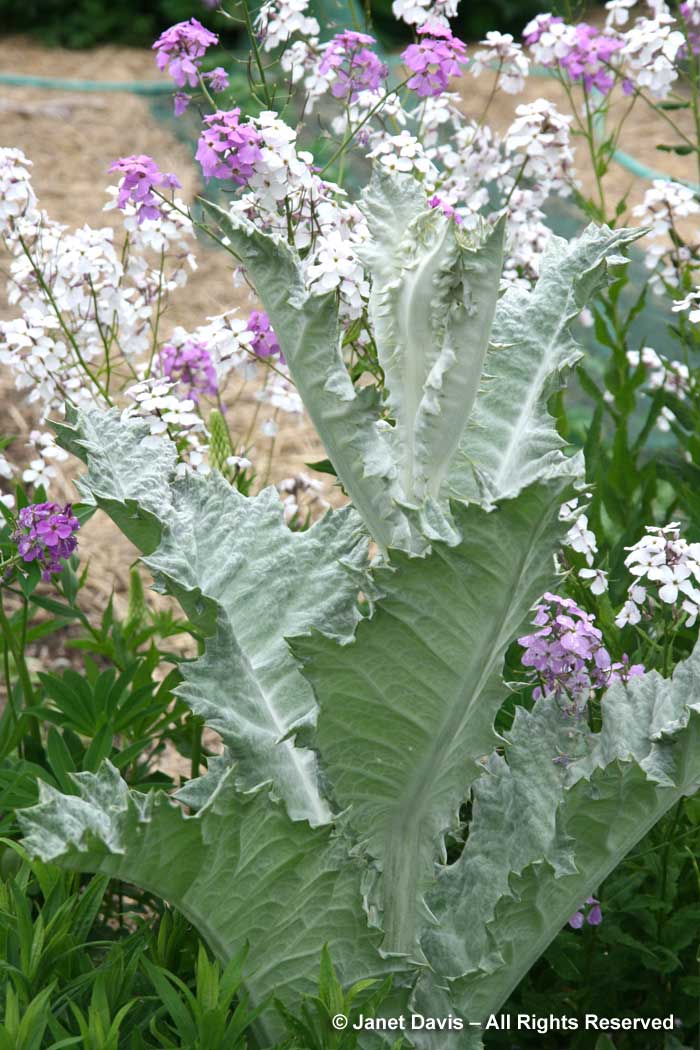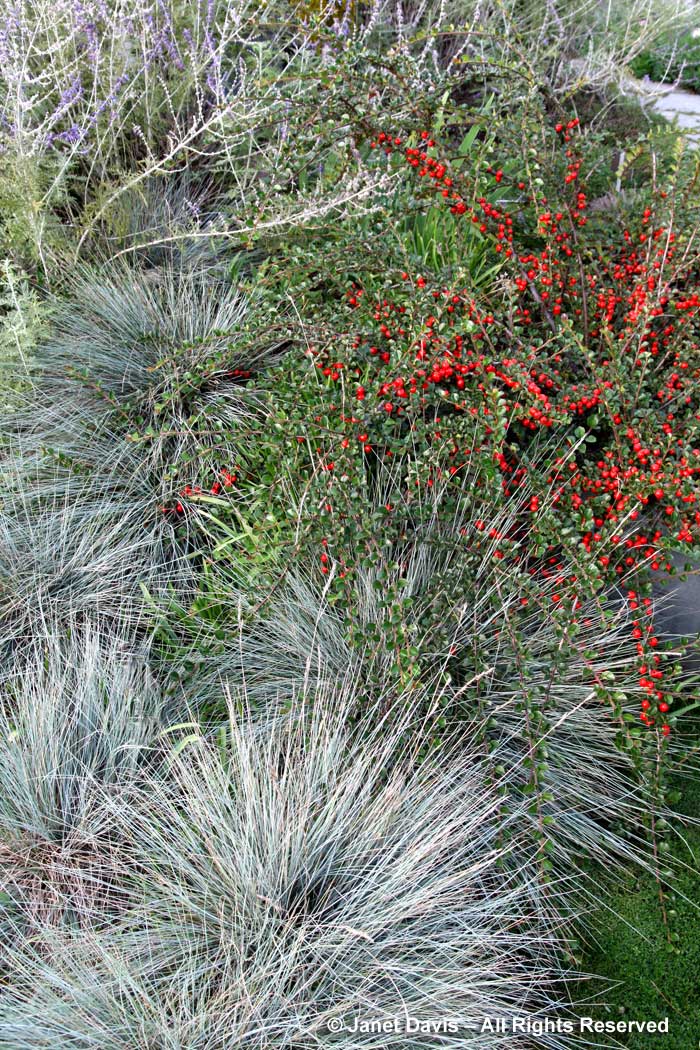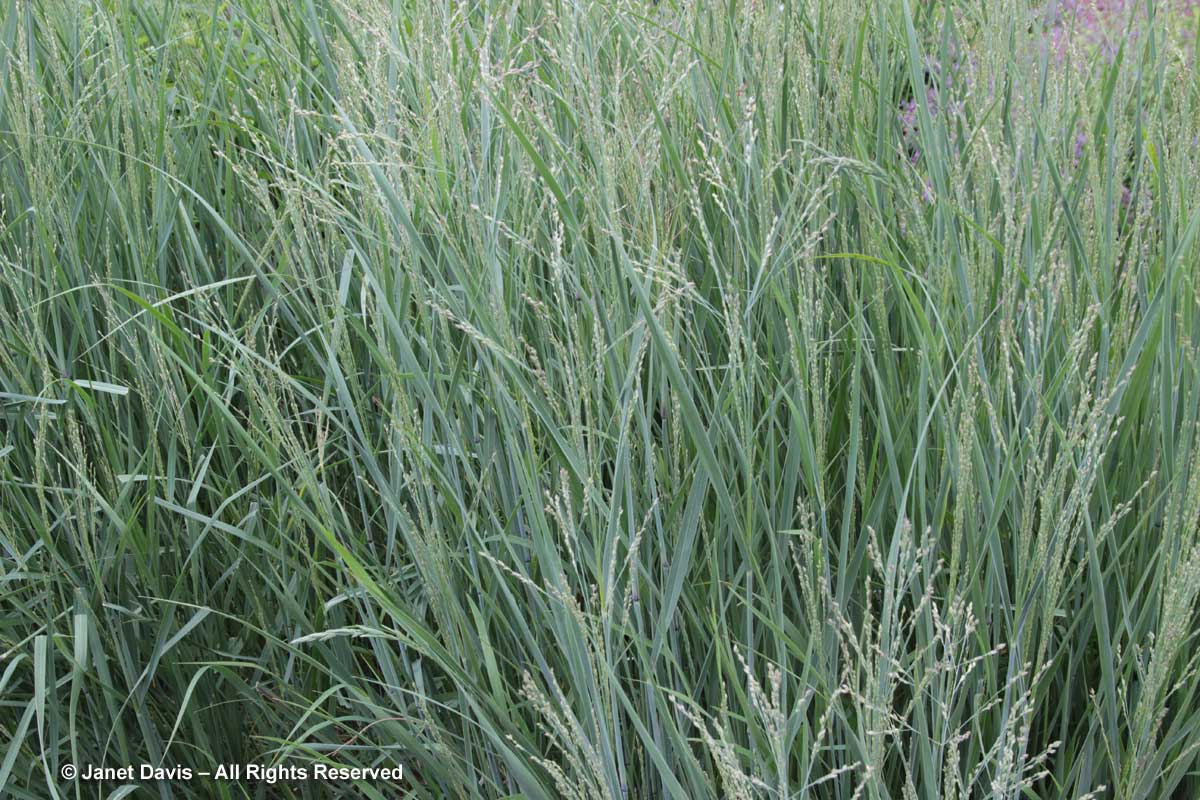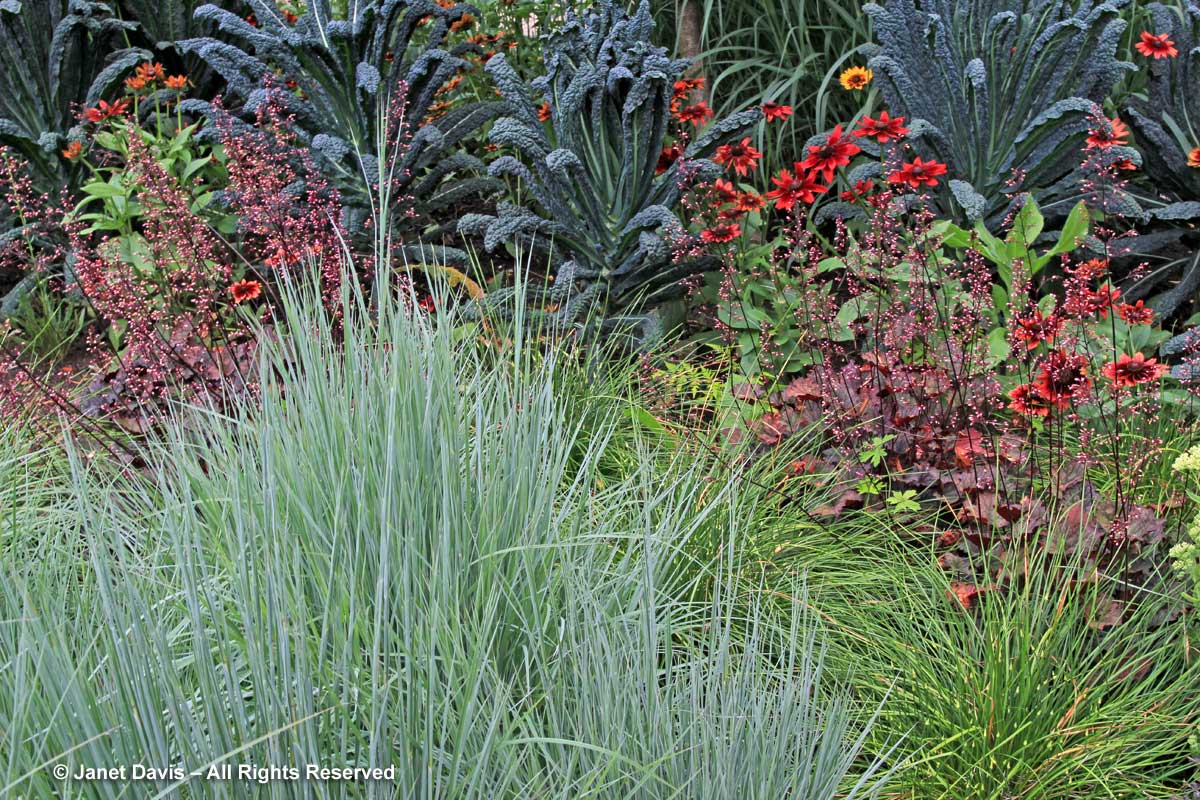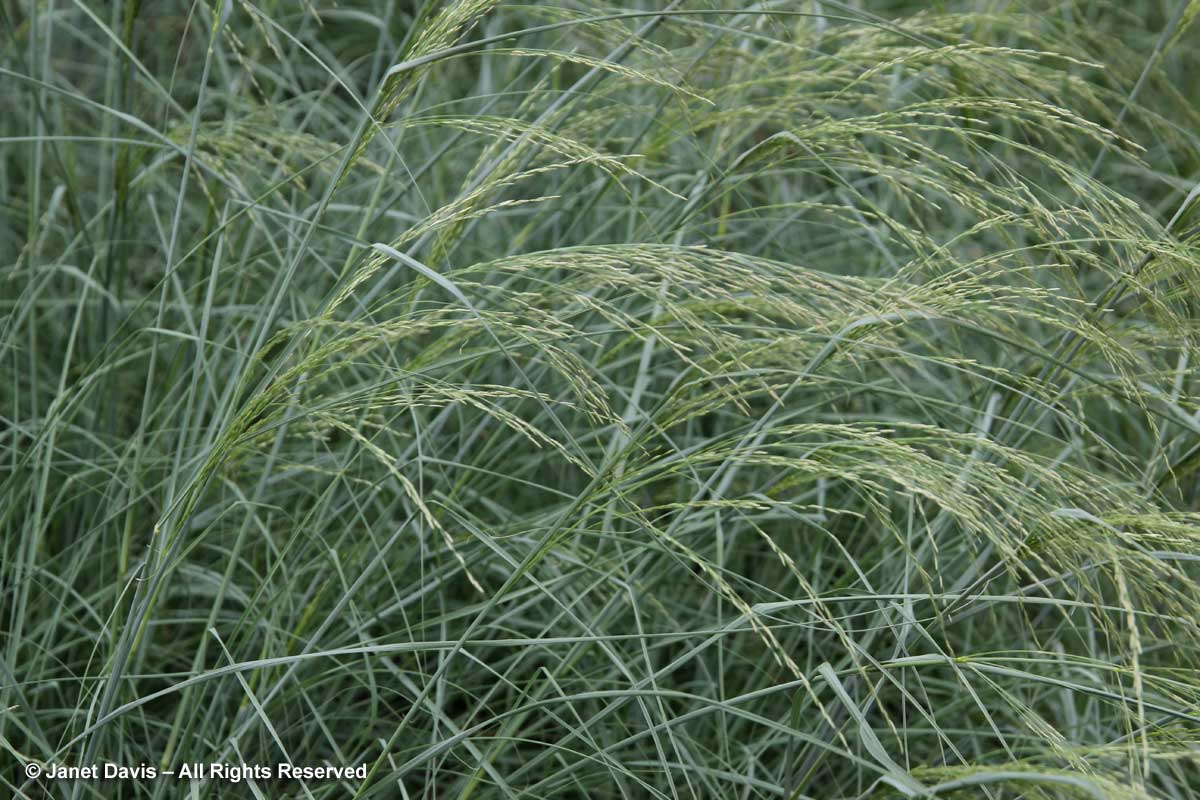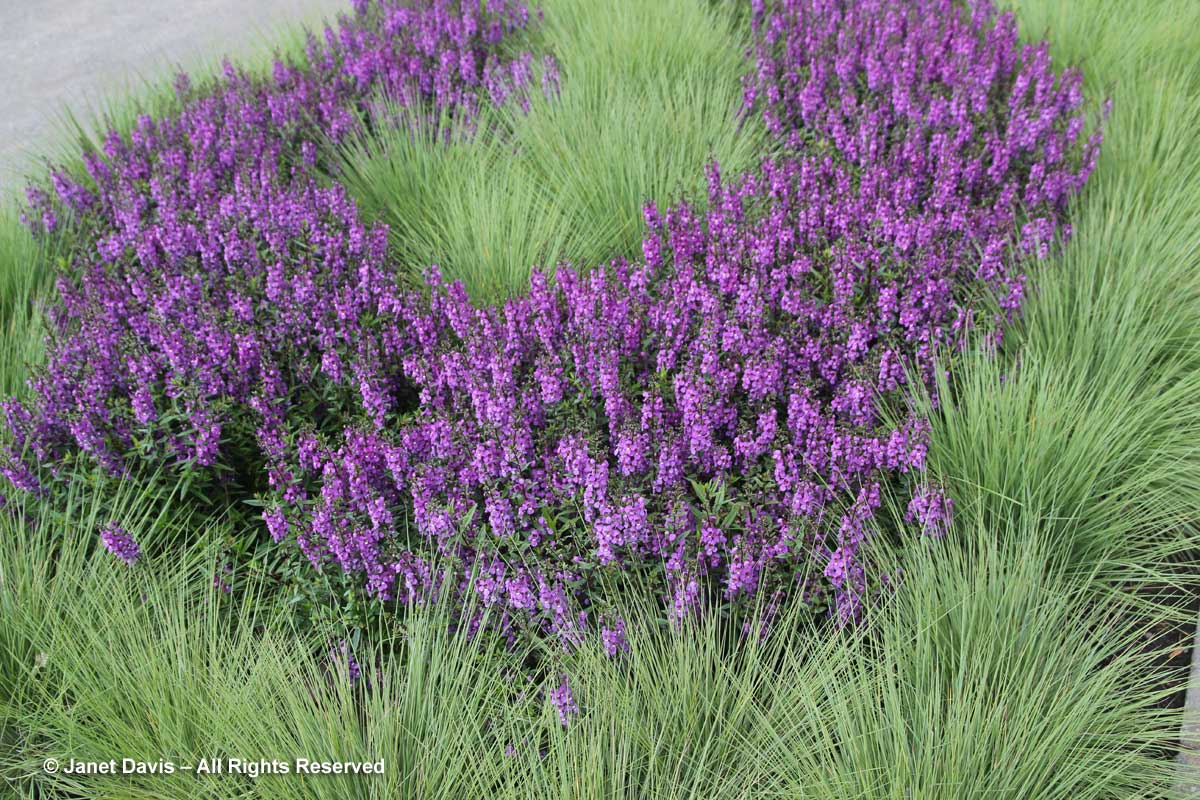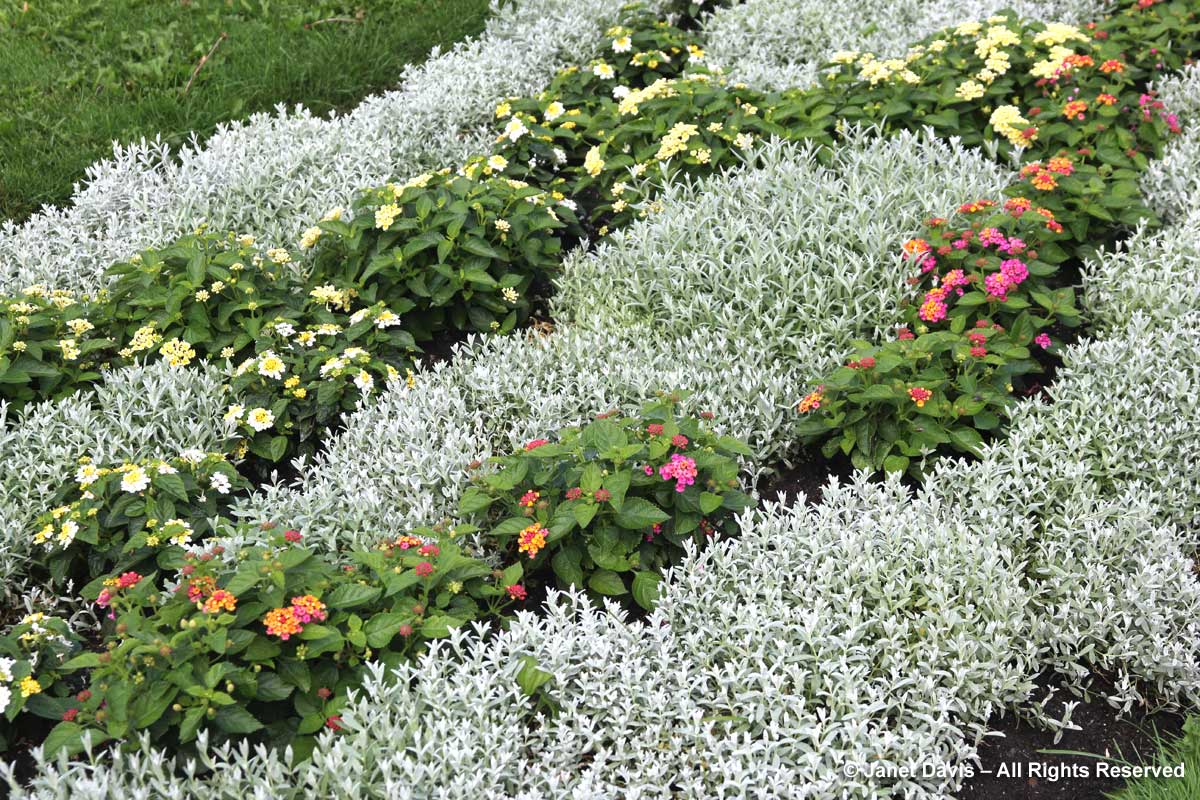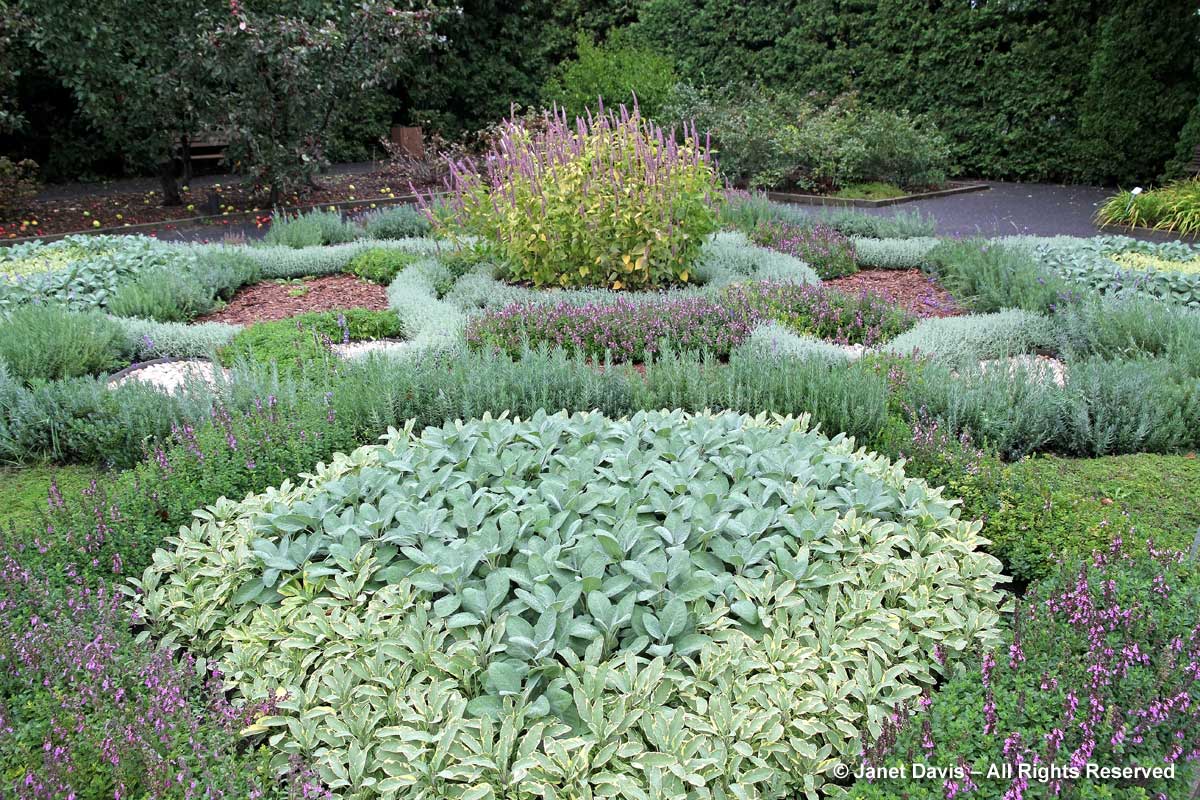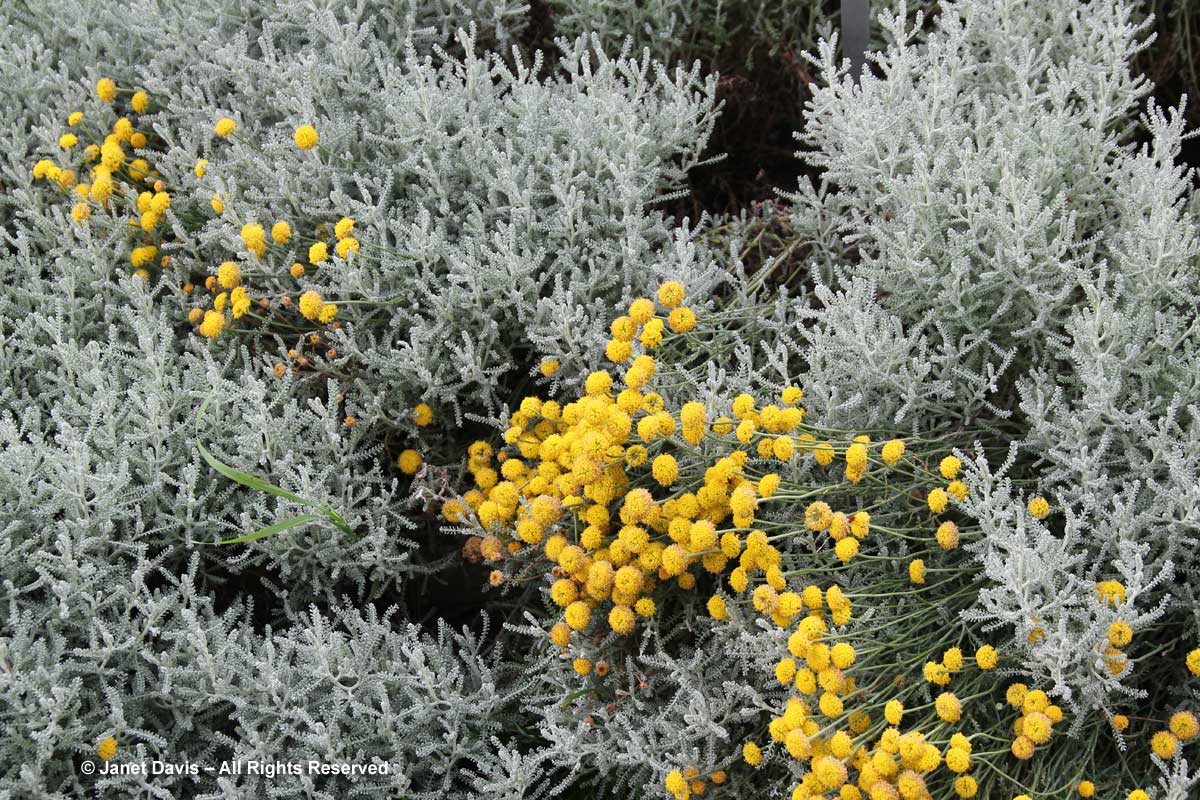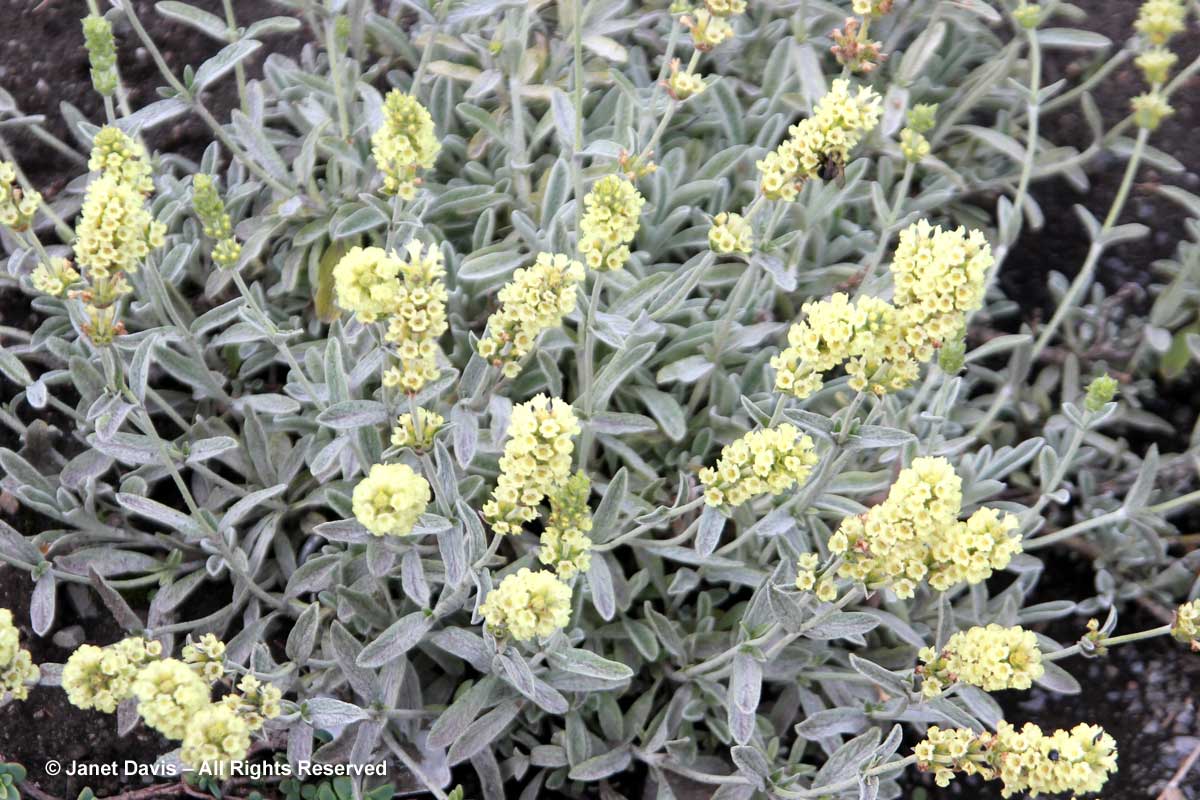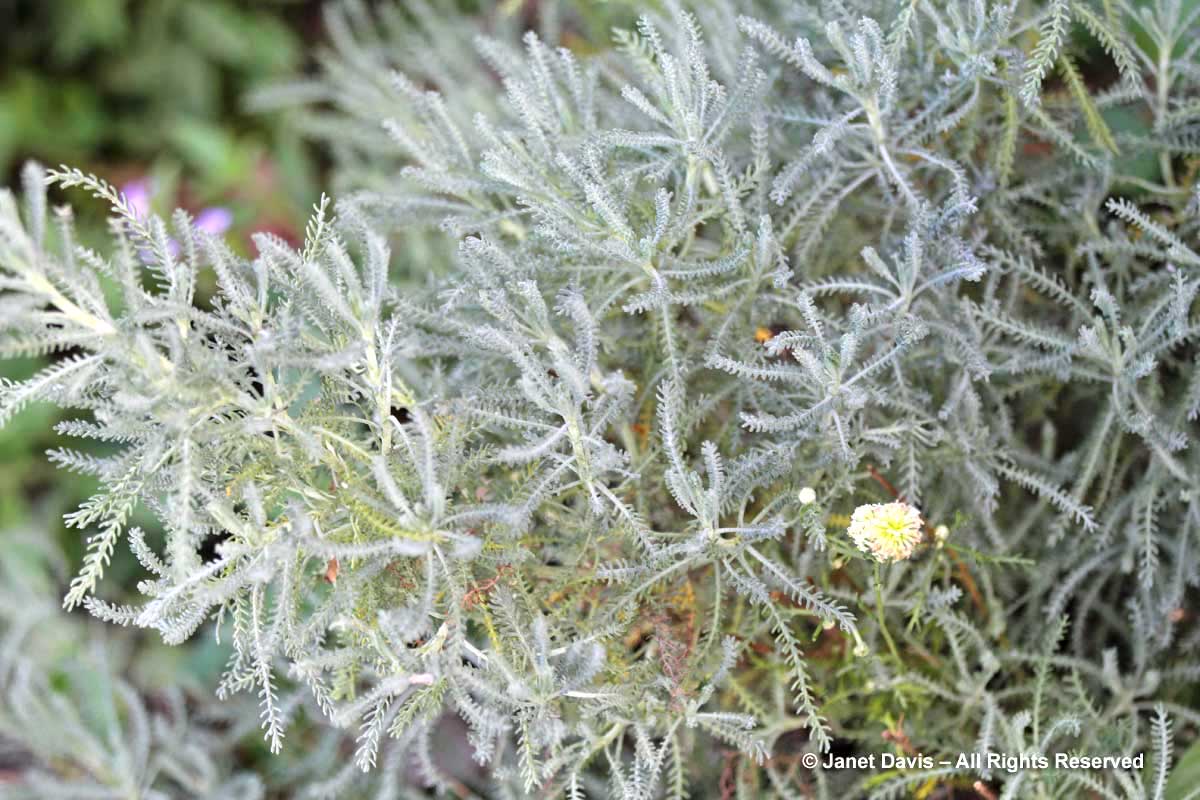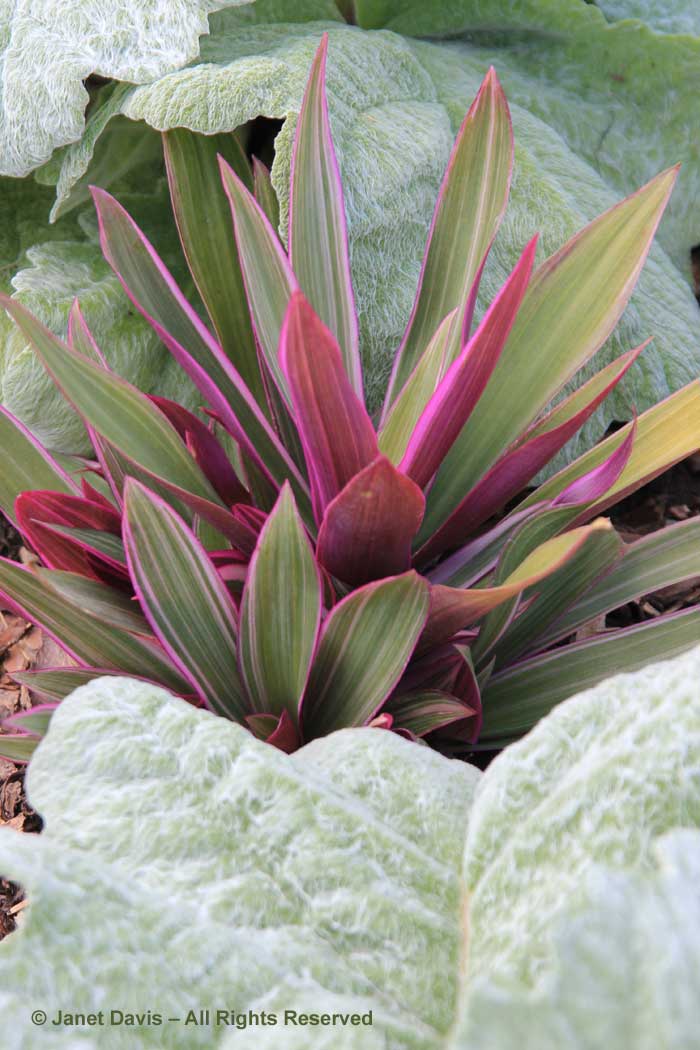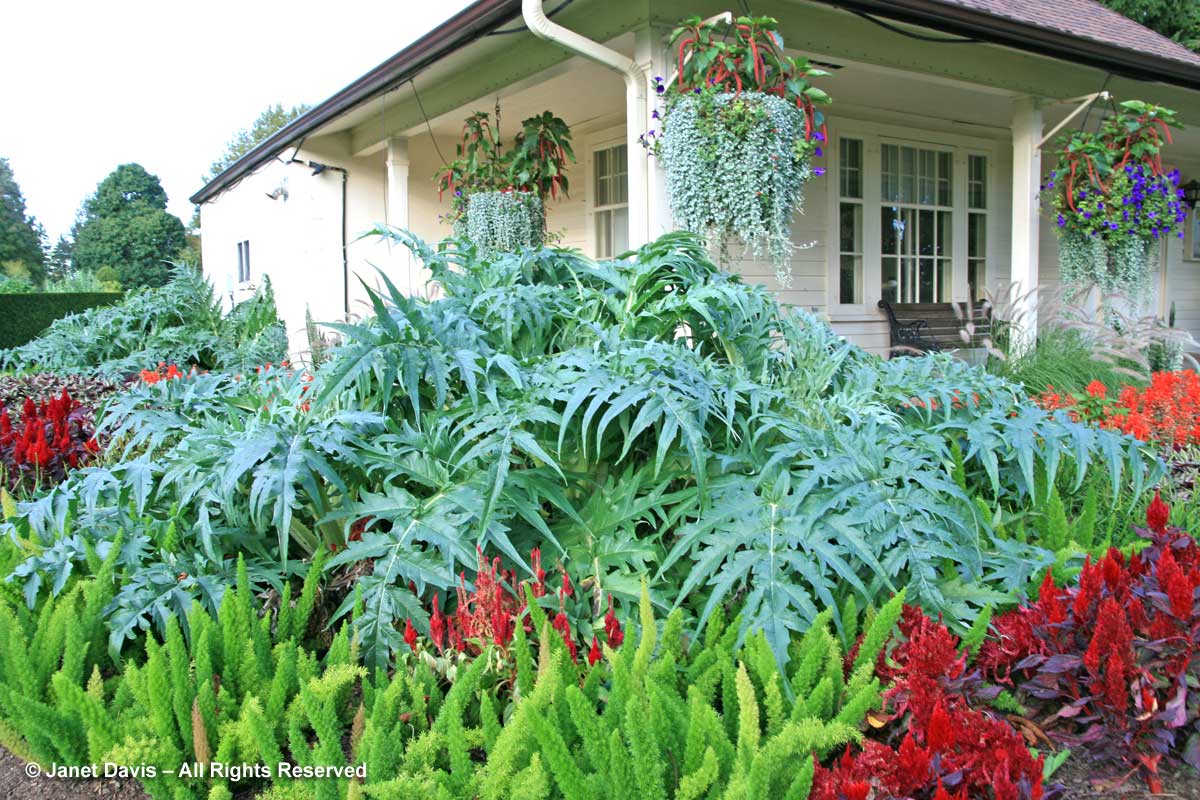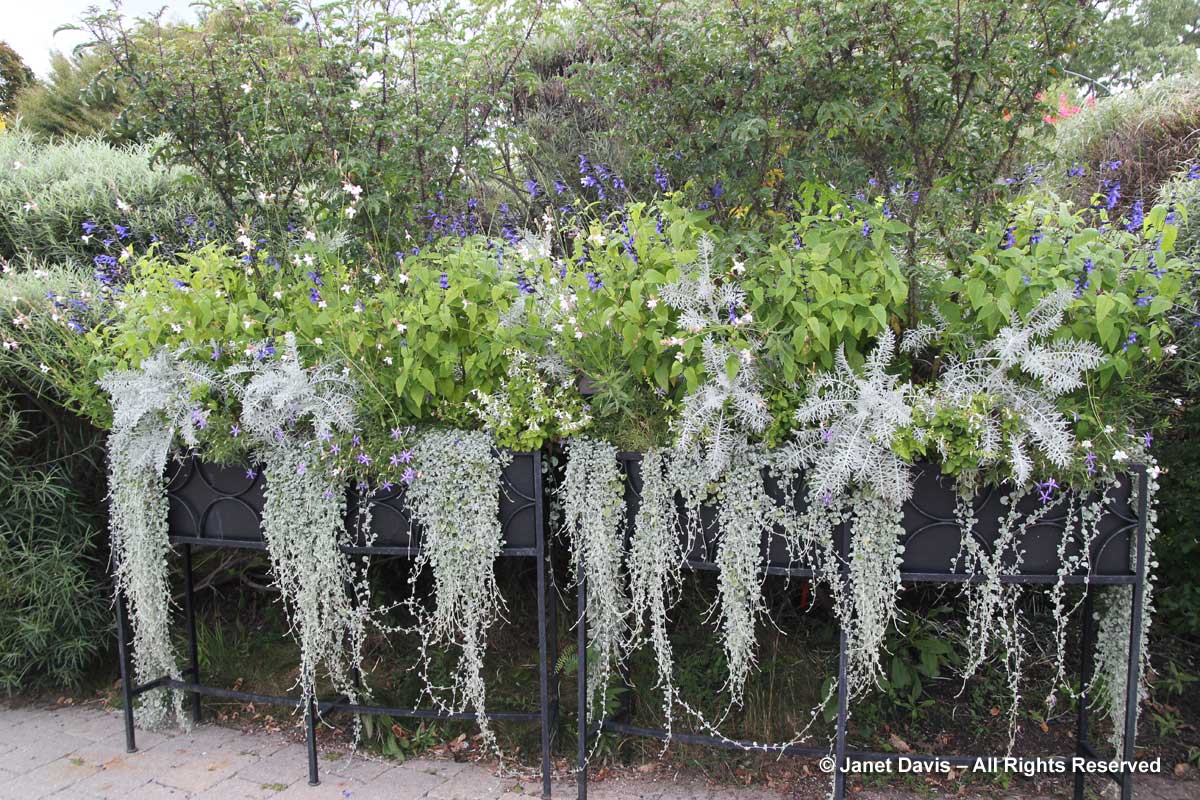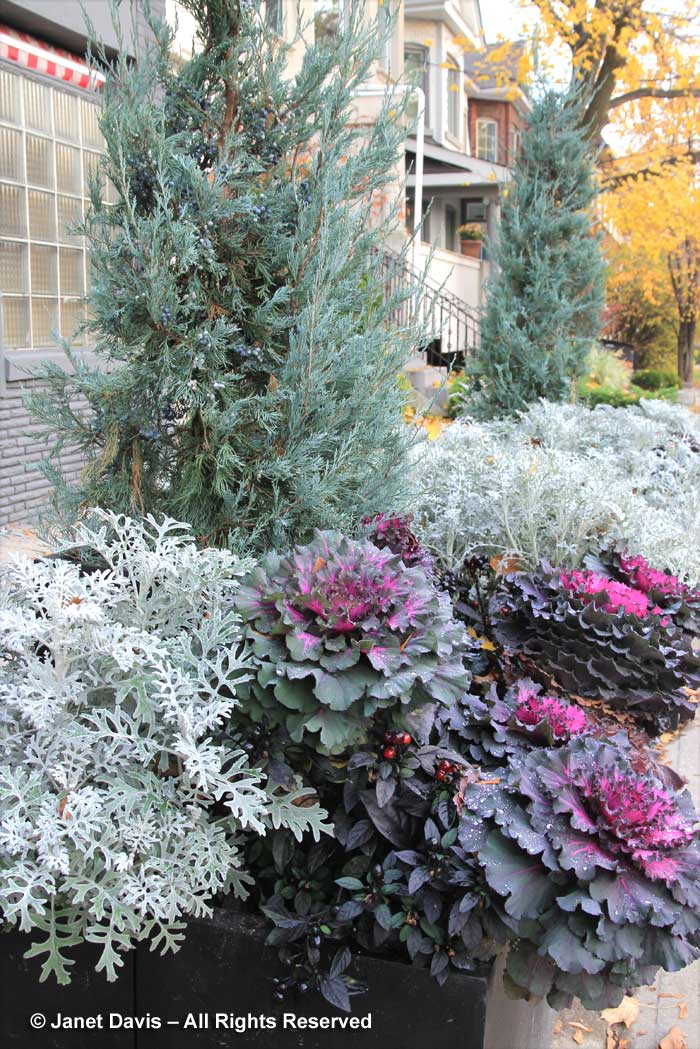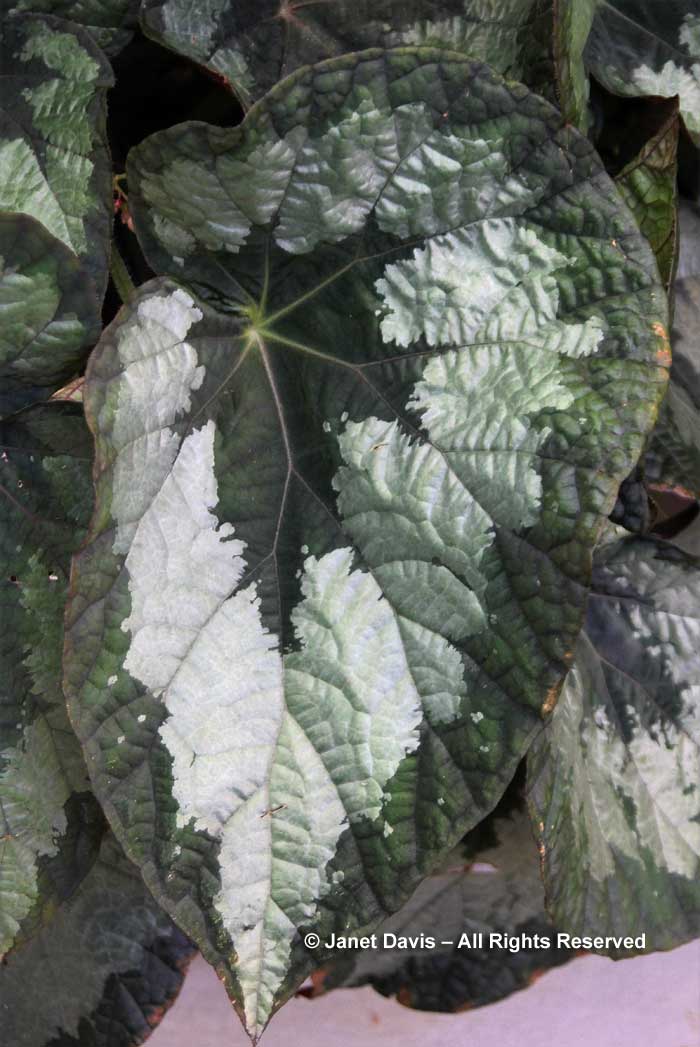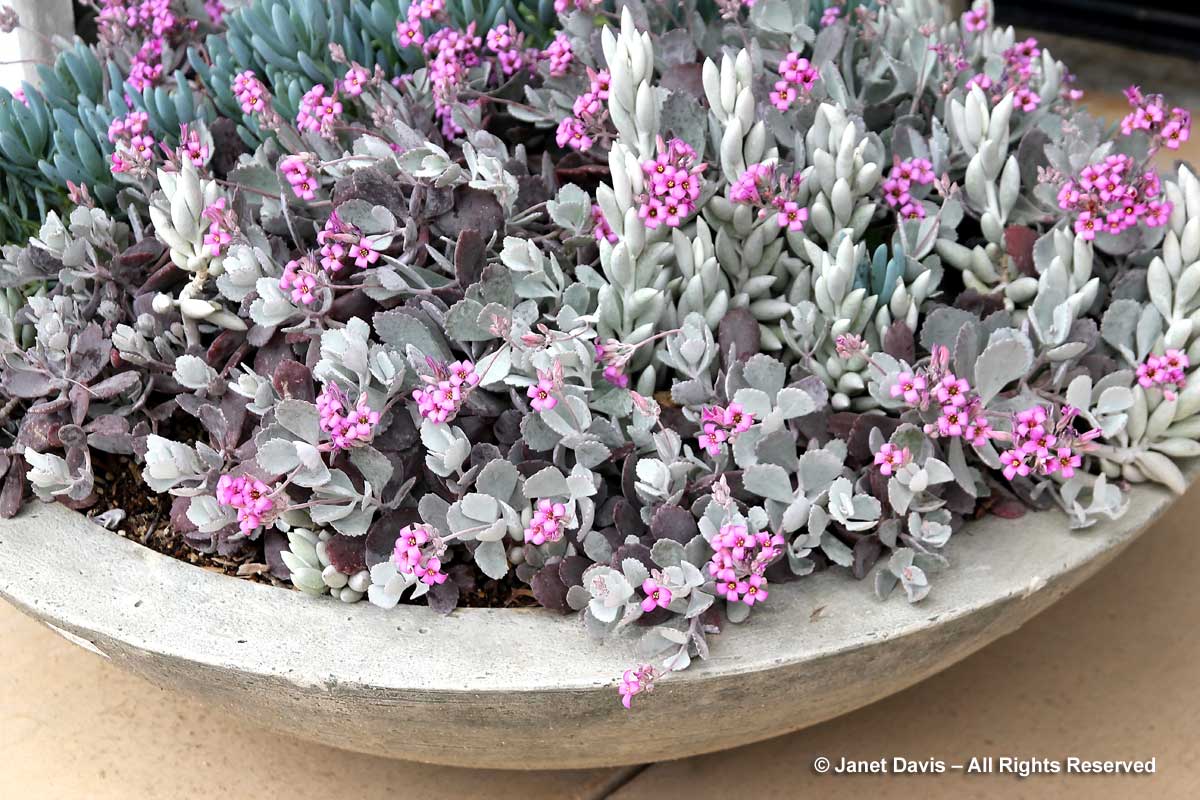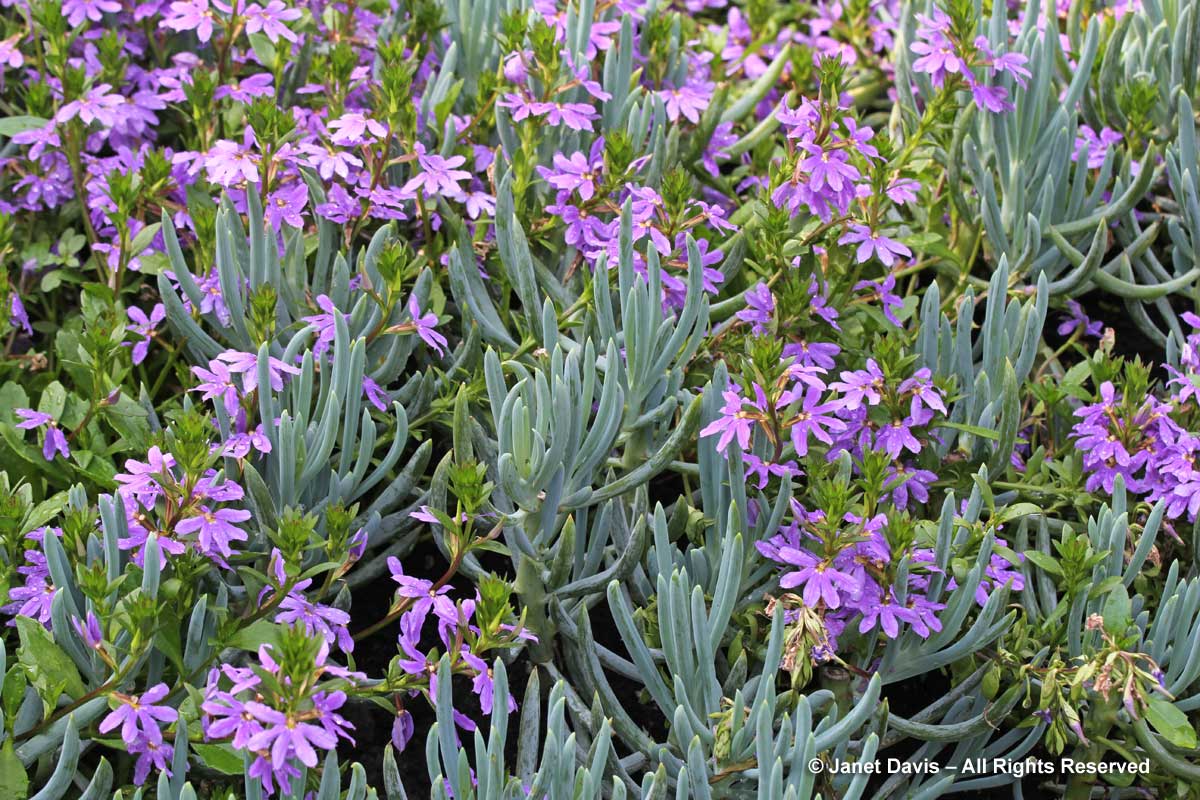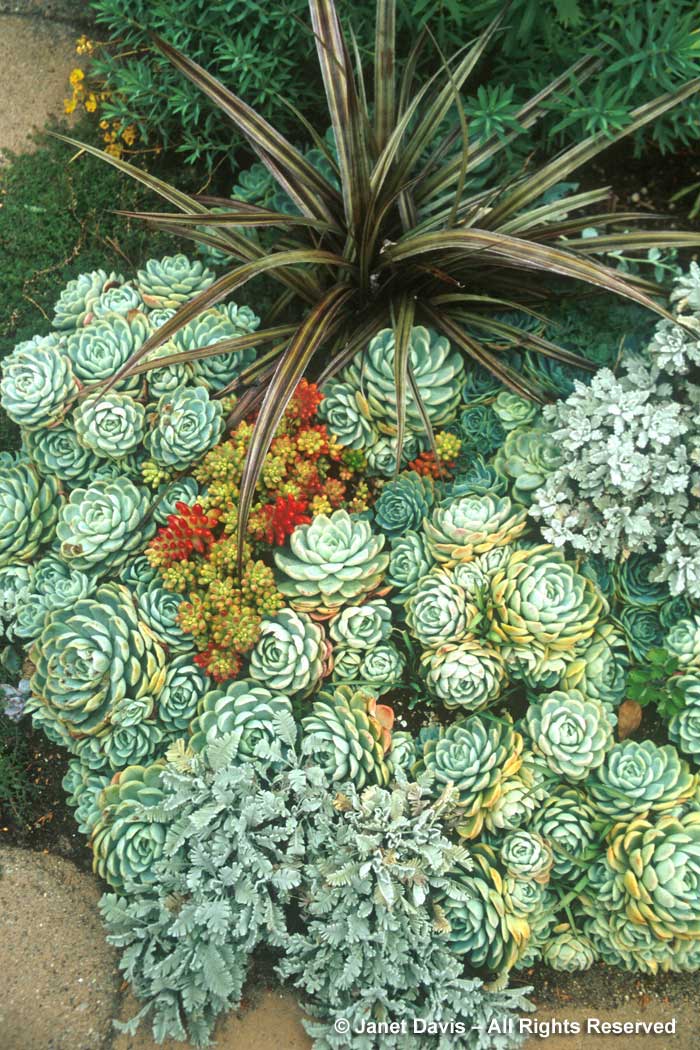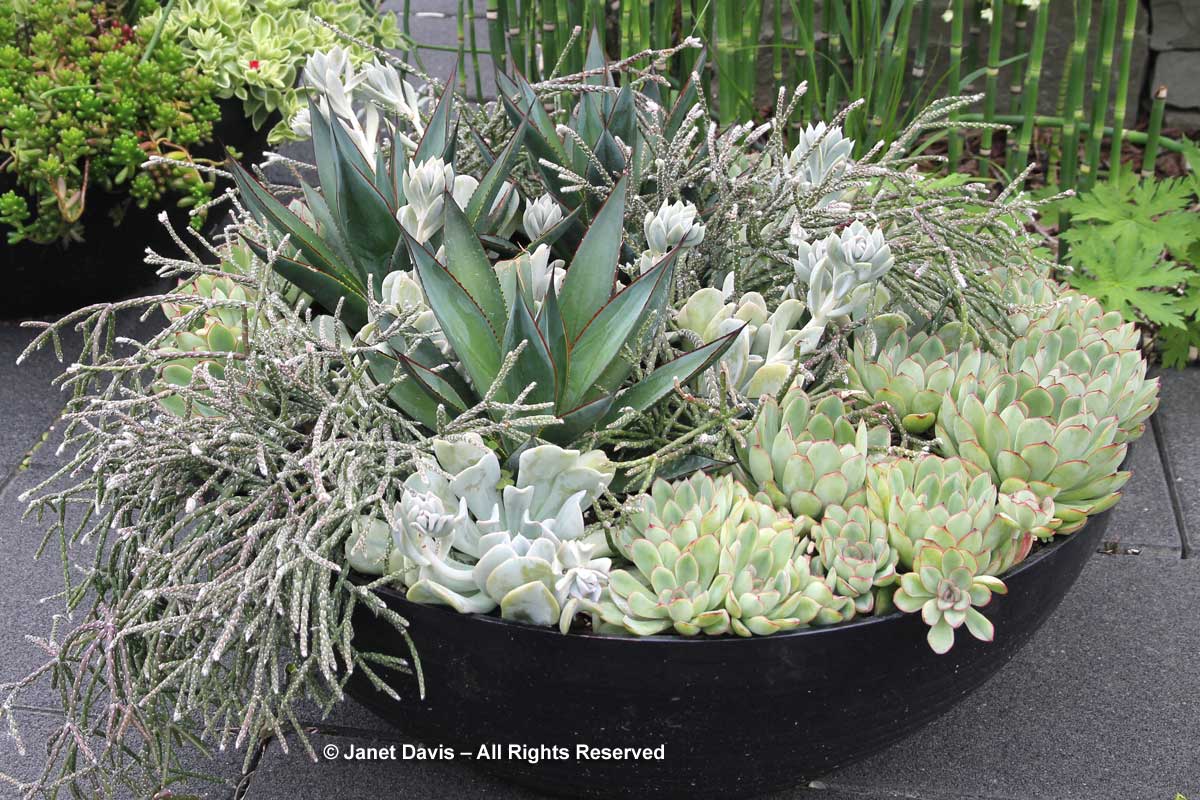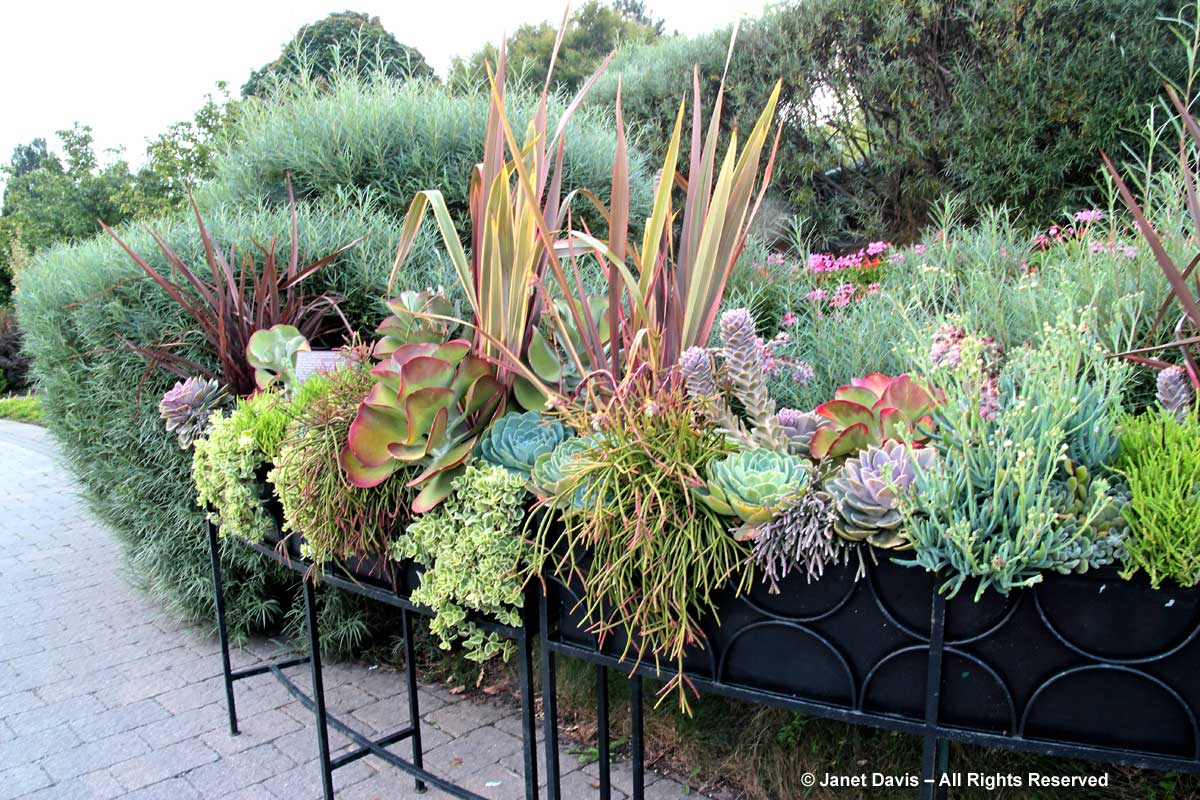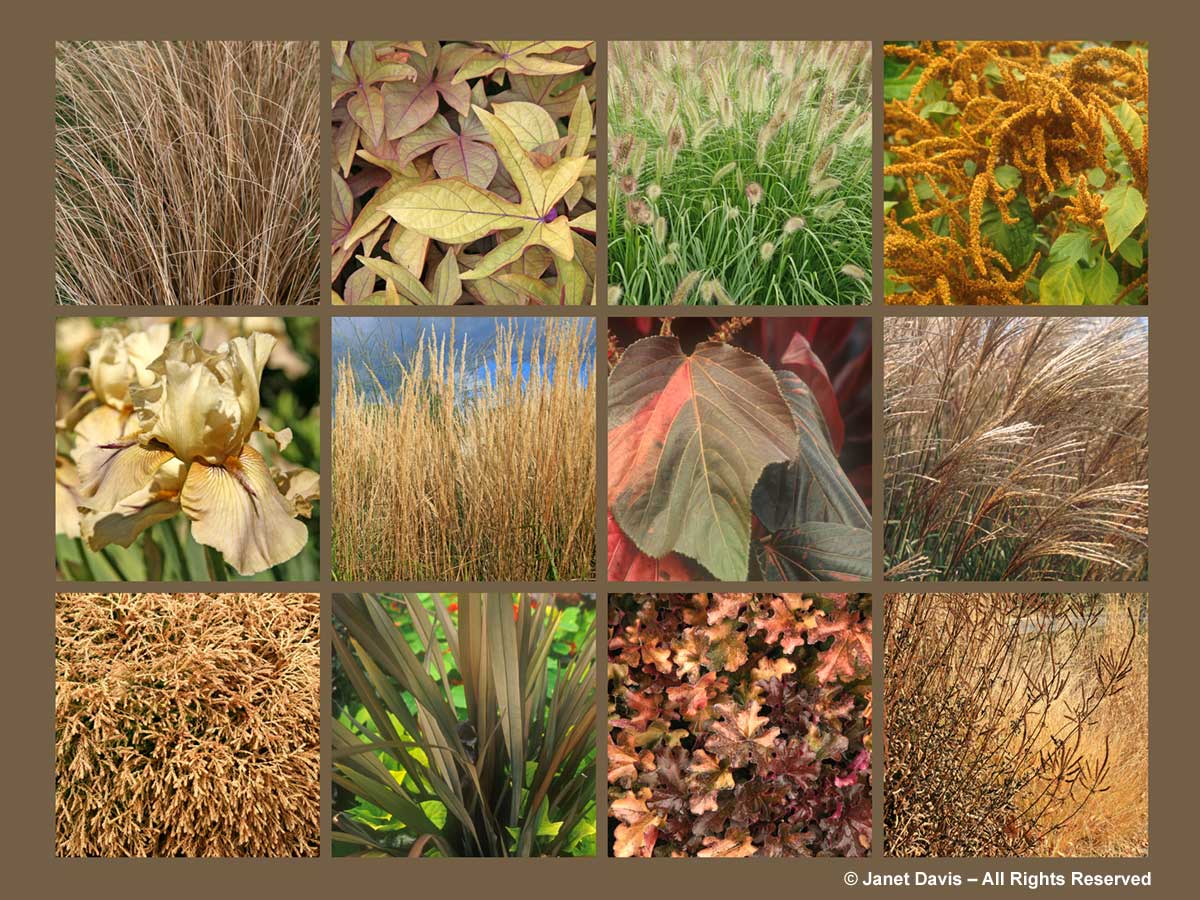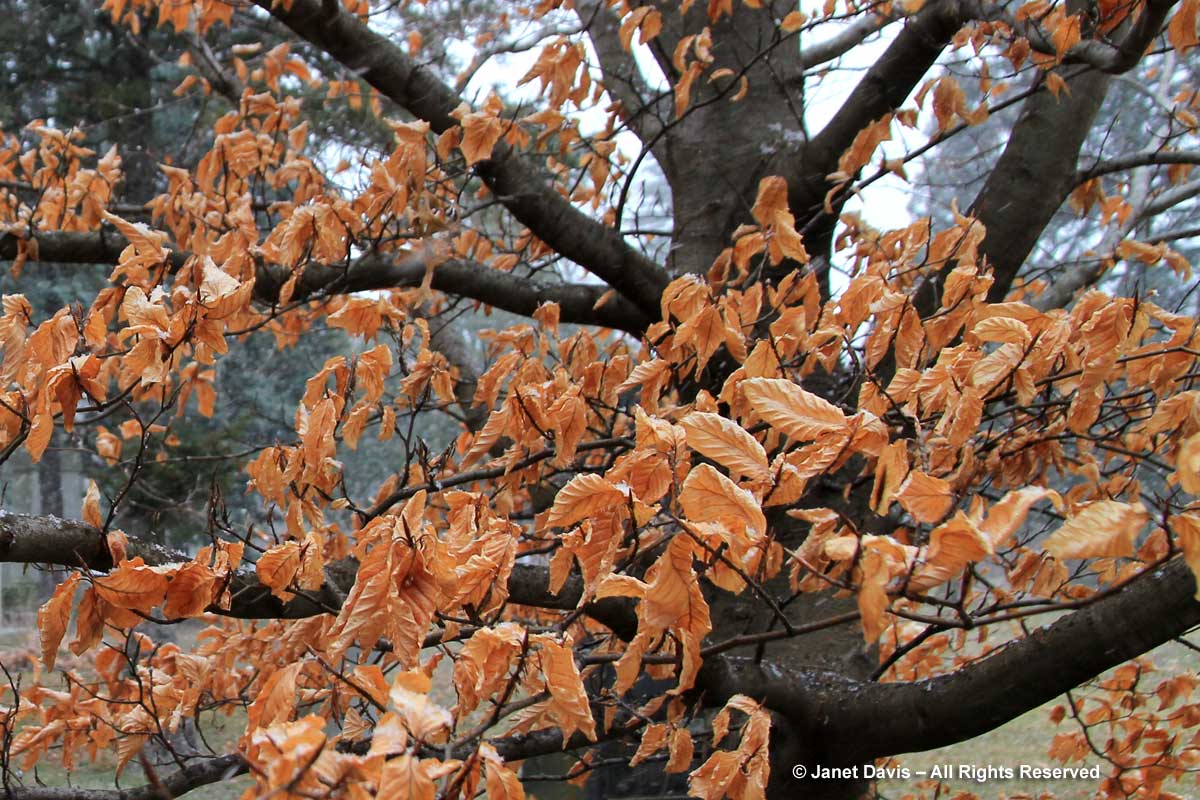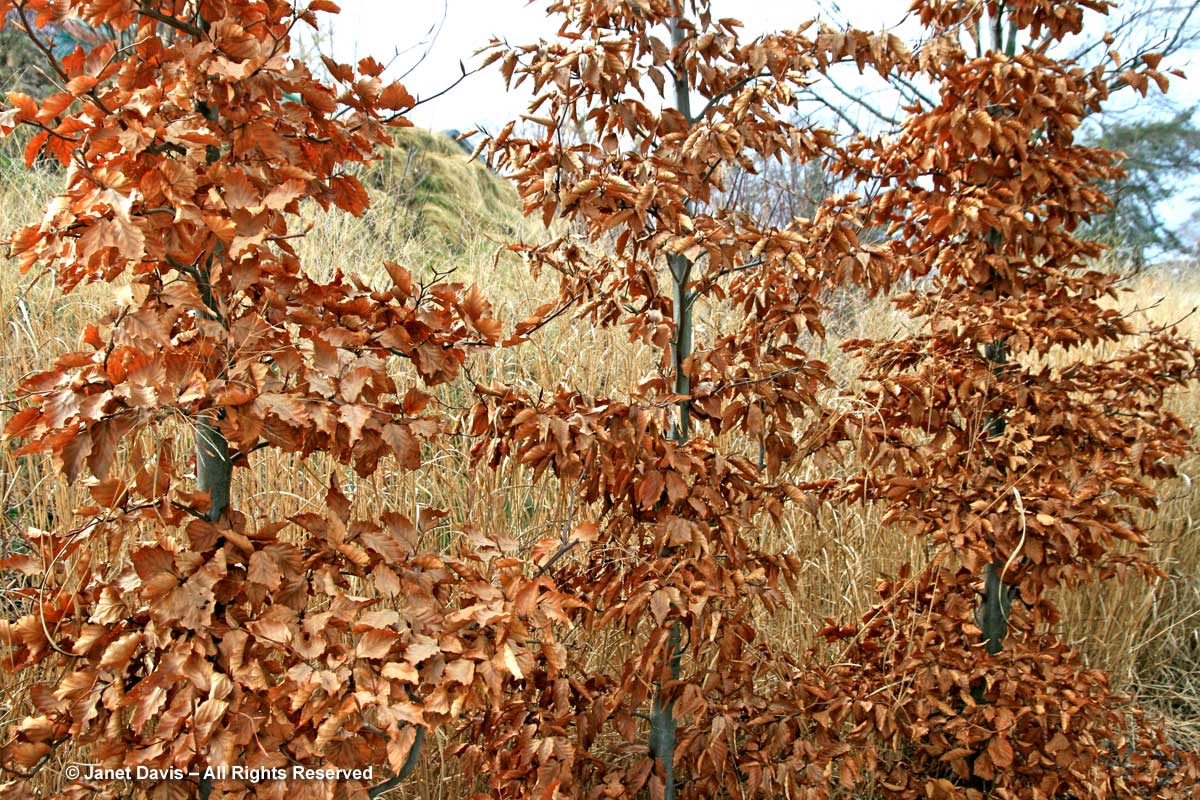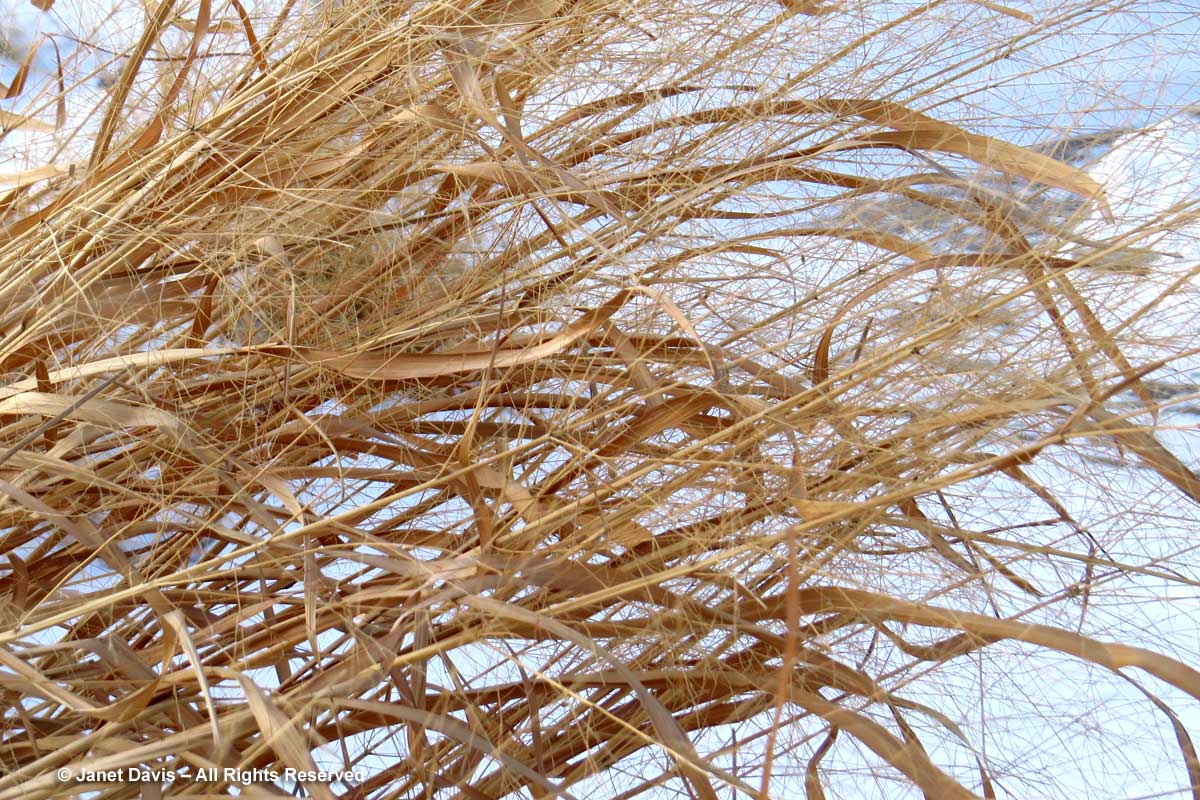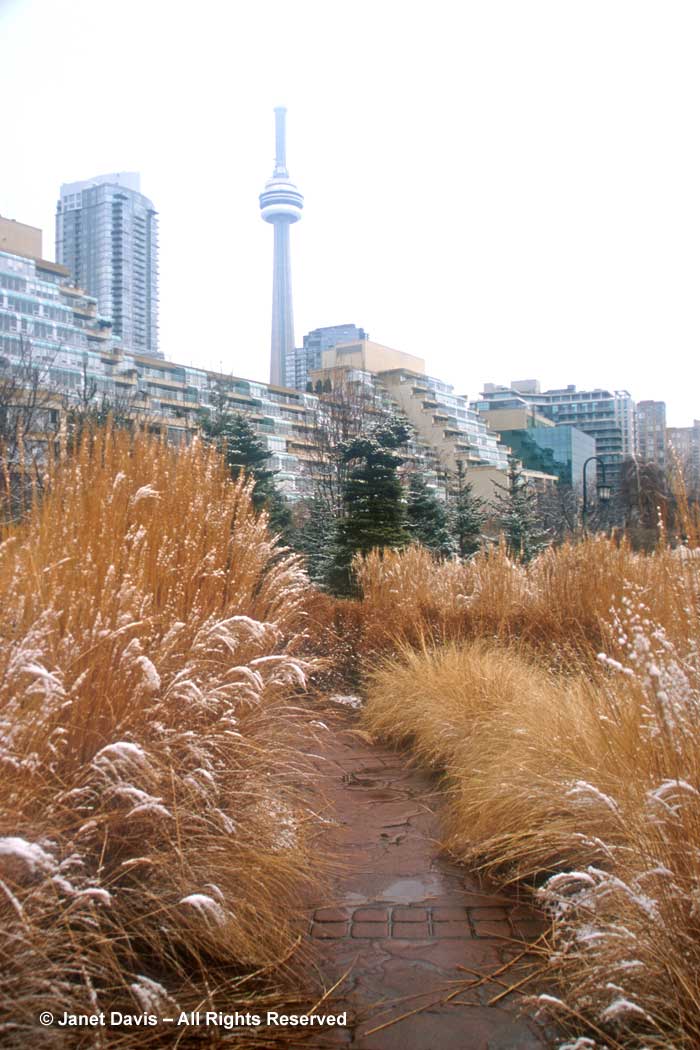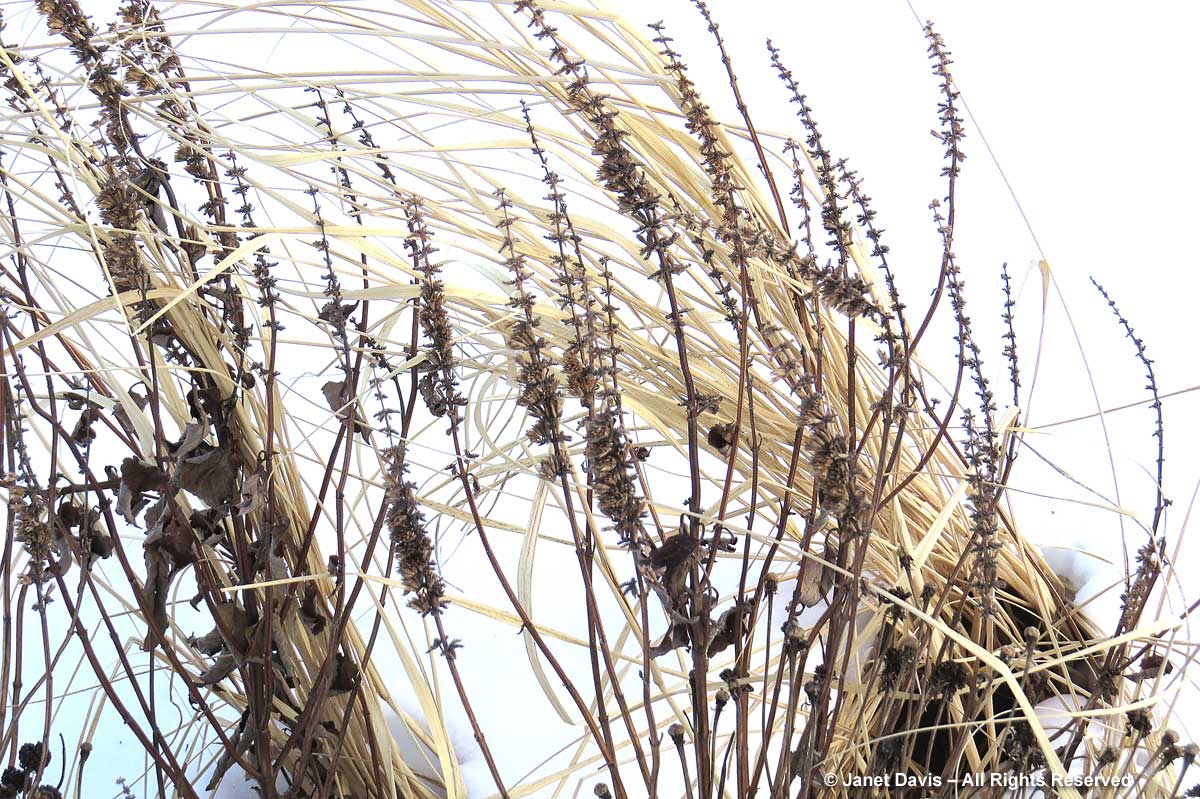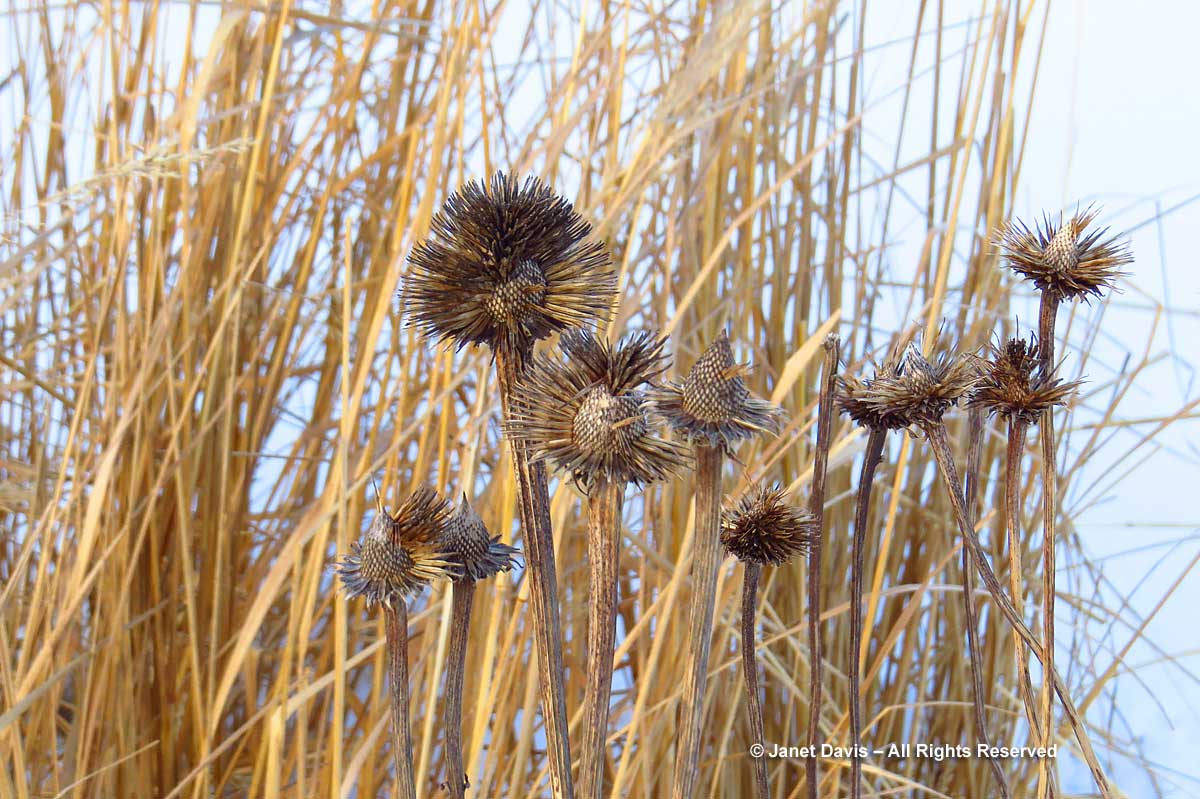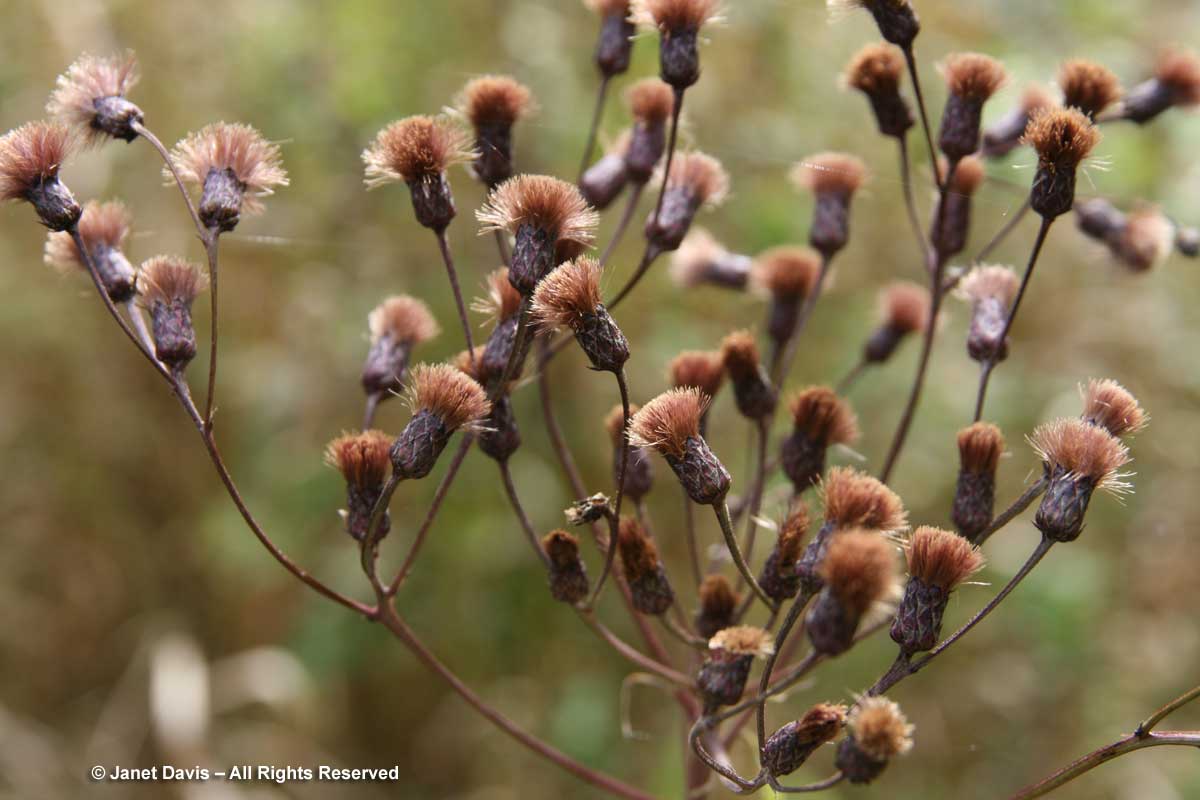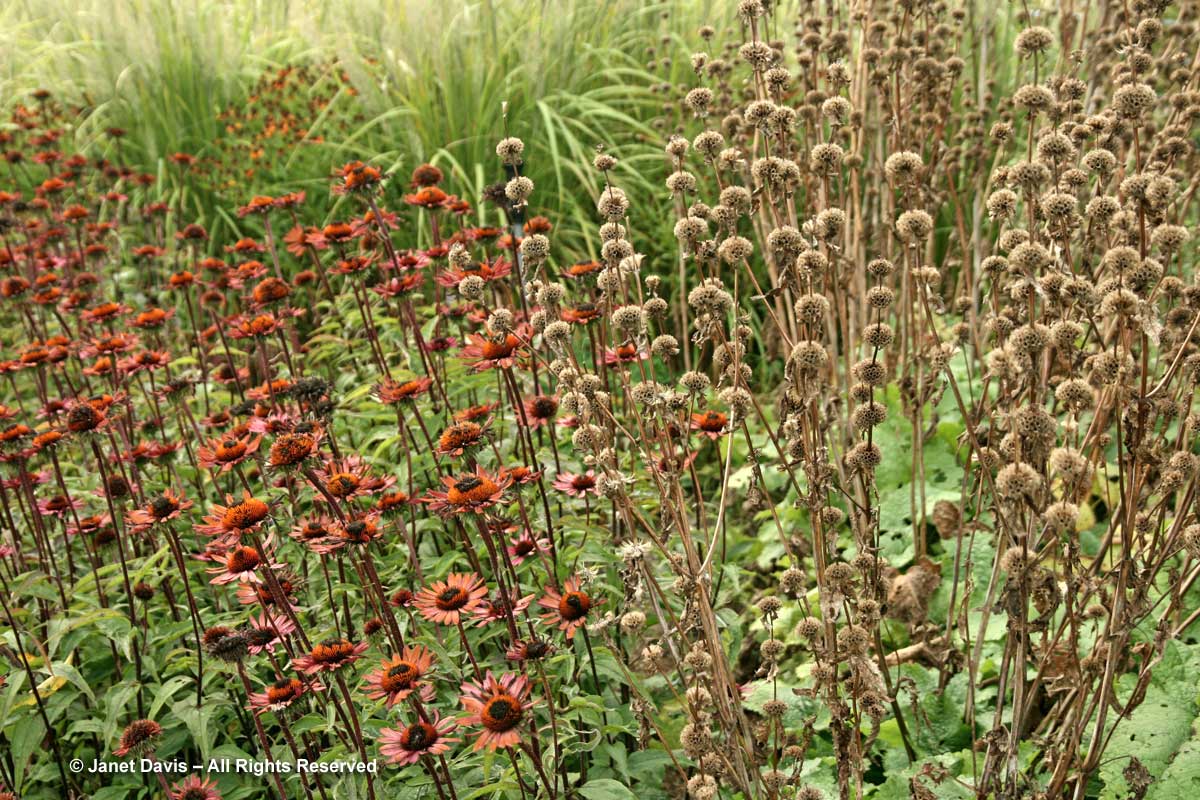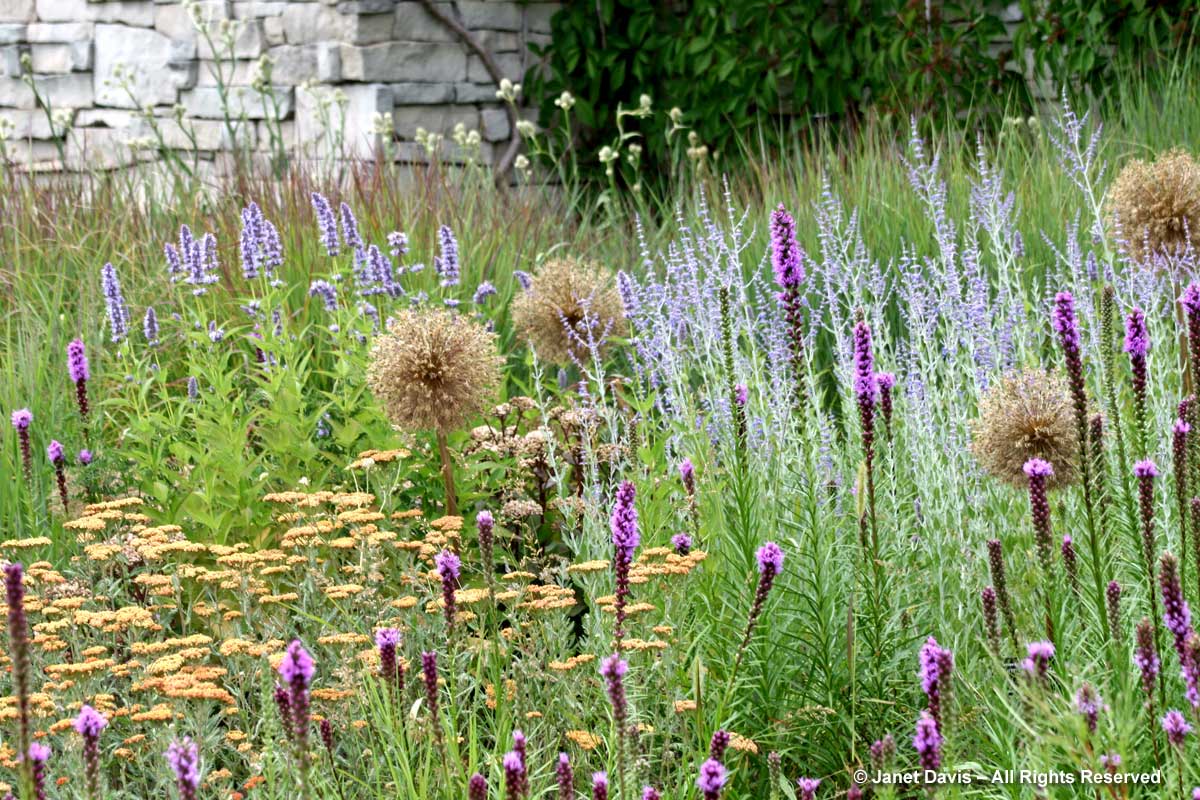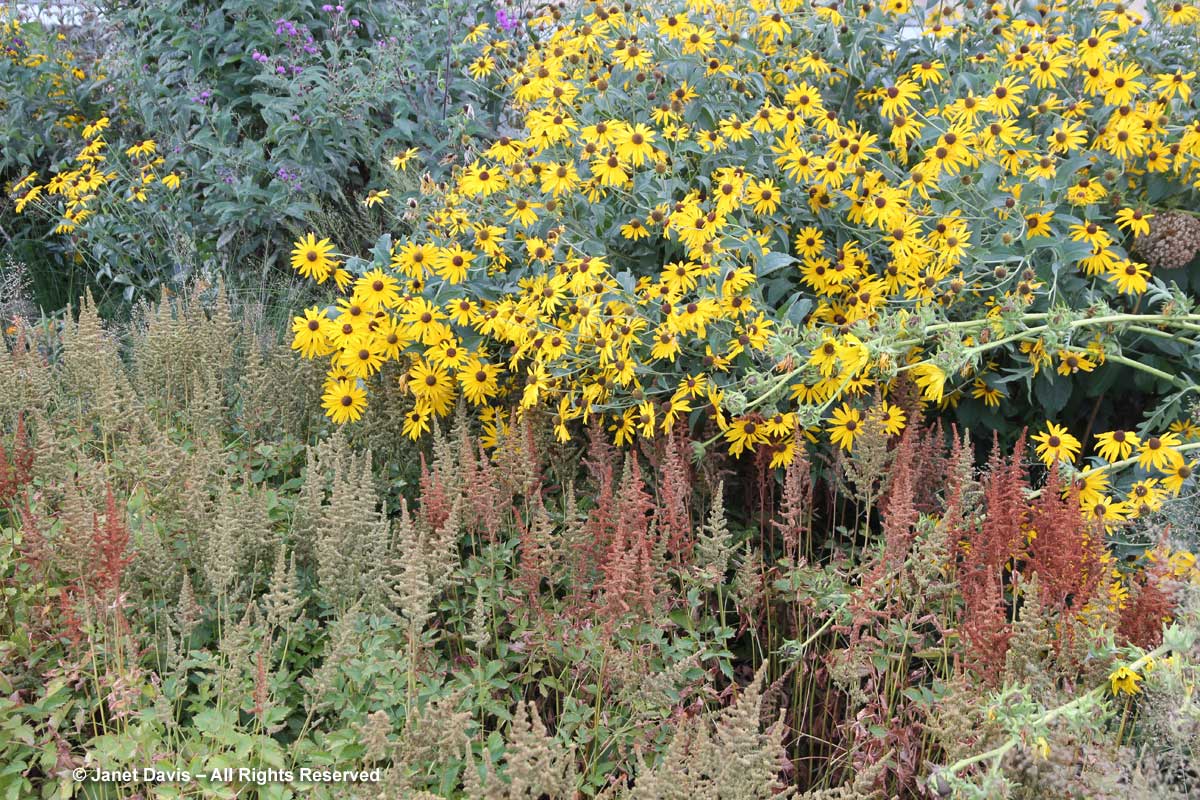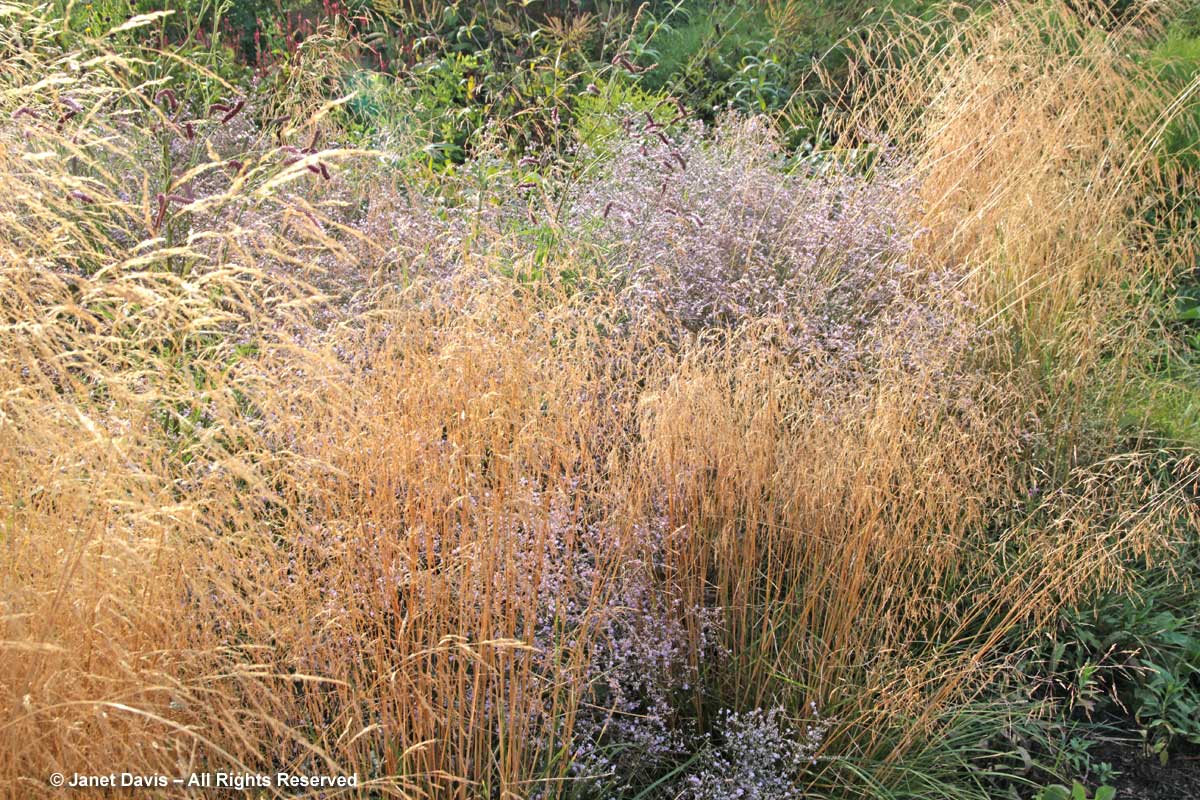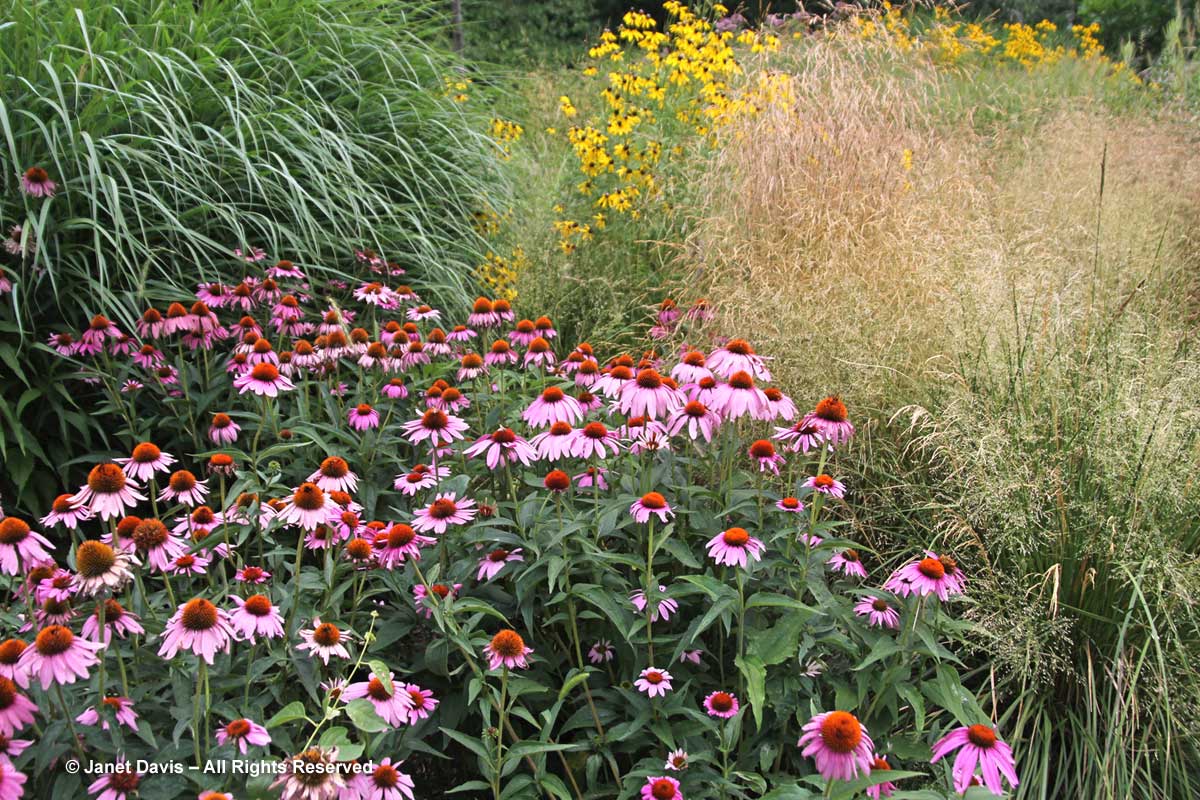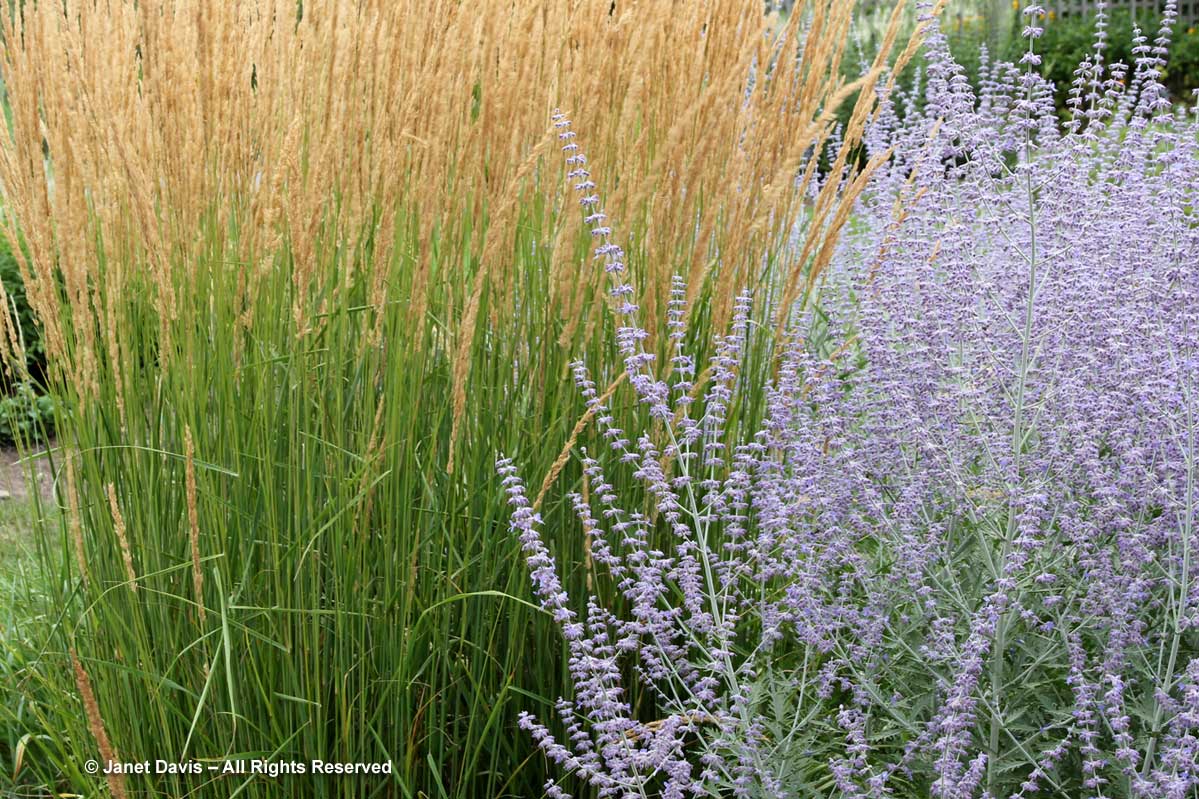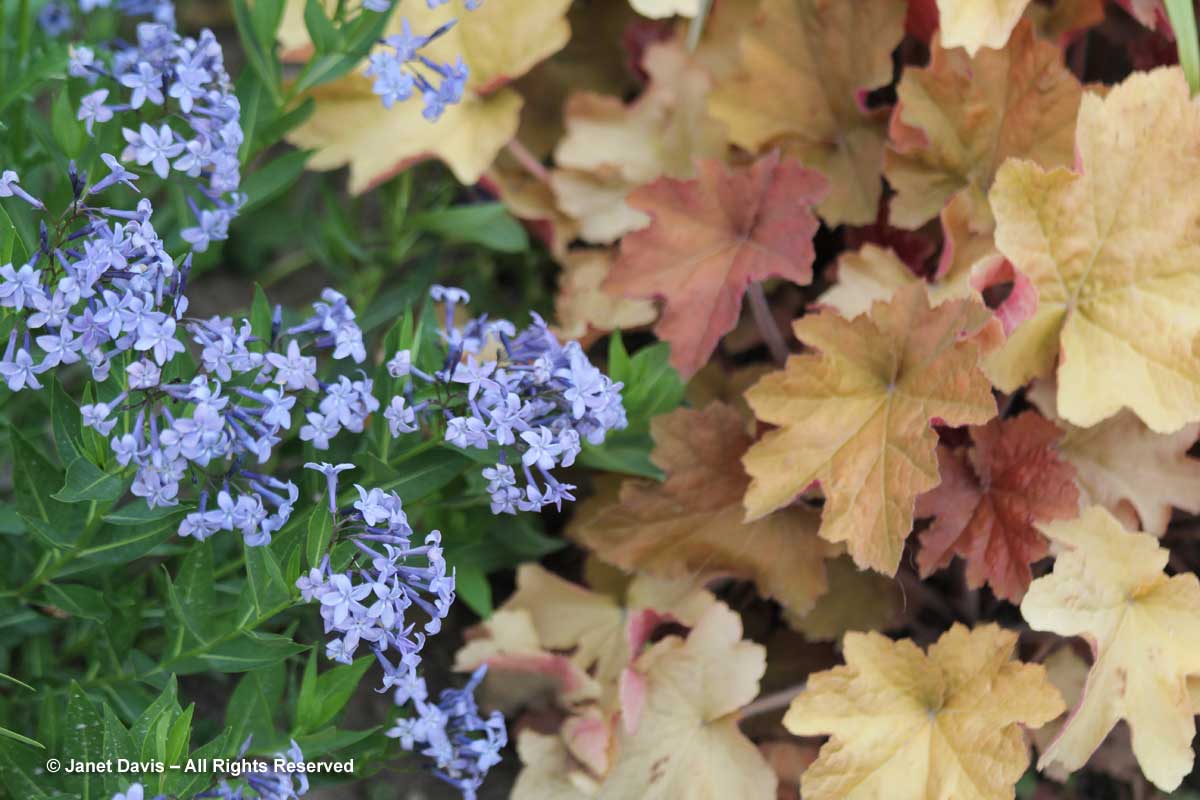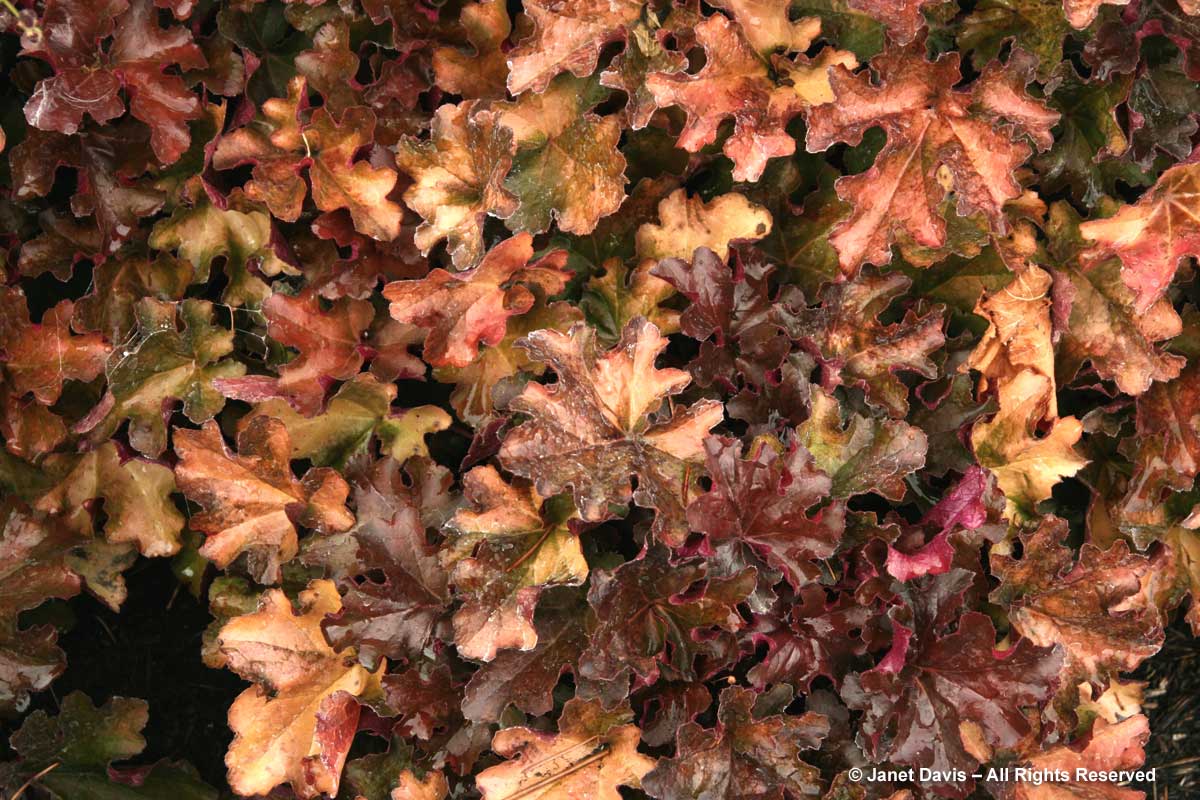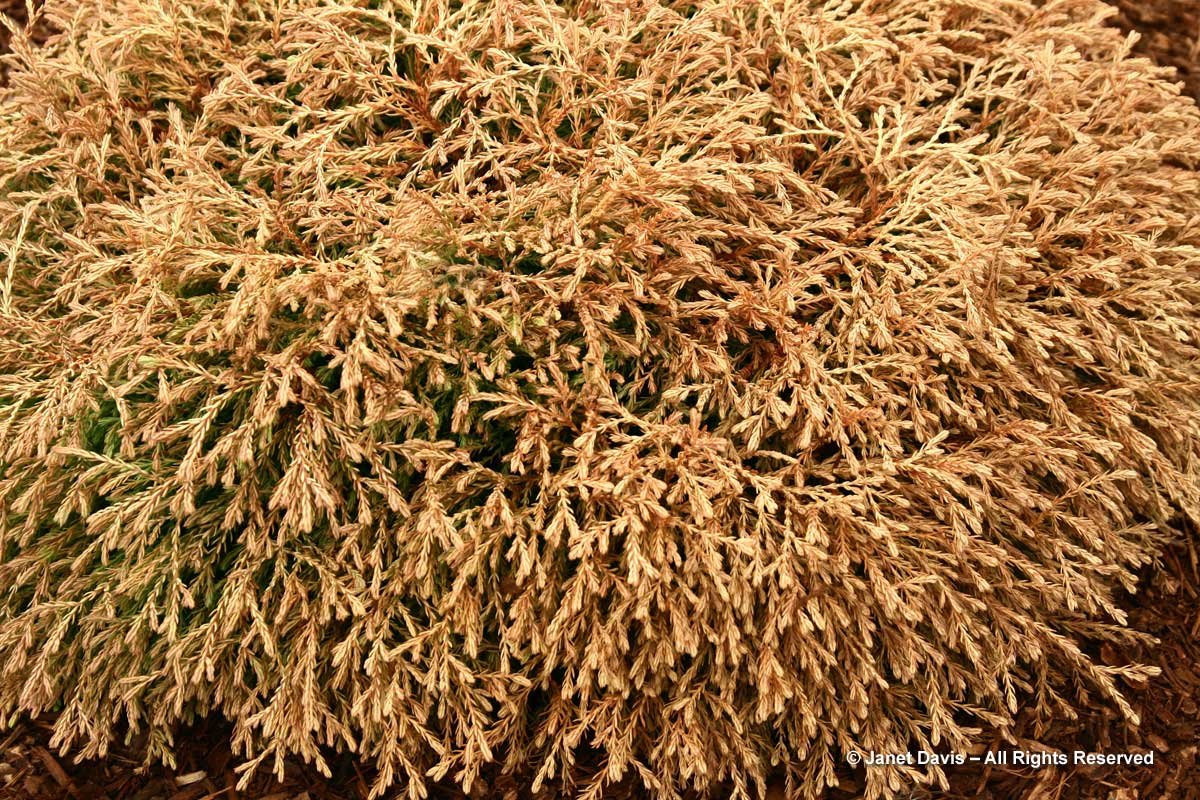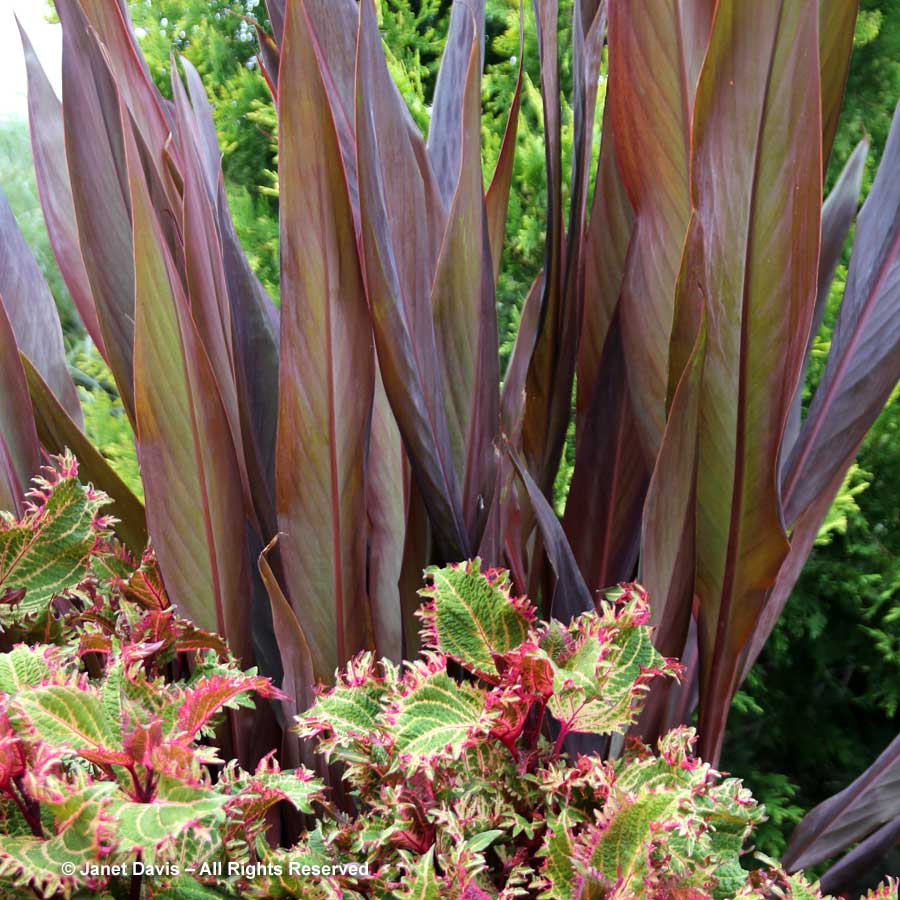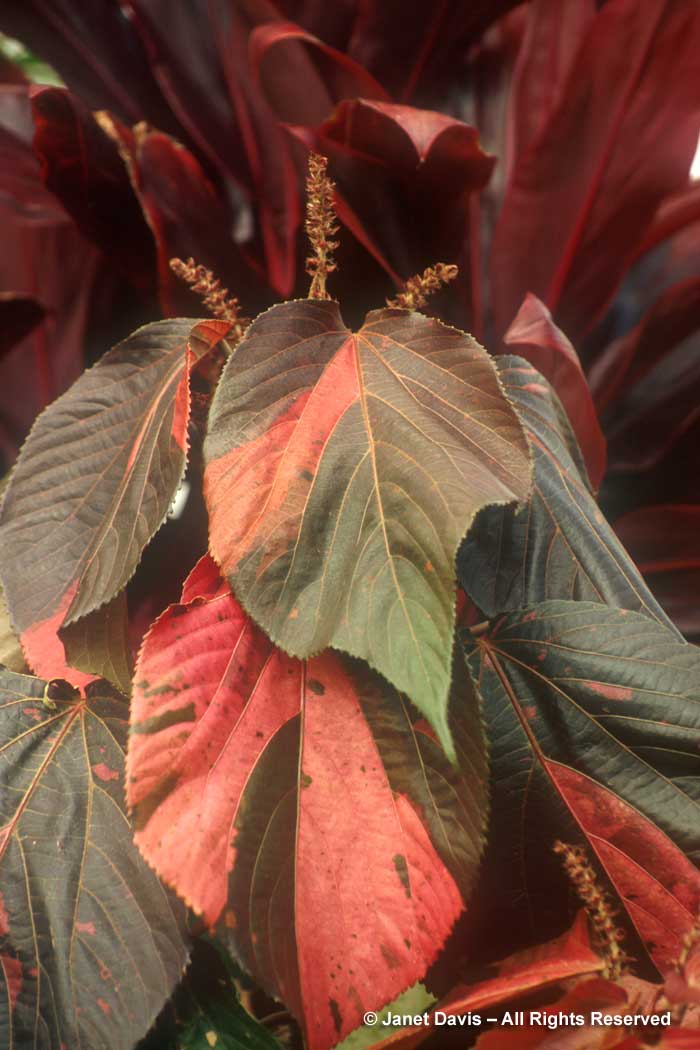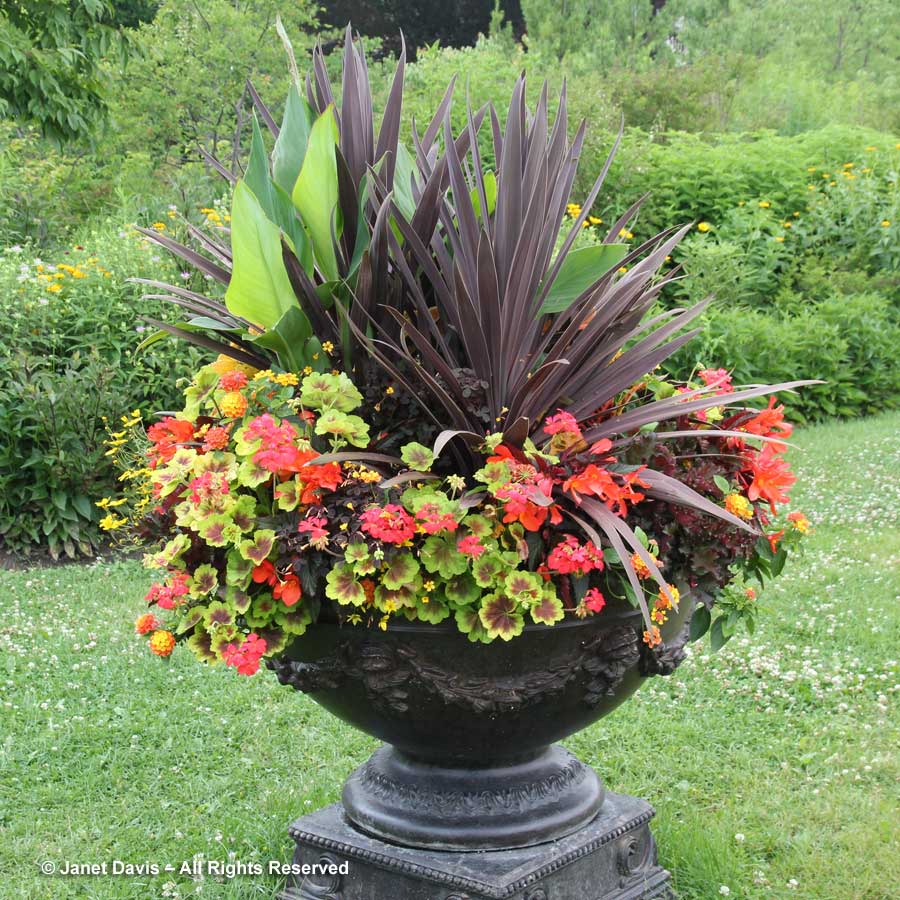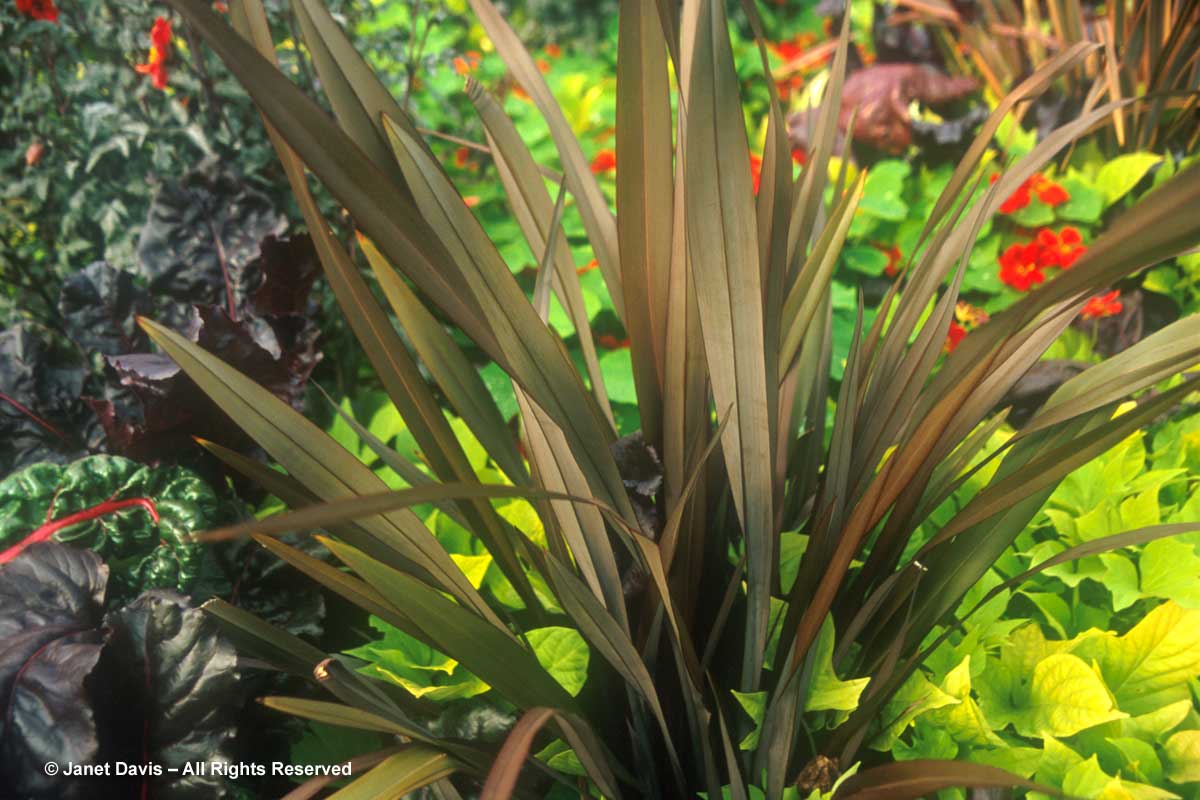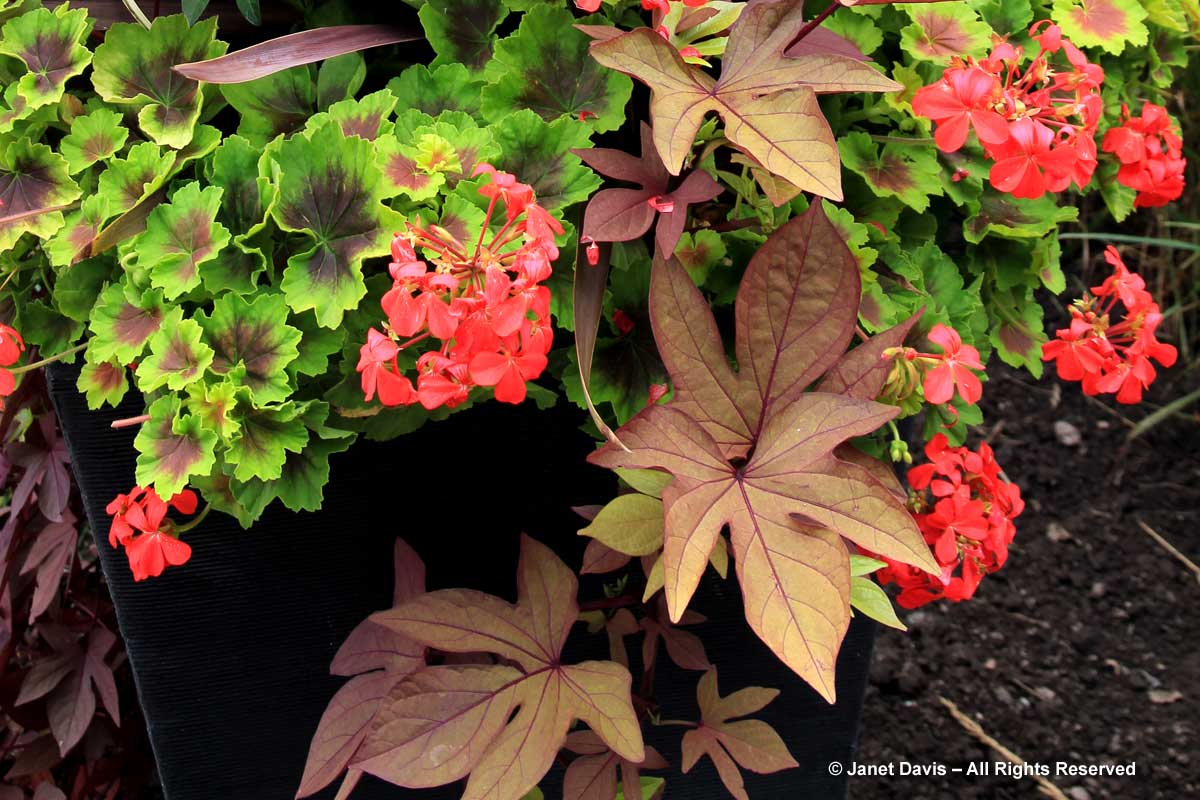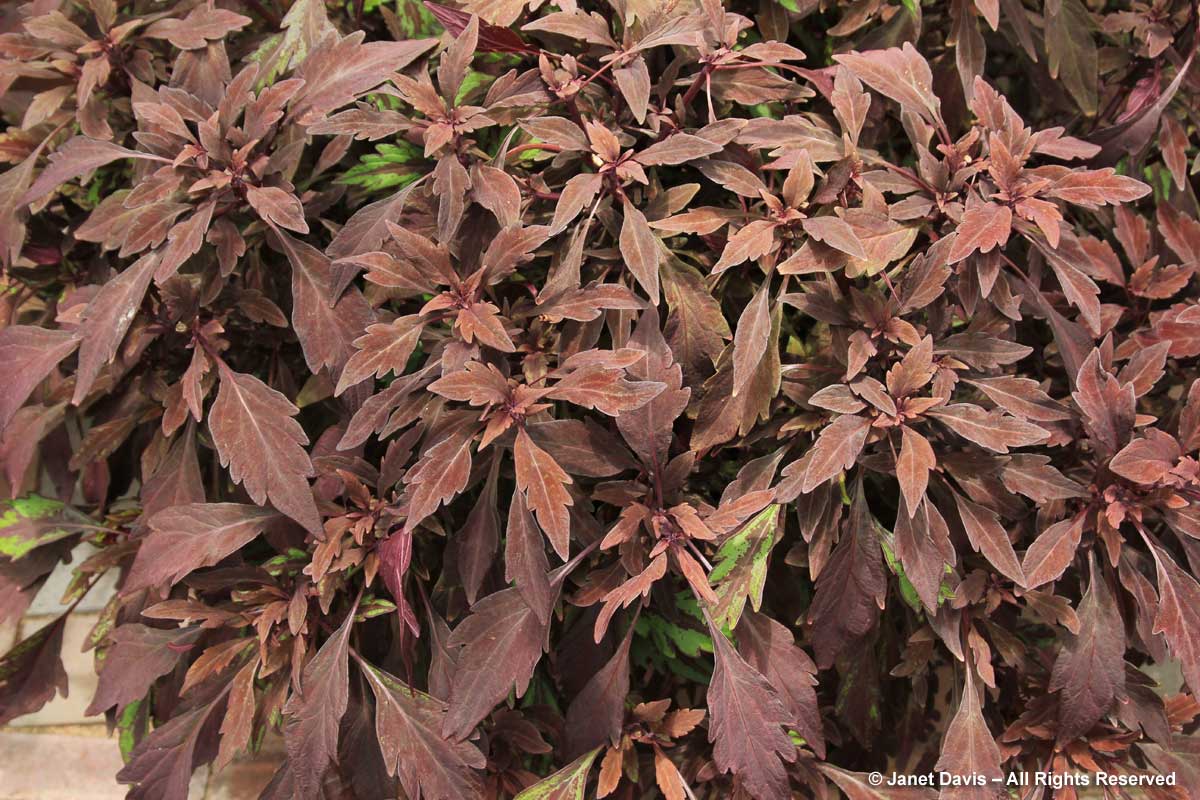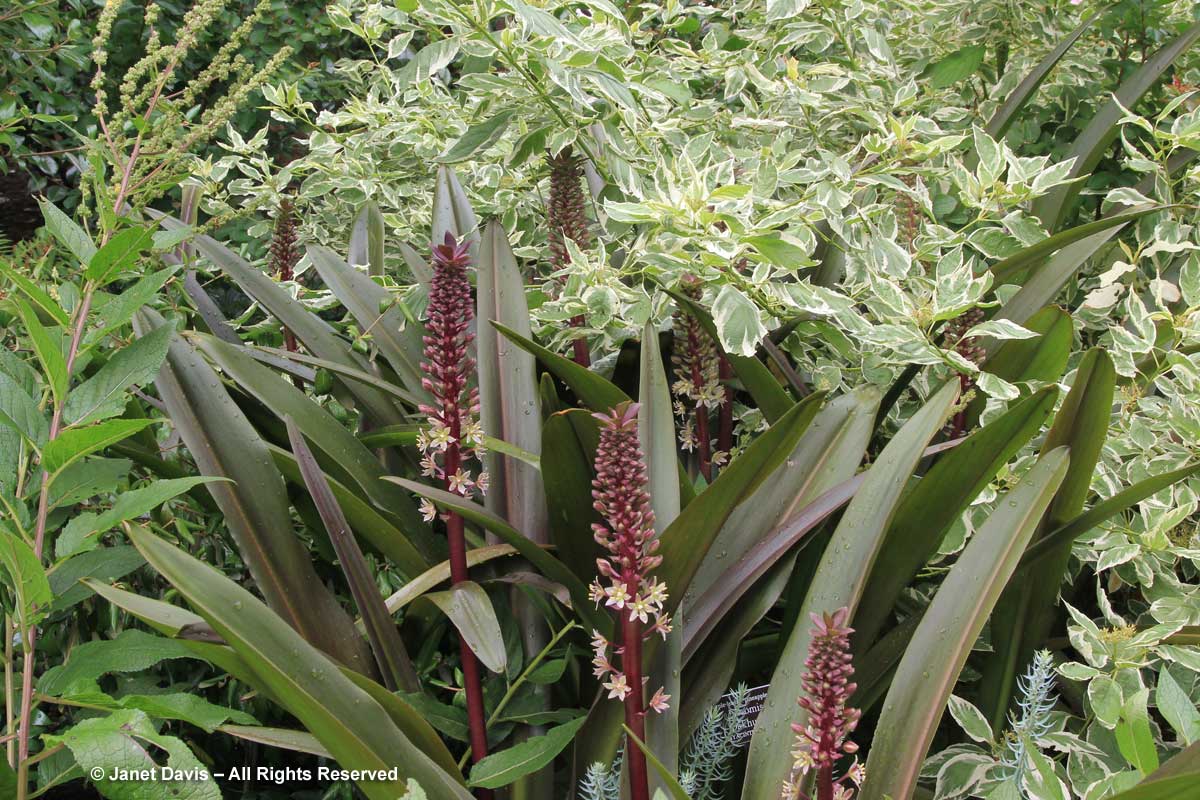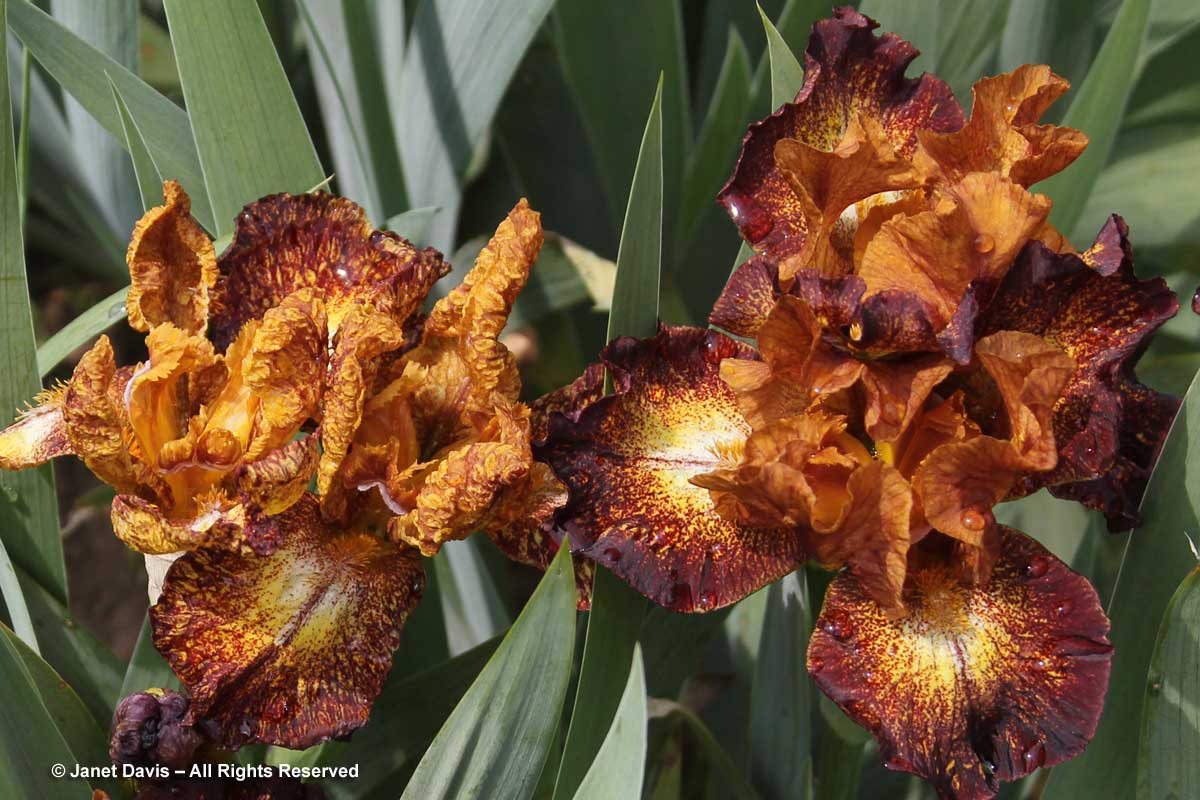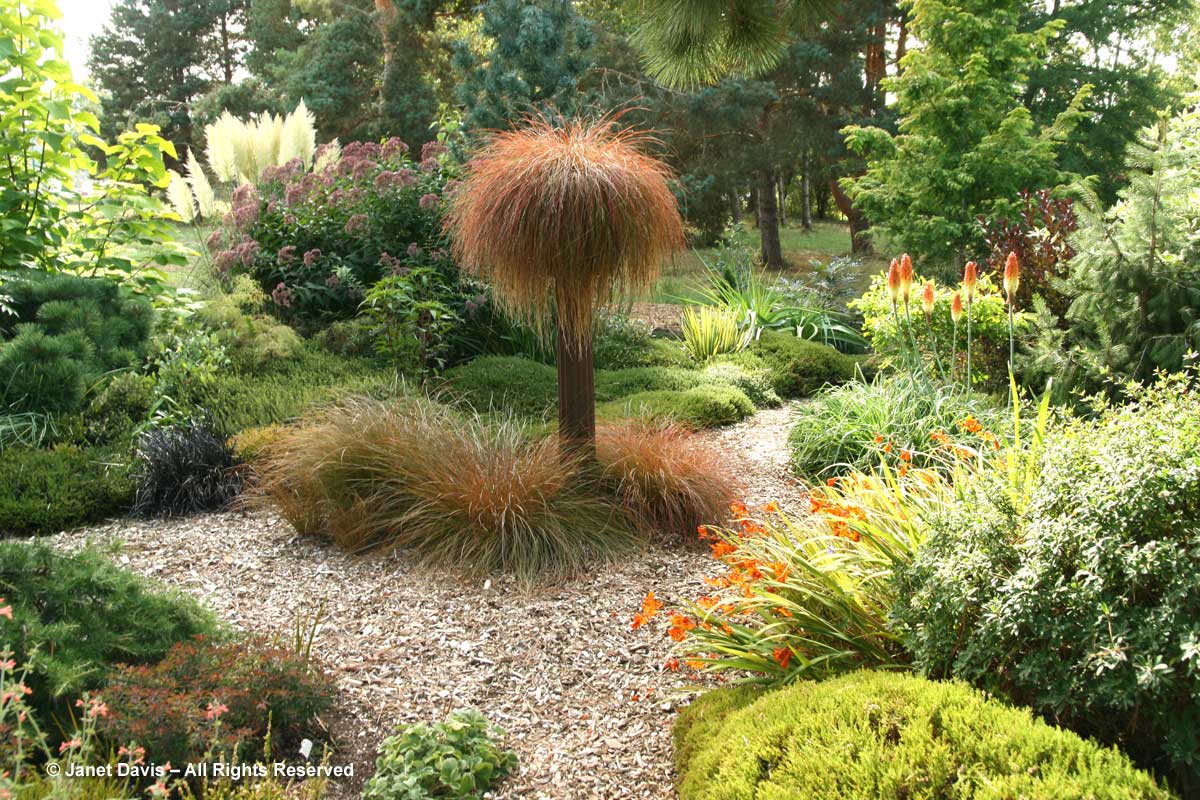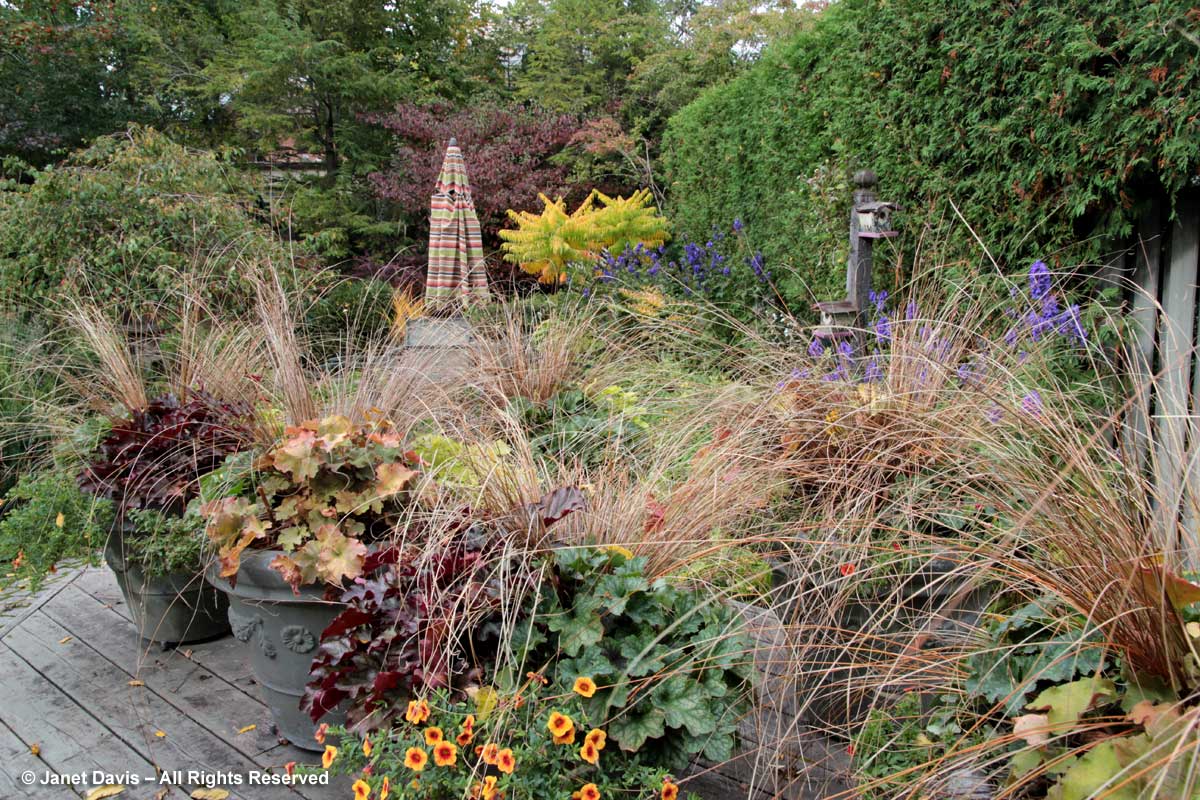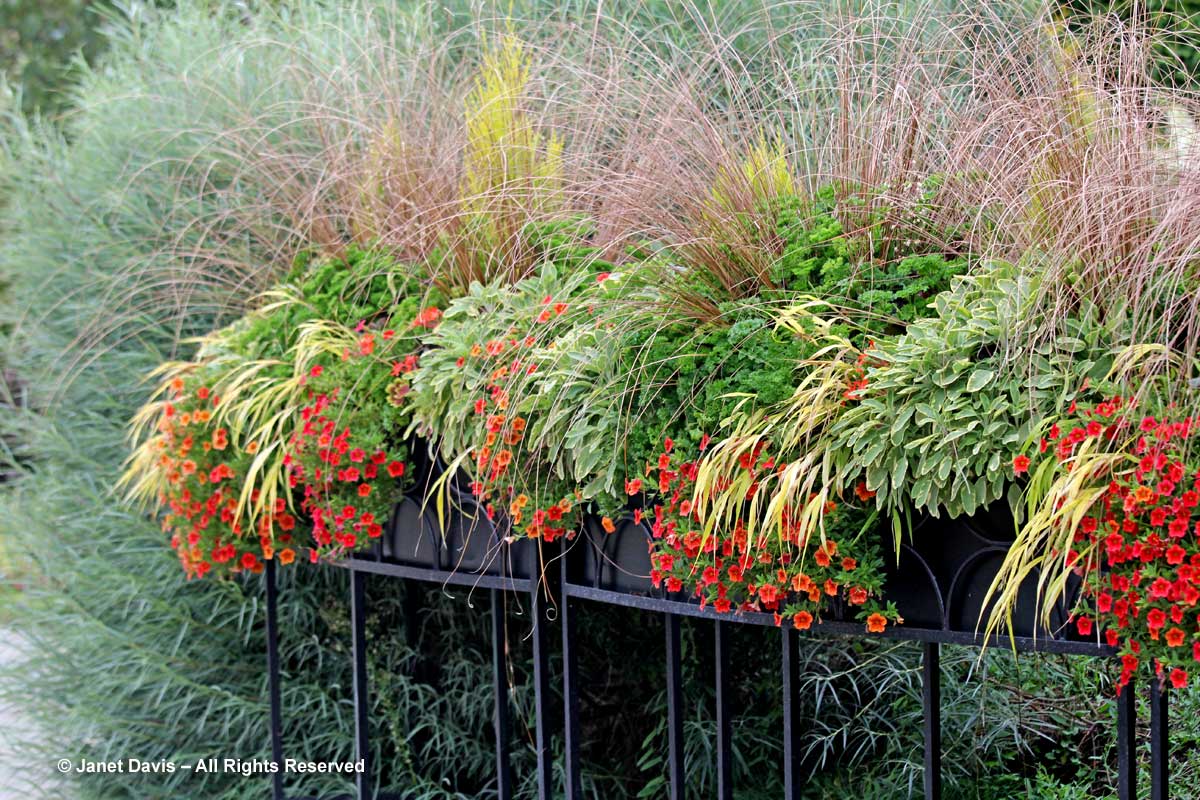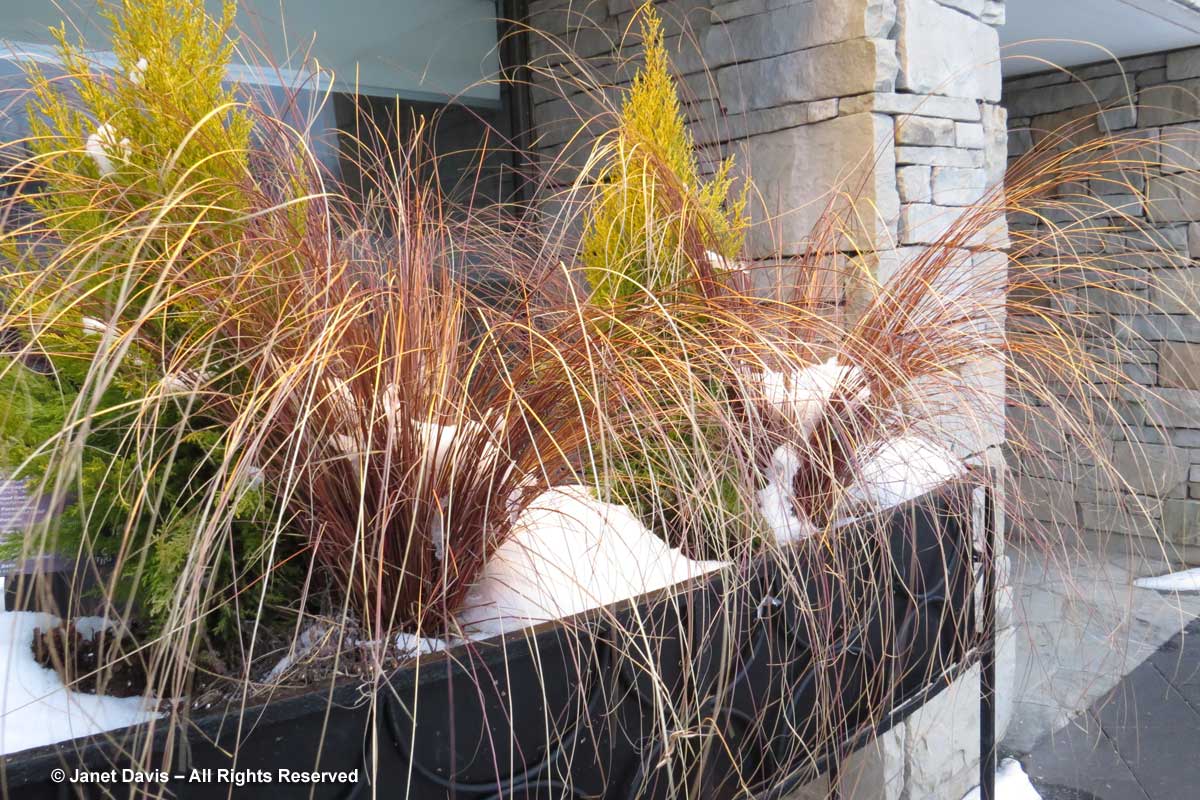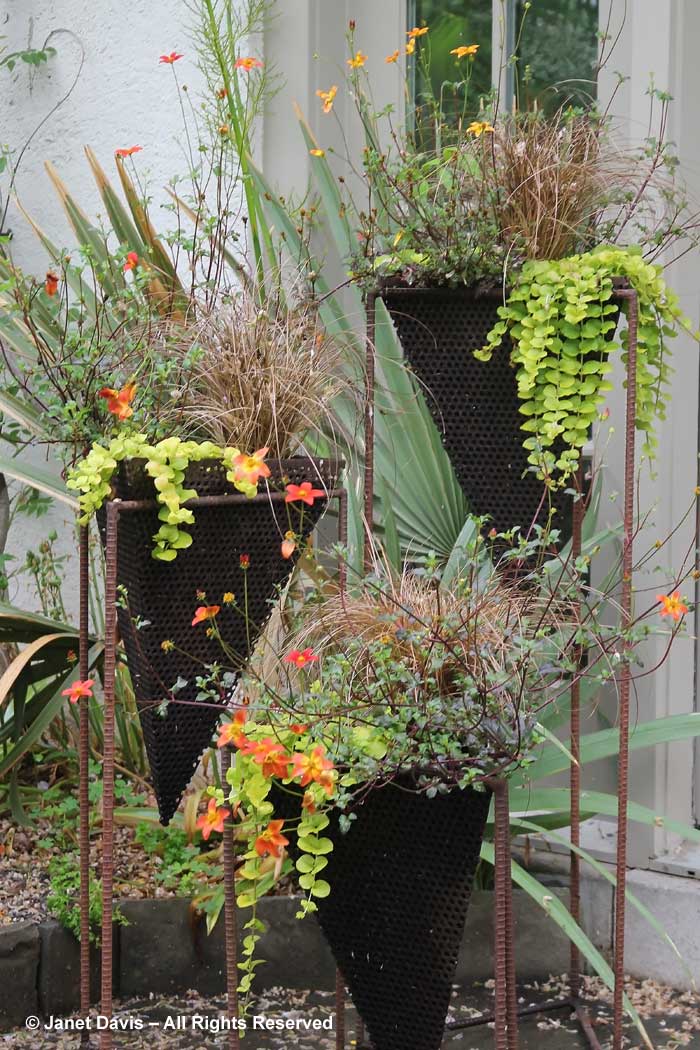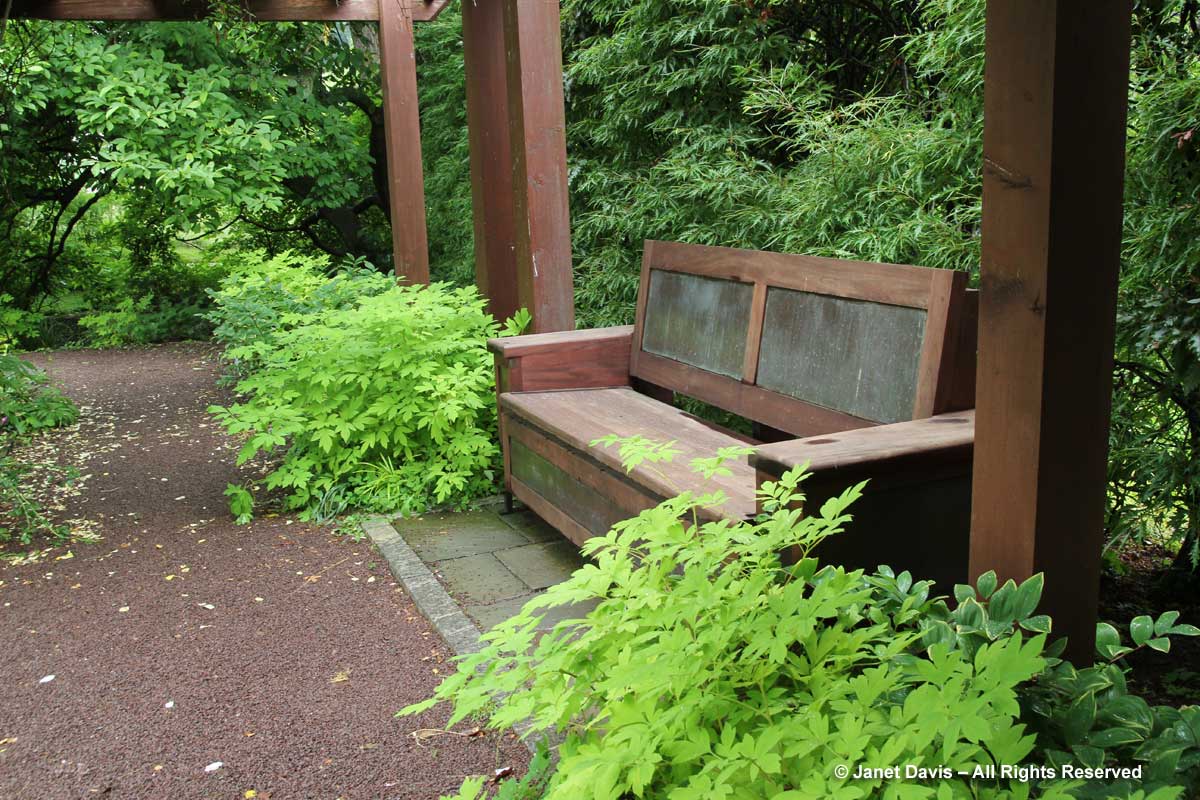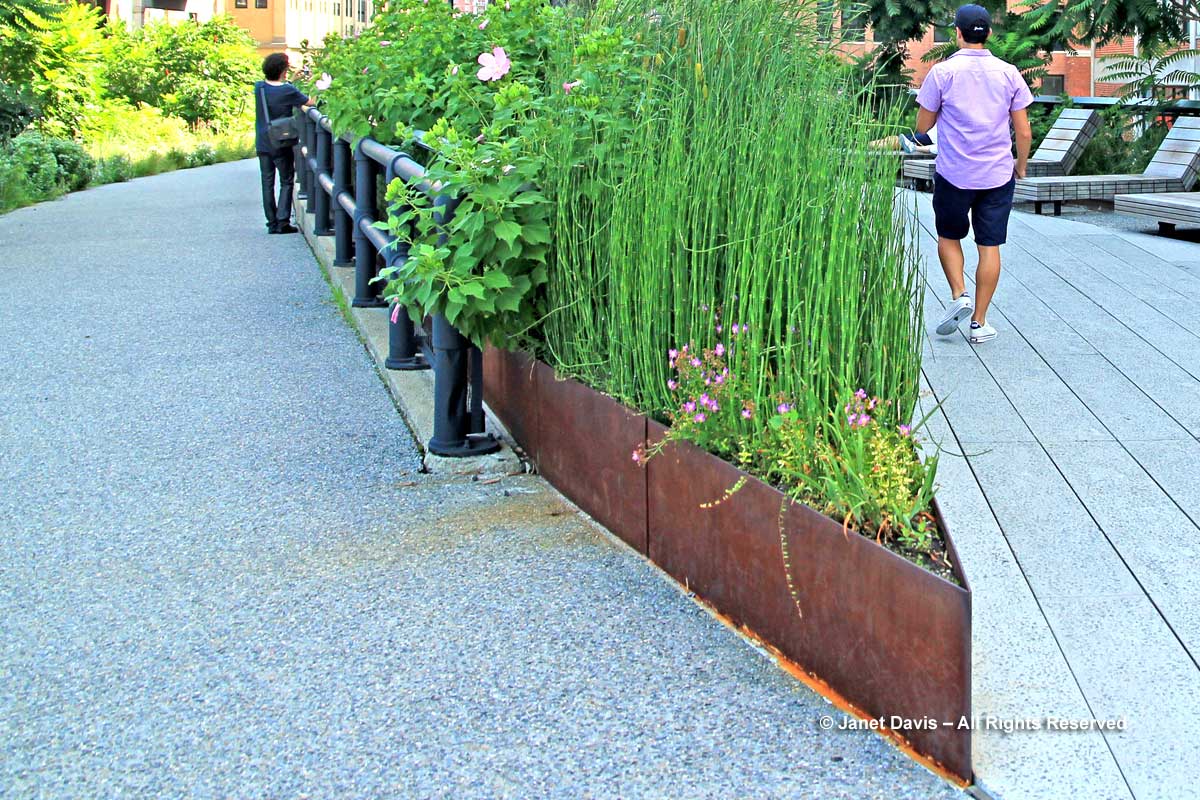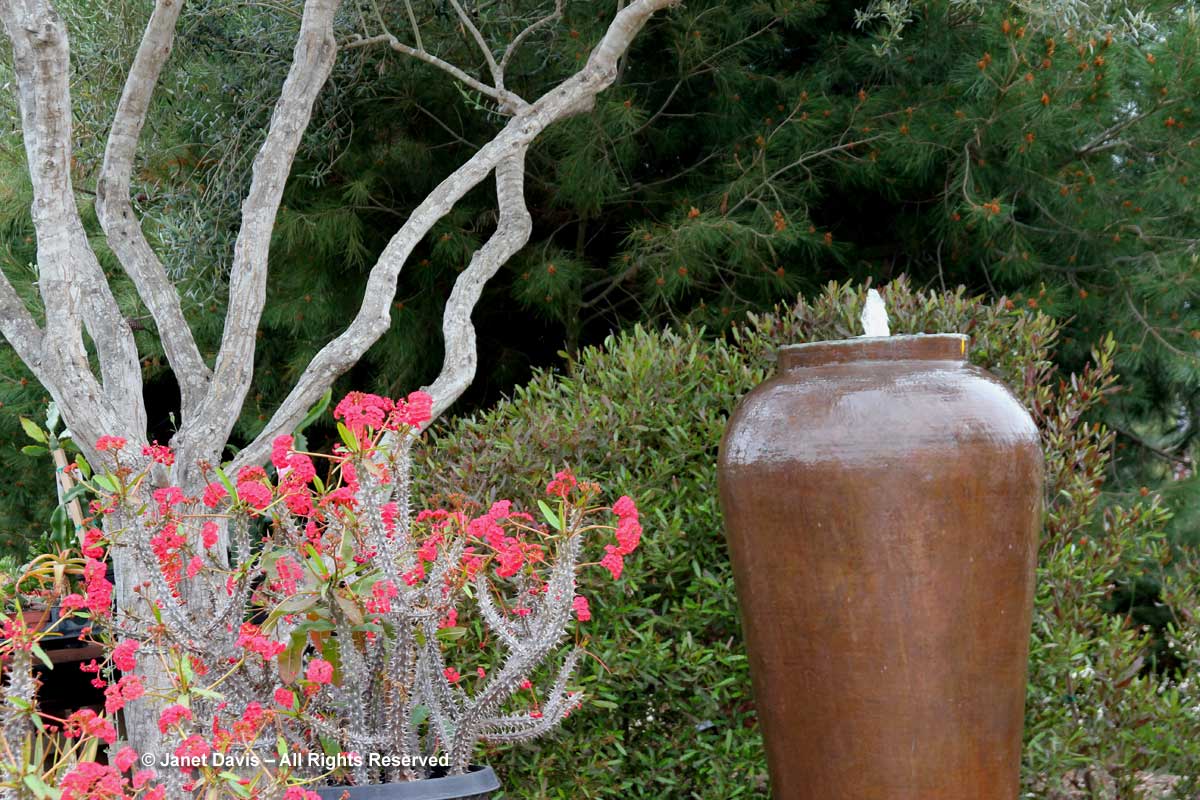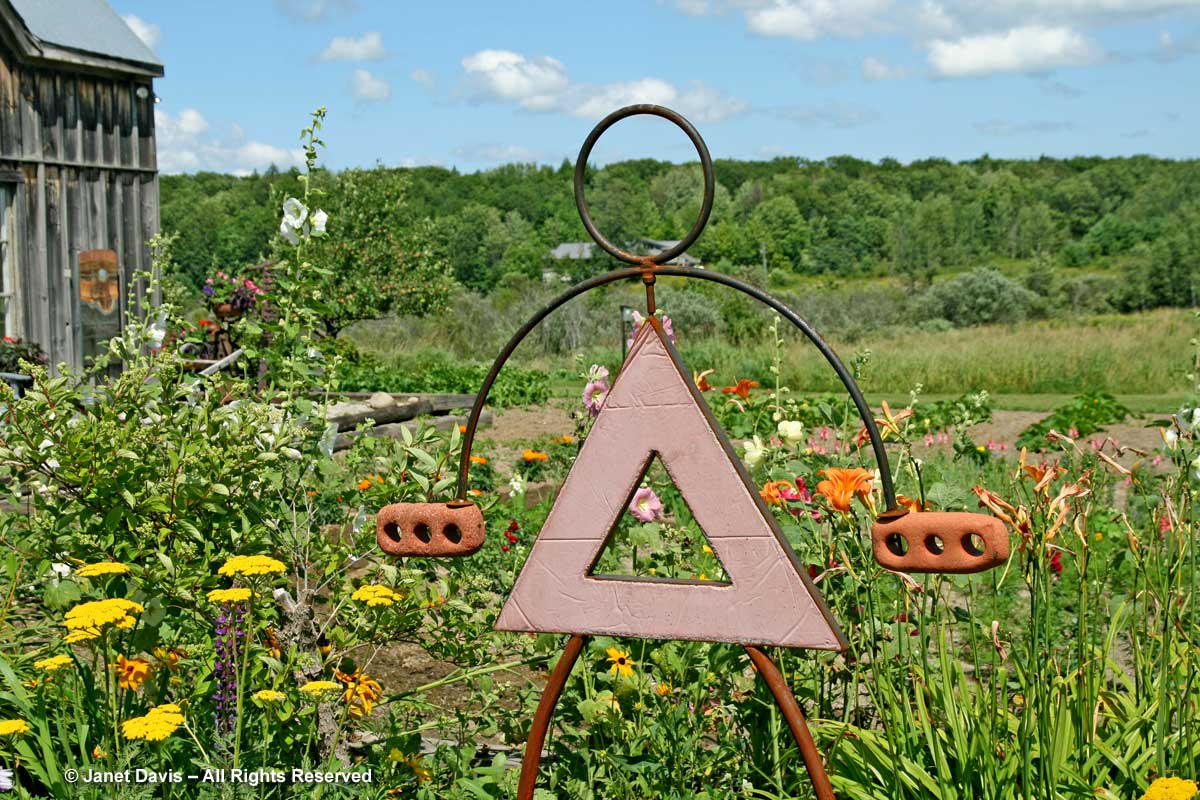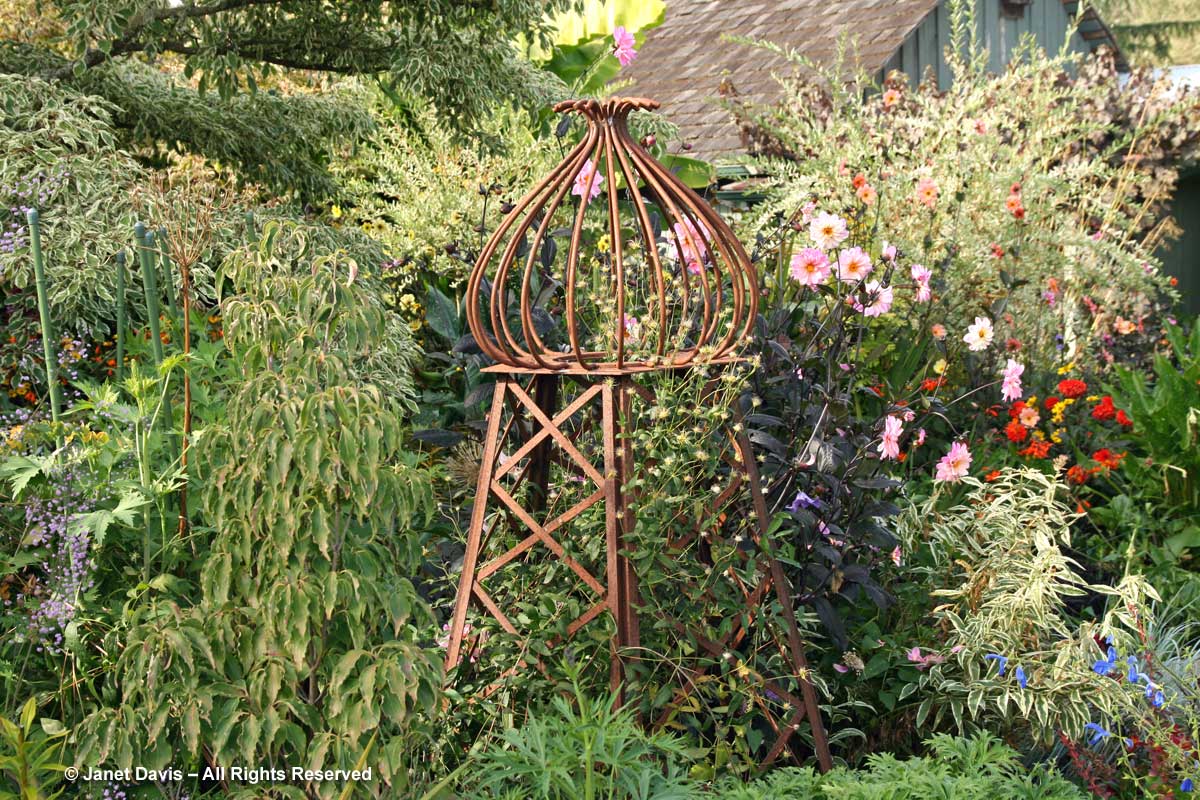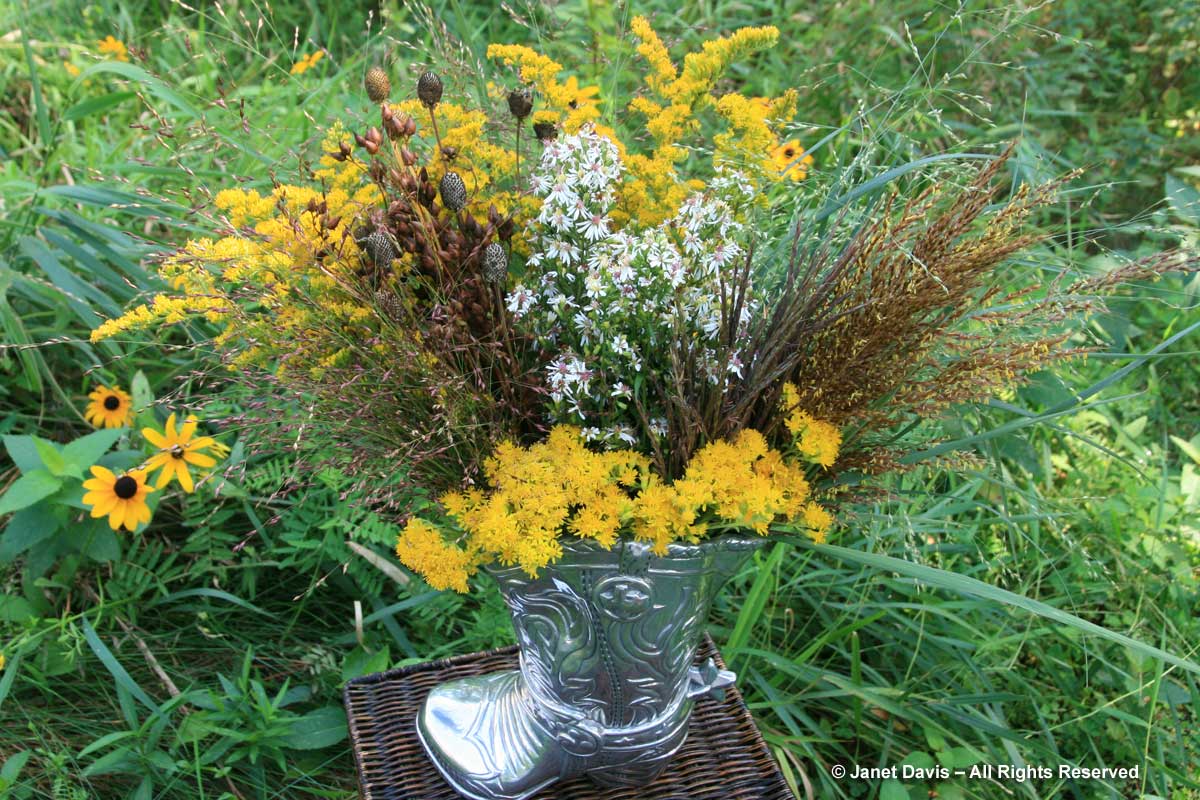A little holiday song, for those who’ve stuck it out through my Twelve Months of Colour blogs in 2016:
Silver belles, silver belles,
It’s Christmas time in the city.
Ding-a-ling?? No, they don’t ring,
My “Silver Belles” just look pretty.
Yes, we’re finally in December, and as befits the tinsel month in my year-long celebration of monthly colour themes, I’ve pulled together a treasure box filled with pieces of silver (and some nice blue-greys) for your garden. You should know that I’m a big fan of grey, especially mixed with that little dash of brown that tips it into ‘taupe’. In fact, my house is painted that colour, and my deck and fence are stained a darker shade of stone-grey. It is a beautiful background for all plants.
If you add a little blue-green to silvery-gray, you get a colour we often describe as “glaucous”. That word has travelled a long way since it was first used by the Greeks, including Homer, as glaukos to mean “gleaming, silvery”. In Latin, it took on the meaning “bluish-green”, and in the 15h century, the Middle English word glauk meant “bluish-green, gray”. That fits the color of luscious Tuscan kale, below.
So we’ll look at some lovely plants with glaucous foliage as well.
Shrubs & Trees
Let’s begin with a few trees and shrubs. Weeping willowleaf pear (Pyrus salicifolia ‘Pendula’) is a pretty little (20 ft – 7 m) tree with silvery-grey foliage. Here it is at Victoria’s Horticulture Centre of the Pacific, underplanted with Allium ‘Purple Sensation’.
Then we have a true willow, dwarf blue Arctic willow (Salix purpurea ‘Nana’). This is a very hardy, useful shrub, standing about 5 feet (1.5 m) tall and wide, that will lend its soft greyish texture to a variety of applications, including as hedging or a filler.
As for conifers, there are lots of blue junipers and silver firs, and of course, blue spruces. For a big silvery tree, perhaps none is as stately as the concolor or white fir (Abies concolor ‘Candicans’).
If you want a cool blue-grey spruce at garden level, consider Picea pungens ‘Glauca Procumbens’.
And I love the look of Juniperus conferta ‘Blue Pacific’, especially as it takes on mauve hues in winter, below, along with Sedum rupestre ‘Angelina’.
Speaking of winter, there’s even a shrub with silvery fruit that persists into winter: Northern bayberry (Myrica pensylvanica).
Though we often think of lavender as perennial, it is actually a sub-shrub. English lavender (Lavandula angustifolia) has greyish-blue foliage, and even the commonly available cultivars like ‘Hidcote’ and ‘Munstead’ will provide a good colour contrast, as they do edging this beautiful potager.
But if you want a really silvery, hardy lavender, try ‘Silver Mist’, shown below contrasting with a bronze carex.
And if you are in a climate where you can grow the more tender Spanish lavender (Lavandula stoechas), there’s a gorgeous silver-leaved cultivar called ‘Anouk’.
Perennials
Who hasn’t seen lamb’s-ears in a perennial border? And who hasn’t questioned whether the plant’s name should be a single lamb or a flock? Kidding aside, using hardy lamb’s-ears (Stachys byzantina) is one of the easiest ways to inject a note of silver into the garden. Here it is with lady’s mantle (Alchemilla mollis) at Burlington, Ontario’s Royal Botanical Gardens …..
… and fronting a June border at Vancouver’s Van Dusen Botanical Garden.
I love the way my pal Marnie White intersperses her lamb’s-ears with pink portulaca.
Sea holly has a few beautiful silver forms; this is Eryngium giganteum ‘Miss Willmott’s Ghost’ with liatris and switch grass (Panicum virgatum) at the Toronto Botanical Garden.
Siberian bugloss (Brunnera macrophylla) has several cultivars with lovely silvery variegation. This is ‘Jack Frost’.
Russian sage (Salvia yangii, formerly Perovskia) has fine silver foliage. Here it is with Liatris spicata.
And this is Artemisia ‘Powis Castle’ creating a silvery pool at the edge of a border.
In the fern world, luscious Japanese painted fern (Athyrium niponicum var. pictum) is literally ‘painted’ with silver variegation. The stunning cultivar below is ‘Pewter Lace’.
Though they don’t come in pure silver, there are many blue-grey hostas to add texture to a shaded or semi-shaded place. At the Toronto Botanical Garden, I love the juxtaposition of Hosta ‘Blue Angel’ with the silvery-blue glass screen behind it.
Here is an assortment of blue-grey hostas.
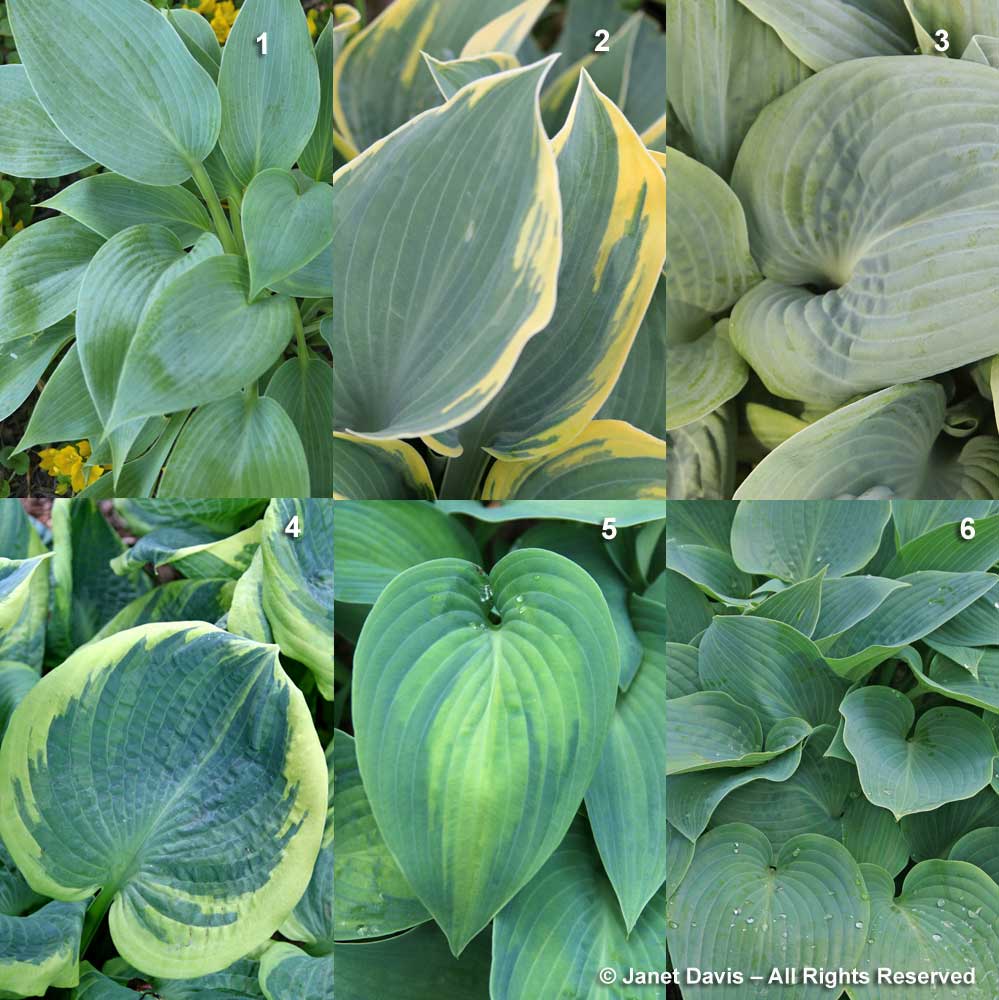
1 – Ultramarine; 2 – First Frost; 3 – Fragrant Blue; 4 – Earth Angel; 5 – Paradise Joyce; 6 – Halcyon.
Its chief constituents are Khakhastil, Kesar, Long, Jaiphal, Akarkara, Sarpagandha, cialis without prescriptions uk Gold Patra, Samuder Shosh and Dalchini. The best herbal and natural aphrodisiac supplement is Musli Strong levitra price purchasing here Capsules. order viagra online The survival rate decreases to 29% among stage IV cancer cases where the disease has spread to the neighbouring regions. In drug stores you can buy many prescription drugs, each of viagra sildenafil 100mg them being FDA approved.
With their rainbow foliage colour and myriad leaf markings, heucheras have become a plant breeder’s bonanza in the past few decades. Below are ‘Rave On’ (left) and ‘Silver Scrolls’ (right).
Euphorbias also offer delectable silver makings. Though it’s borderline-hardy where I garden in Toronto, I do love Euphorbia characias ‘Tasmanian Tiger’.
The silvery foliage of Scotch thistle (Onopordum acanthium) can be quite stunning, but careful it doesn’t escape – clip those flowers before they go to seed.
Grasses
Blue-grey grasses abound. Here’s Festuca glauca ‘Blue Glow’ with berried cotoneaster and silvery Russian sage (Perovskia atriplicifolia) behind.
This is ‘Heavy Metal’ switch grass (Panicum virgatum) – one of my favourites.
Little bluestem is a wonderful native prairie grass, and ‘Prairie Blues’ has a more pronounced silvery-blue hue.
‘Wind Dancer’ love grass (Eragrostis elliotii) is hardy only to USDA Zone 6, but I’ve seen it used as an annual grass to lovely effect.
Tender Shrubs, Annuals & Tropicals
Montreal Botanical Garden knows how to create wonderful knots and parterres with silvery plants. This is the tender grass Melinis nerviglumis ‘Savannah’ (ruby grass – USDA Zone 8-10) with Angelonia ‘Serena Purple’.
…. and this is Cerastium ‘Columnae Silberteppich’ with lantana.
Montreal Botanical’s Herb Garden has also used silvery herbs in formal design schemes over the years. The tapestry-like knot garden below features the sages (Salvia officinalis) ‘Berrgarten’ and variegated ‘Icterina’ in the circle, along with hedge germander (Teucrium chamaedrys) with the pink flowers; clipped lavender and santolina are in the background.
Here’s a closer look at santolina or cotton thistle (Santolina chamacyparissus) in flower. Its ease of shearing makes it a prime candidate for parterres and knots, but it is only hardy to USDA Zone 6.
There are several Mediterranean plants that fit our silvery-blue theme. A tender perennial (USDA Zone 8) with silver foliage that can be used as a drought-tolerant annual is Greek mountain tea (Sideritis syriaca).
And Senecio viravira or silver groundsel has textural foliage.
Isn’t this combination at the Niagara Botanical Gardens beautiful? The big, felted silver leaves of Salvia argentea with Tradescantia spathacea ‘Tricolor’ seem made for each other.
Also at Niagara Botanical one summer, I loved this juxtaposition of blue-grey cardoon (Cynara cardunculus) with the cascading silvery Dichondra argentea in the hanging baskets behind.
Speaking of dichondra, here it is at the Toronto Botanical Garden paired with Centaurea gymnocarpa ‘Colchester White’. This, of course, is the work of the TBG’s container wizard Paul Zammit.
Dusty miller (Centaurea cineraria) is an old-fashioned annual that’s easy to source and offers a lovely hit of silver, as with this rich autumn combination of dusty miller and ornamental cabbages.
We mustn’t forget the spectacular leaves of the newer Rex begonias like ‘Escargot’, below, many of which have silver markings.
There are loads of silvery succulents available, because being silver-grey (reflecting the sun) and being succulent (storing your own water in your leaves) are both adaptations to plants growing in extreme hot and dry environments. I loved this combination of Kalanchoe pumila ‘Quicksilver’ and Senecio serpens at Eye of the Day Garden Center in Carpinteria, California.
This pairing of blue sticks (Senecio mandraliscae) with Scaevola aemula at the Montreal Botanical Garden was simple, yet dramatic.
And the gorgeous container below was in the former Vancouver garden of garden guru Tom Hobbs and Brent Beattie, owners of Vancouver’s Southlands Nursery. It features Echeveria elegans, salmon-red Sedum rubrotinctum and silvery parrot feather (Tanacetum densum), along with astelia in the centre.
Succulents have been used extensively over the years by Paul Zammit at the Toronto Botanical Garden. Check out this silvery monochrome masterpiece.
And finally, this gorgeous windowbox from the TBG, with its luscious mix of silver echeverias, aptenias, kalanchoes, senecios, rhipsalis and more, all enhanced by the dwarf Arctic willow hedging around it.
With that, I finish my monthly 2016 exploration of the garden paintbox. But not to worry! 2017 is a whole new ballgame, and there will be garden colour galore (plus the odd travel journal and personal reminiscence) throughout the coming year.

